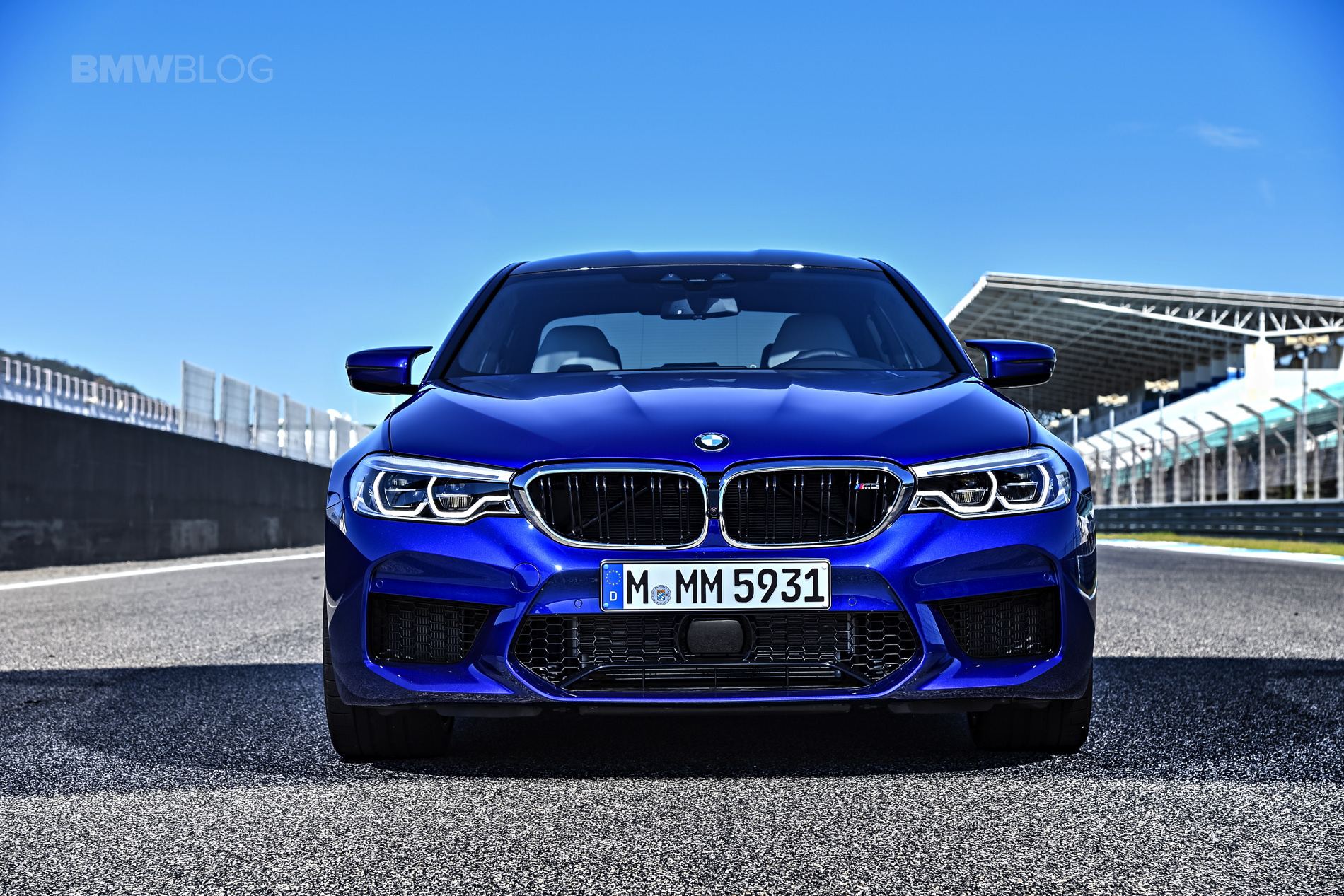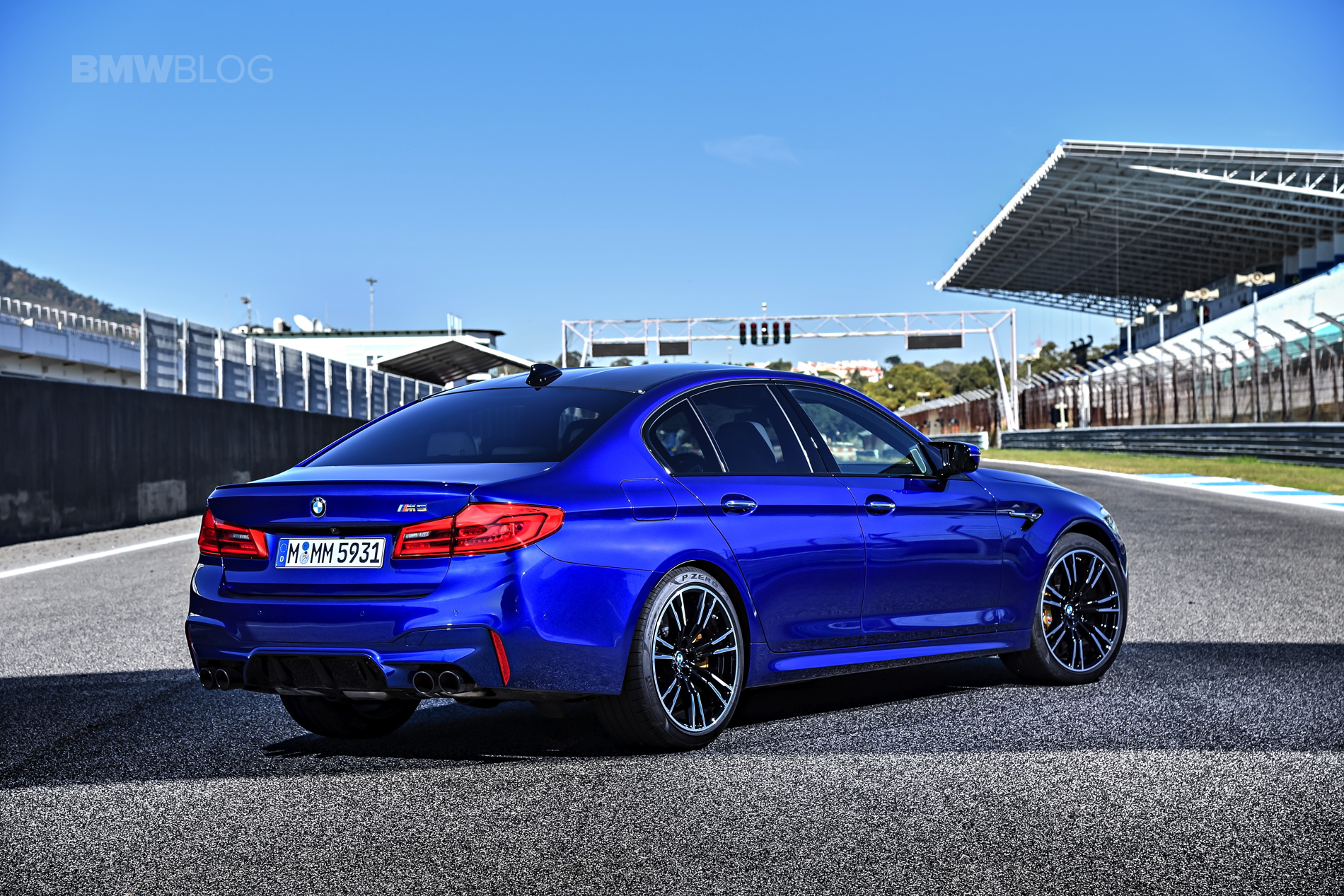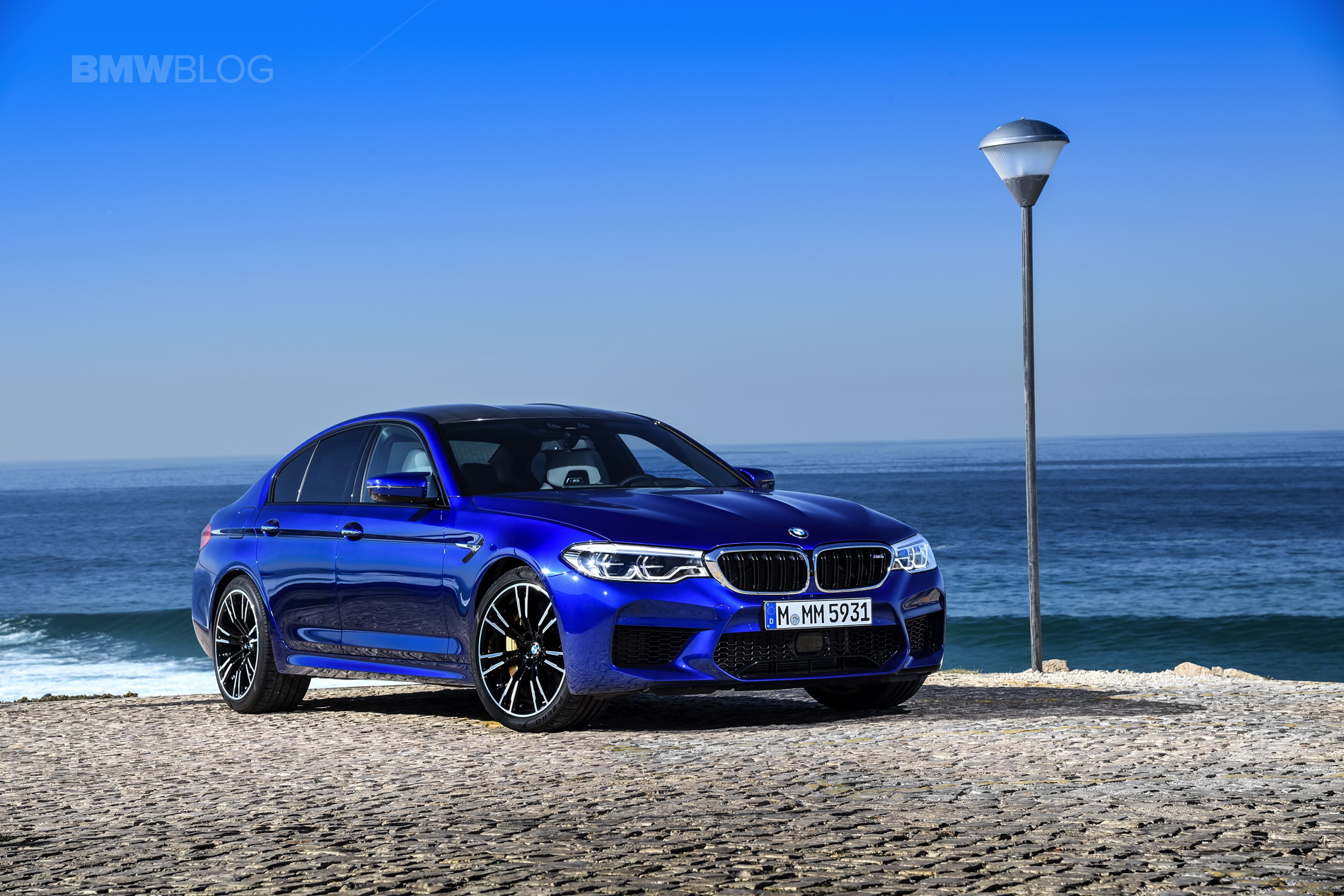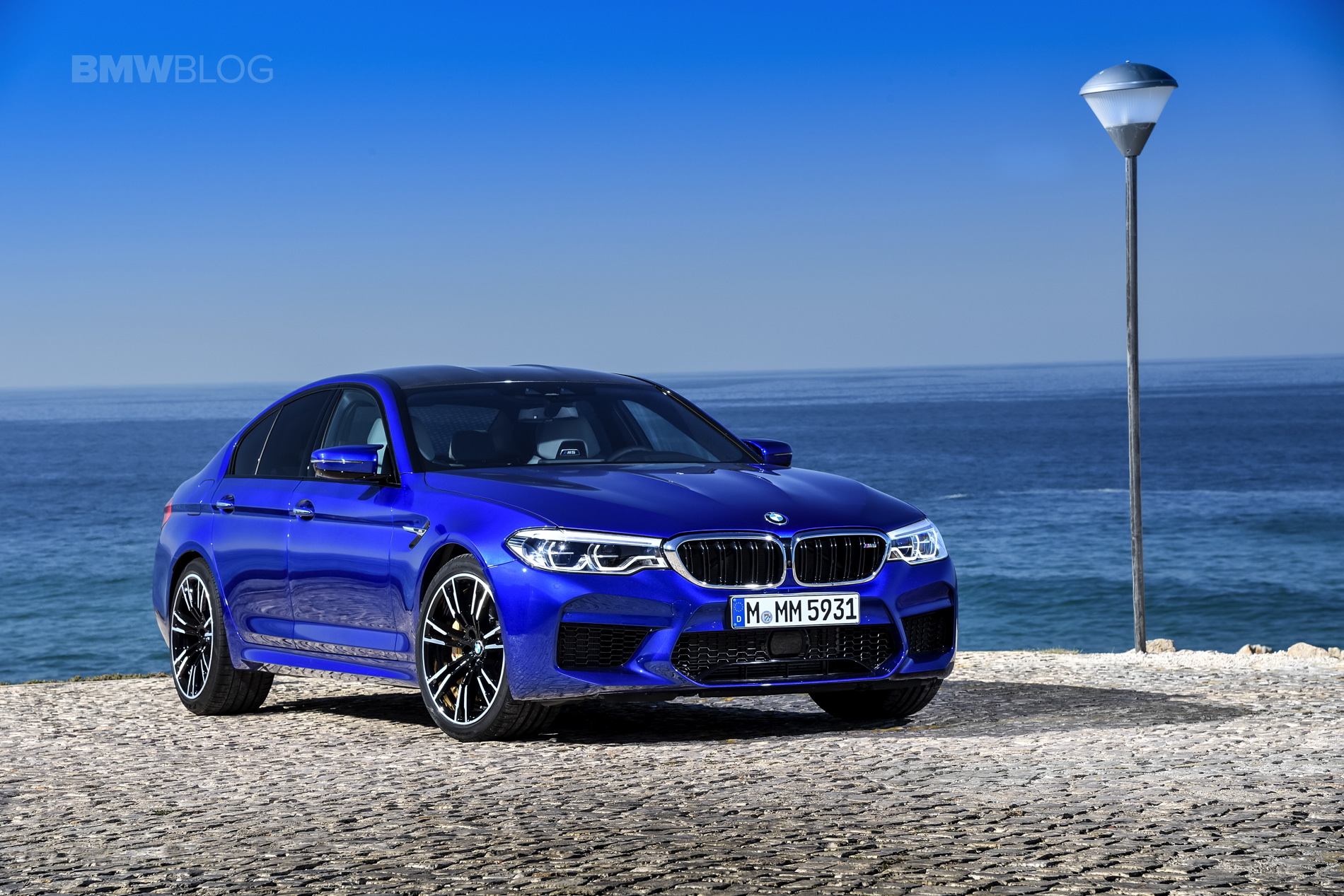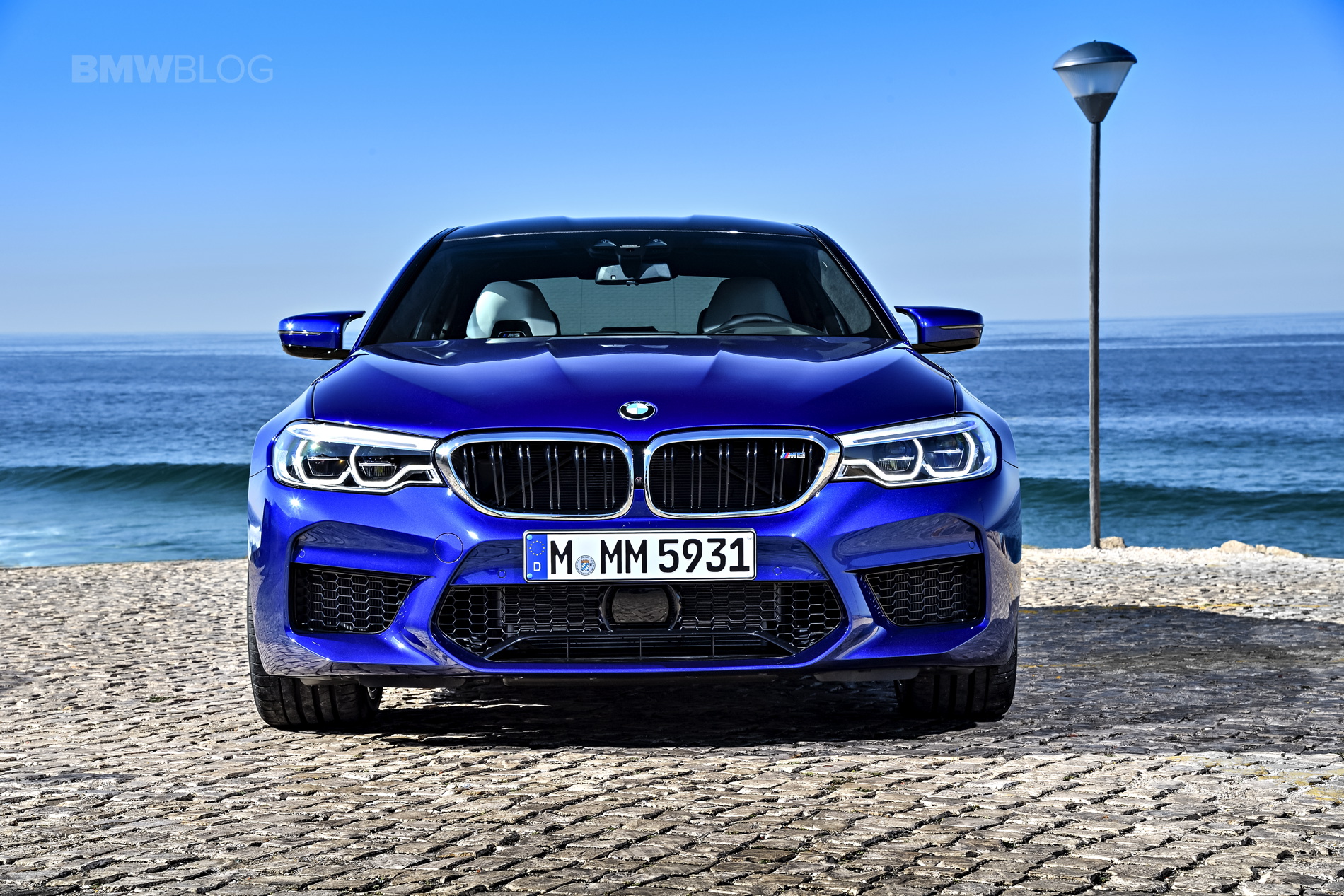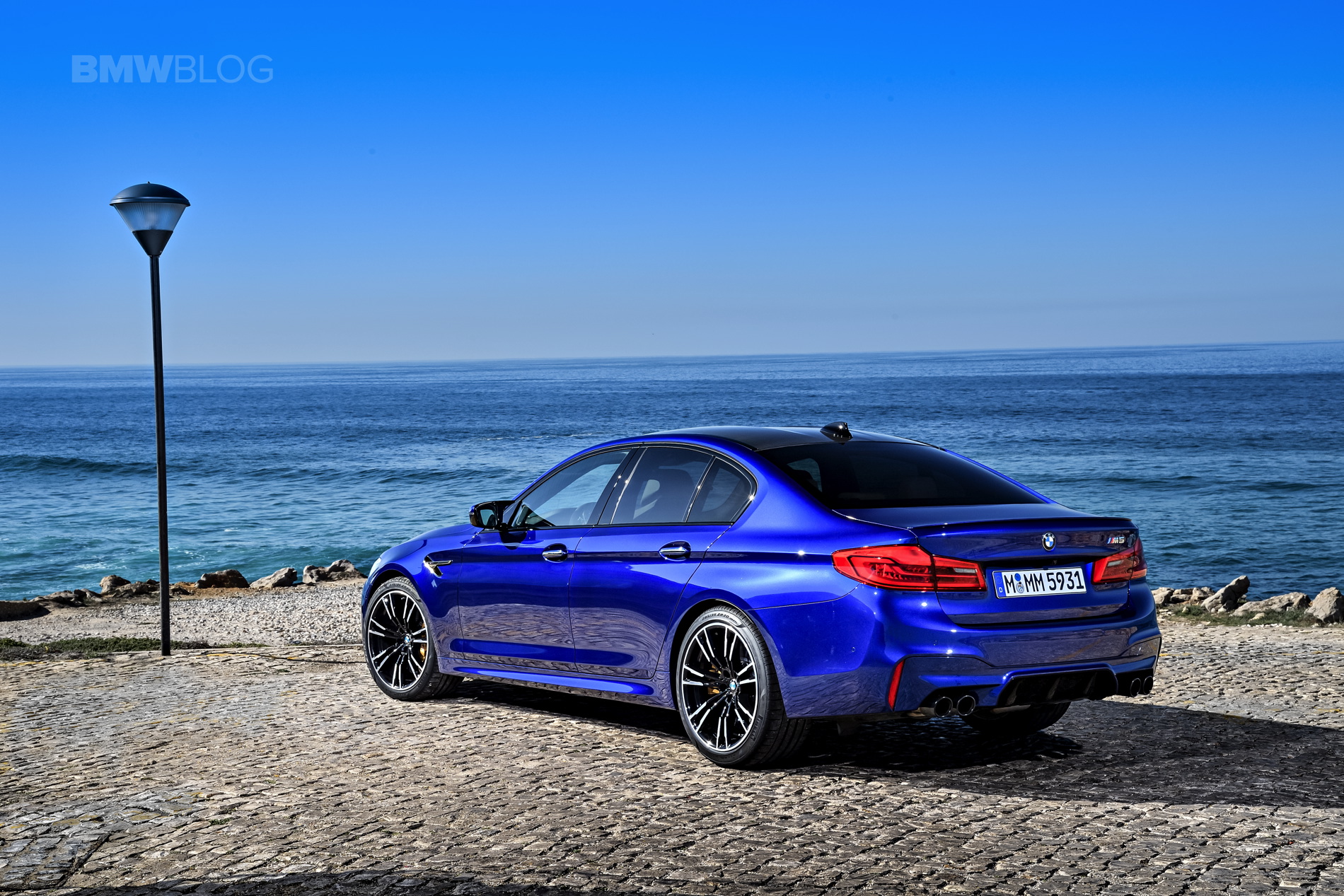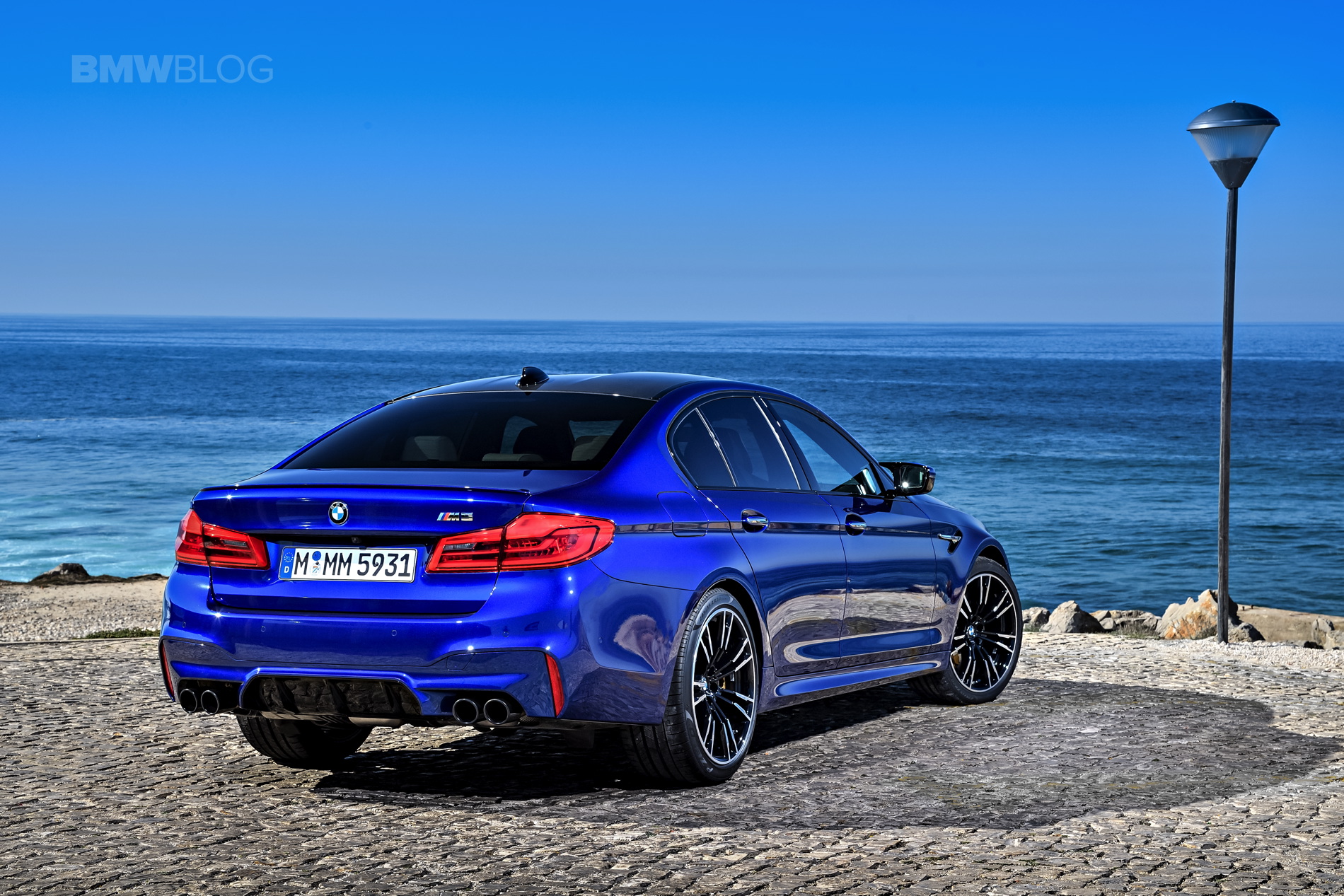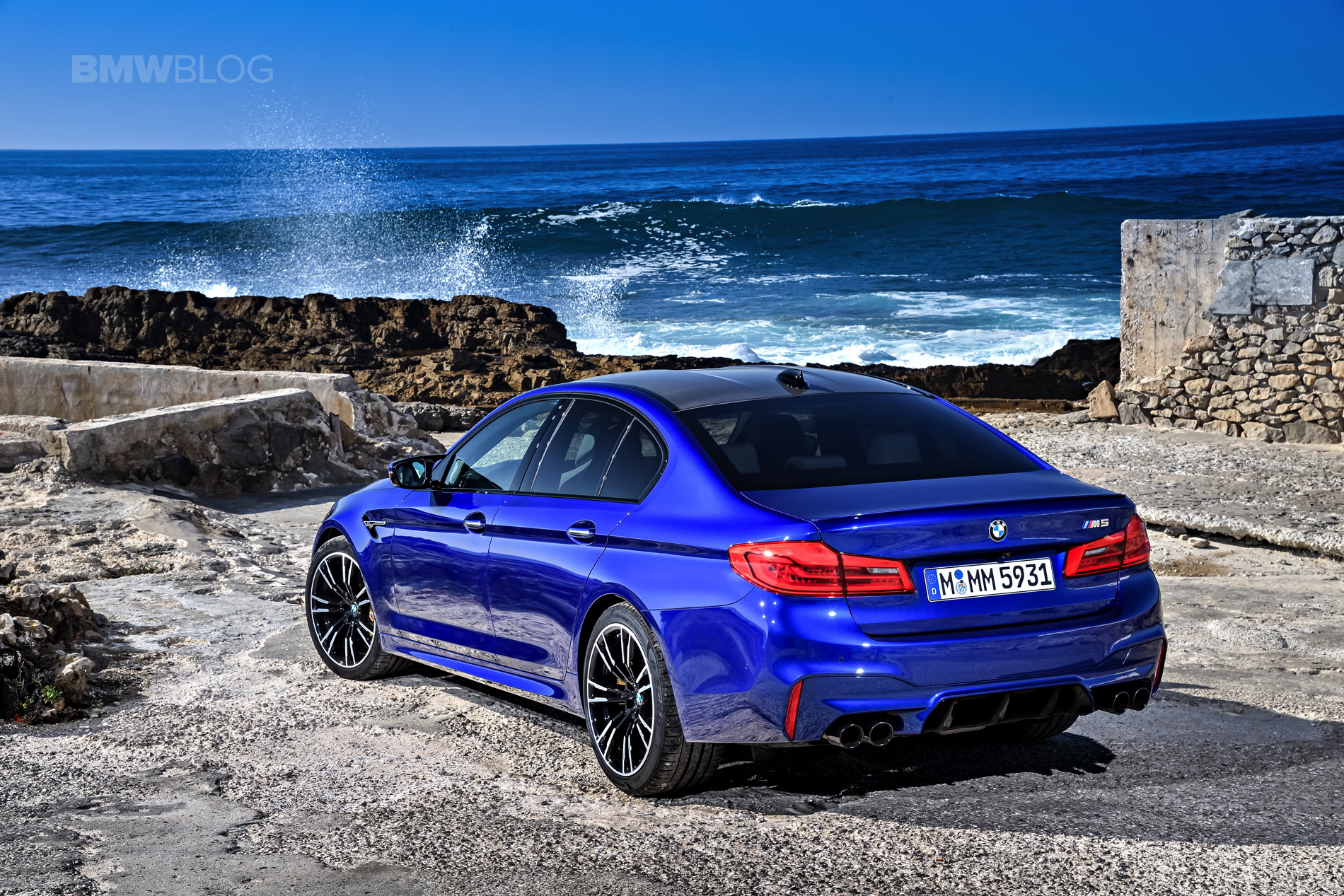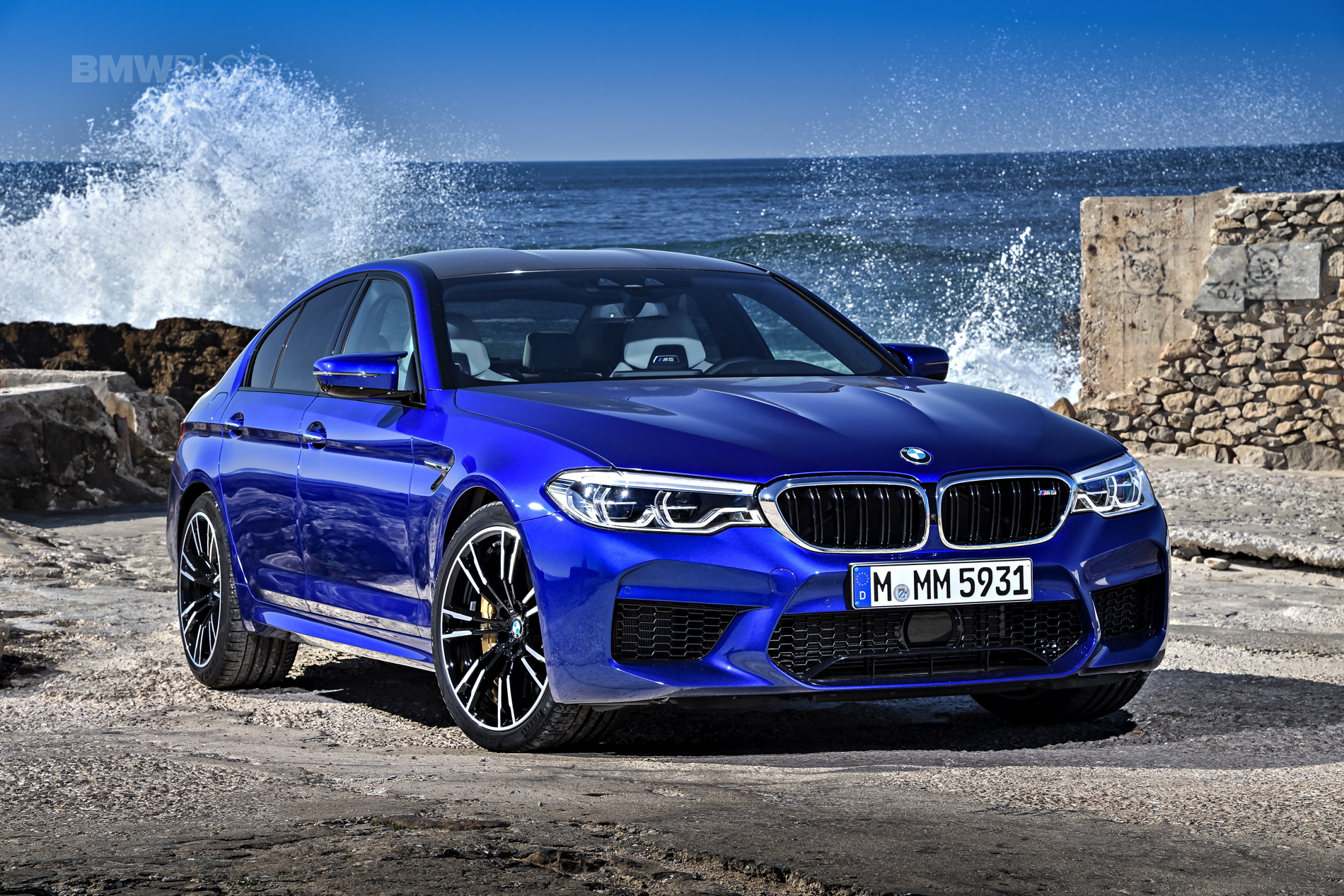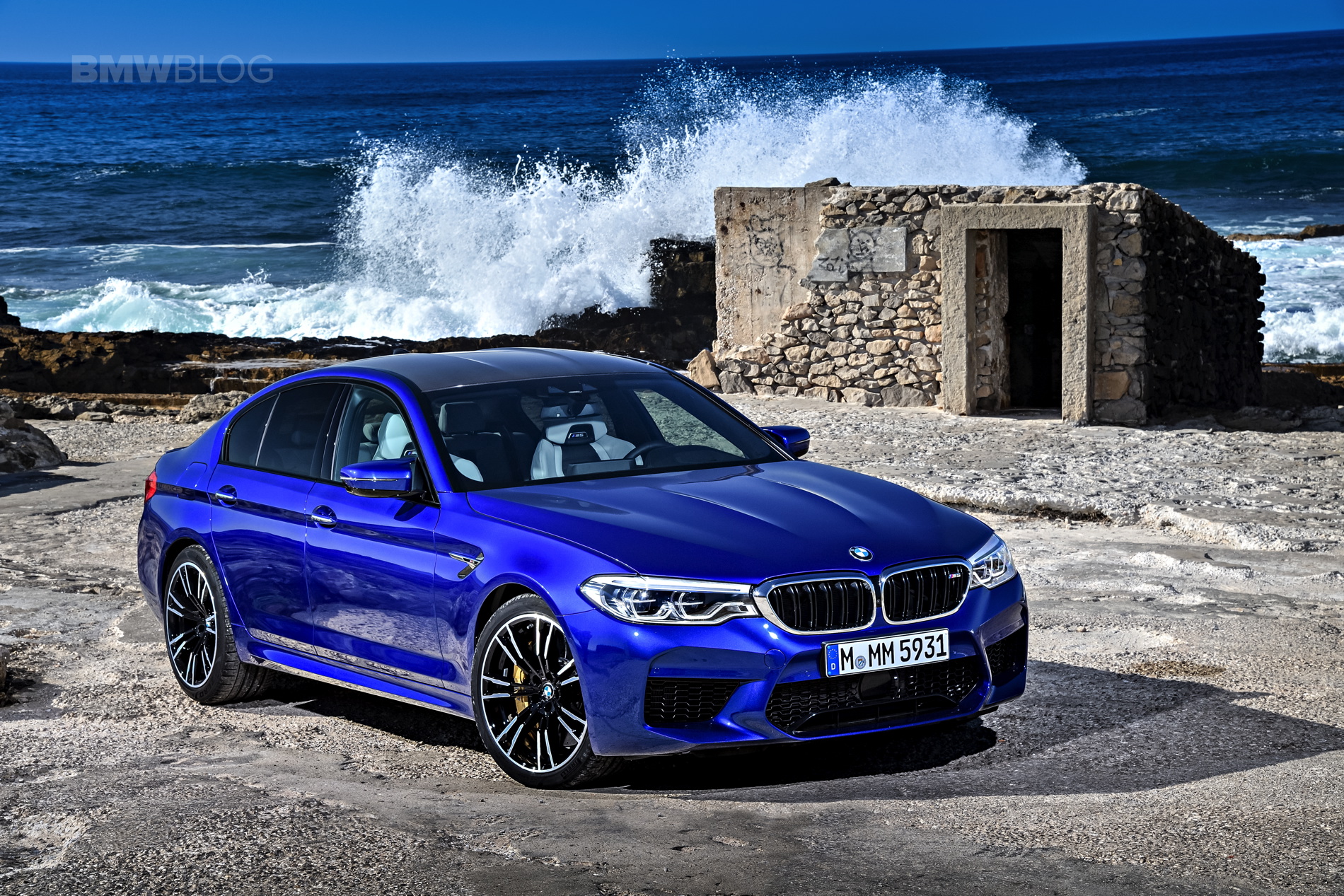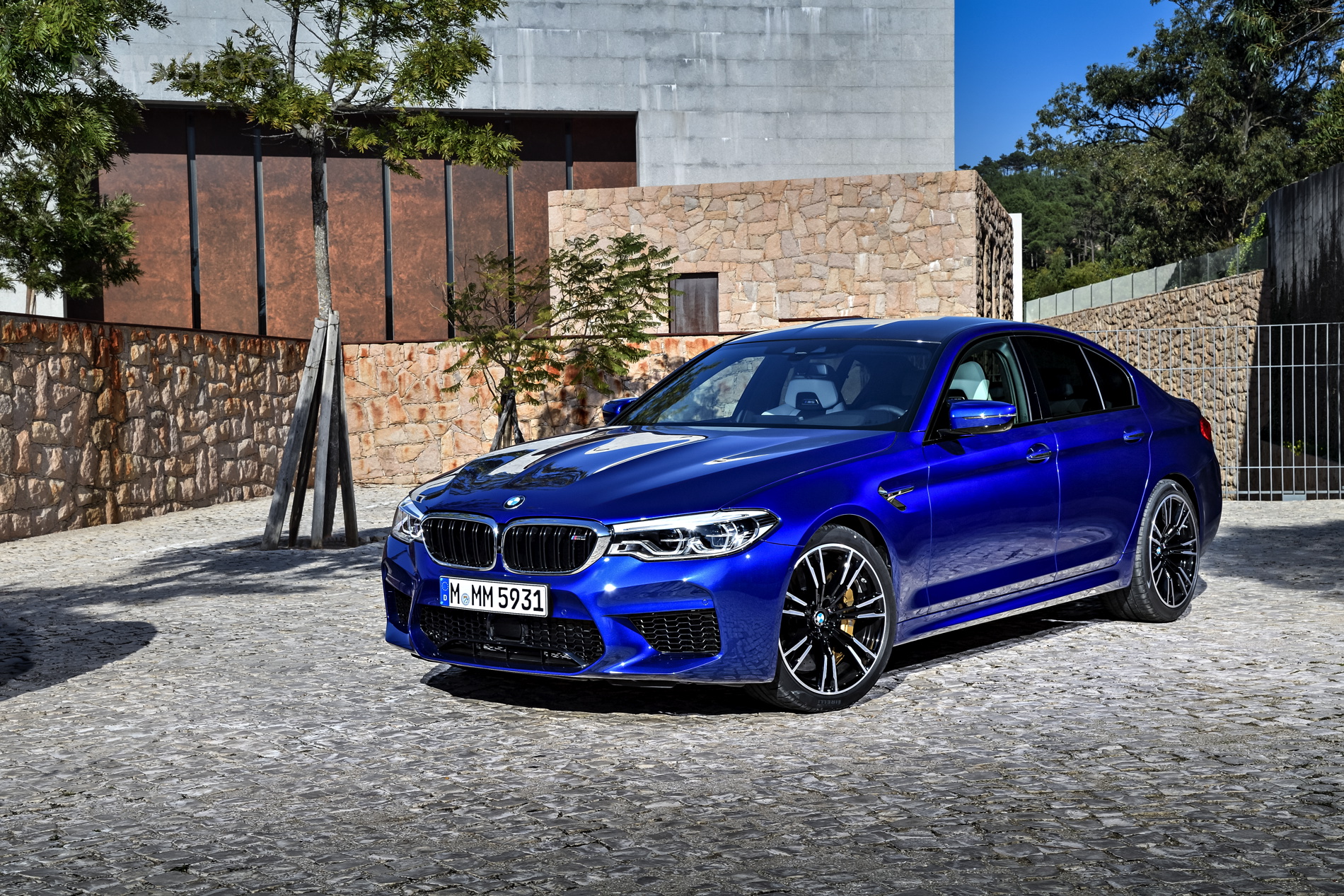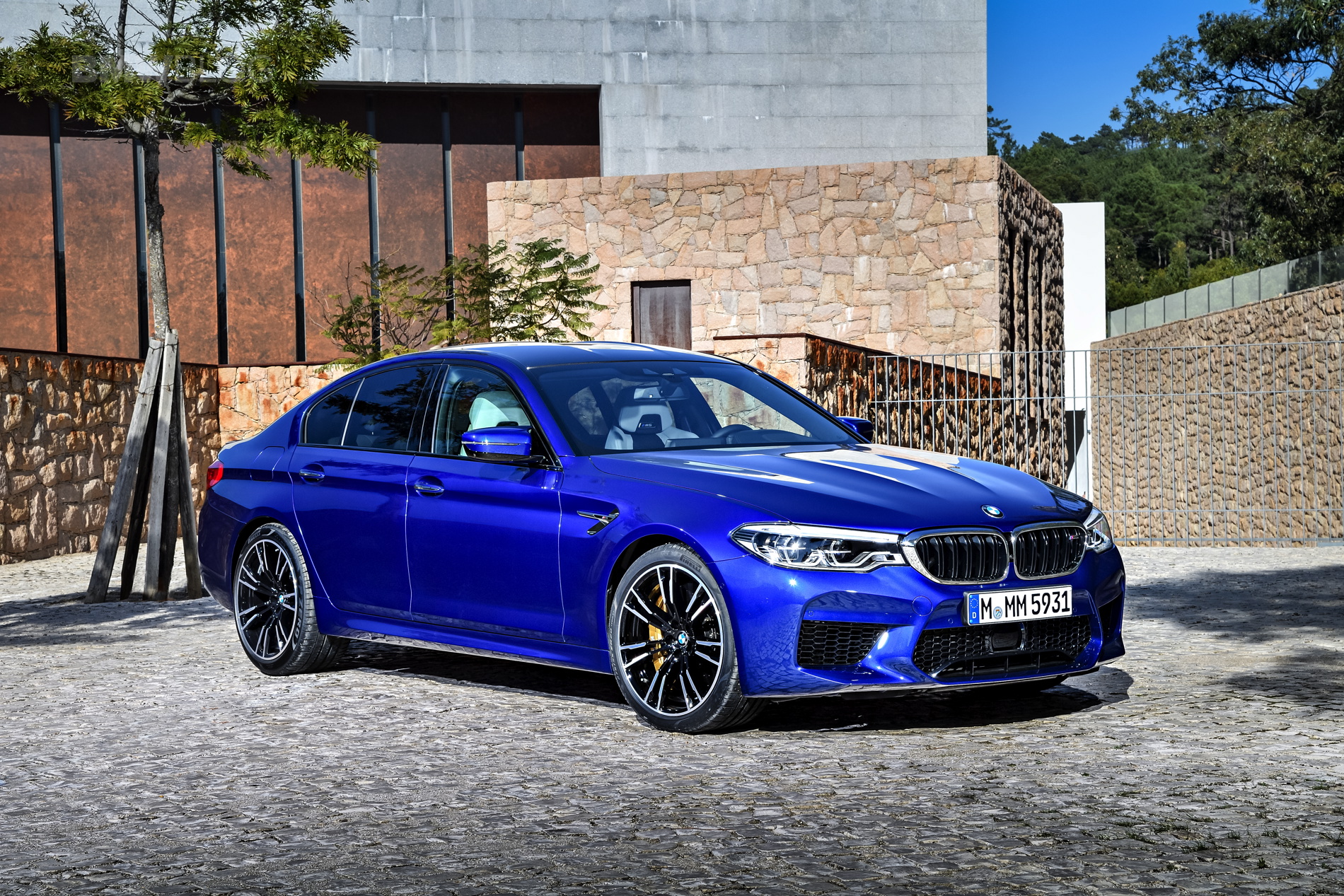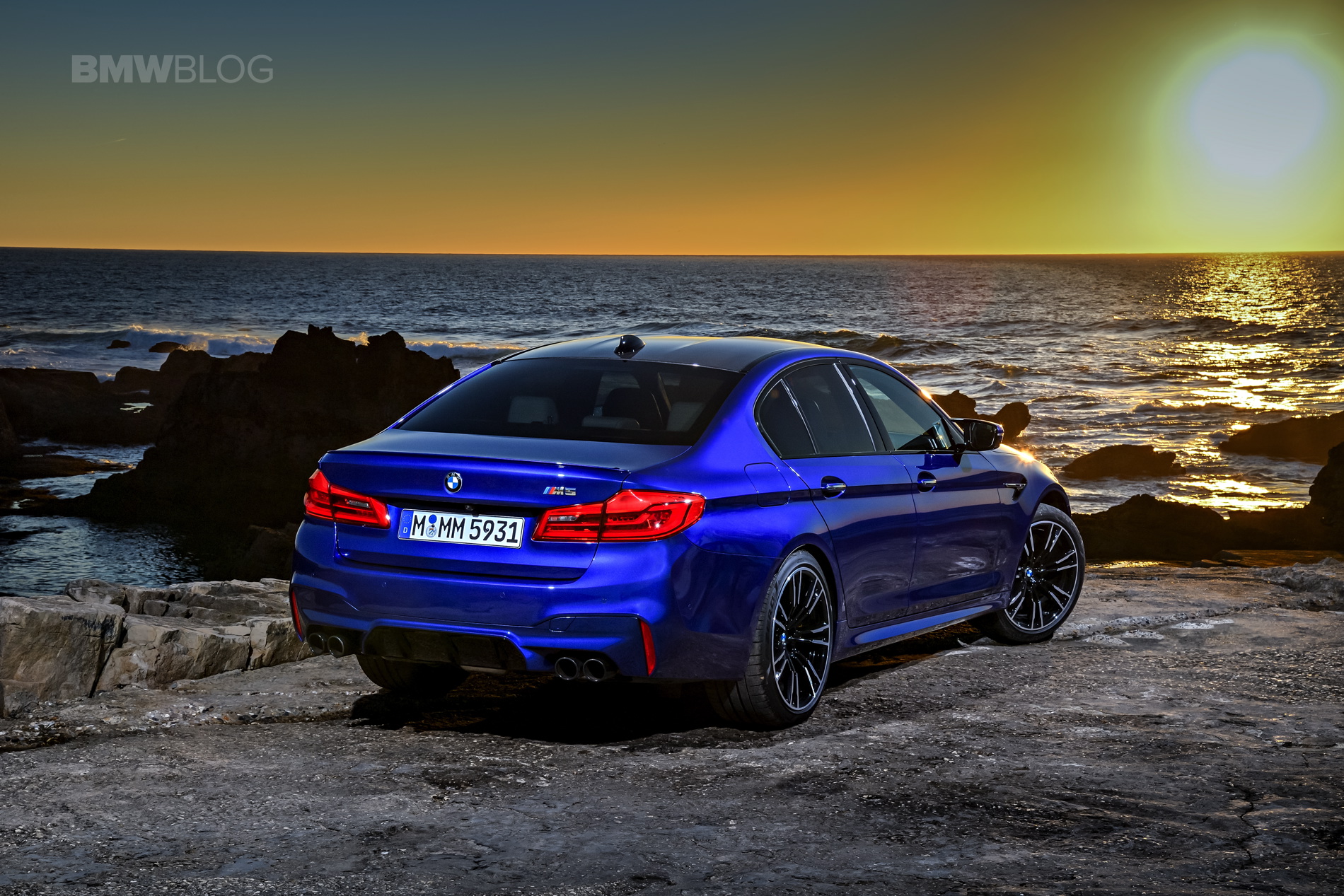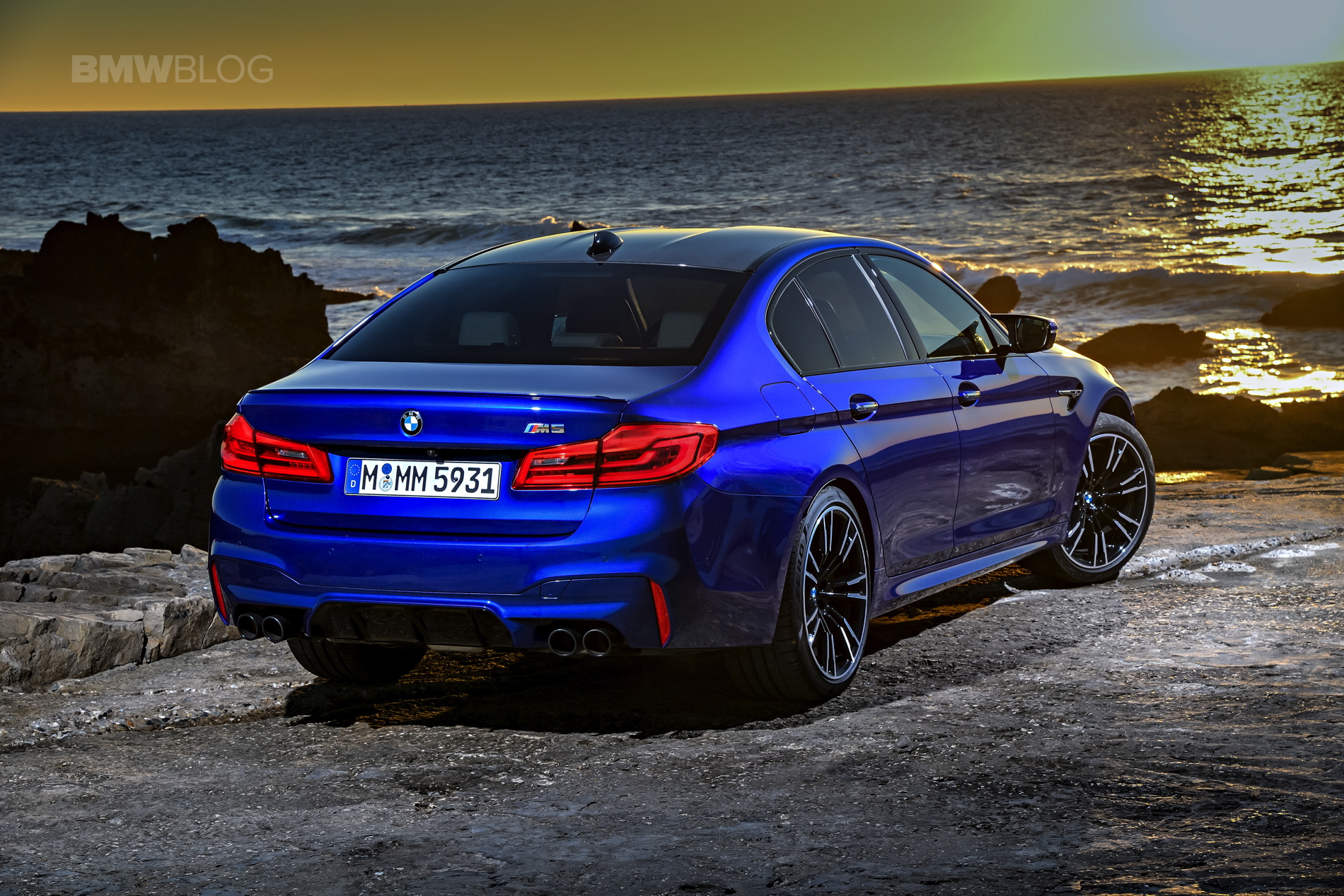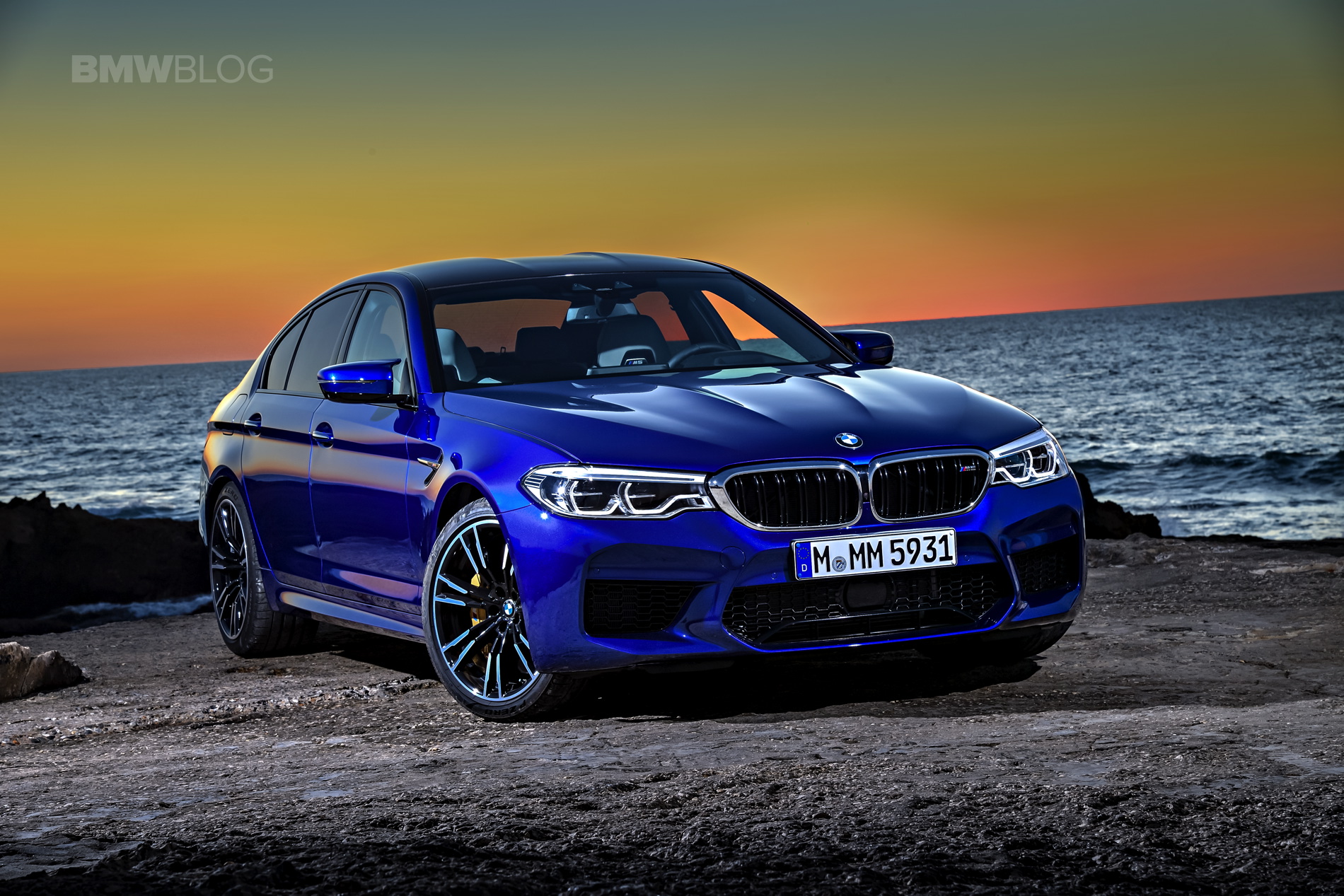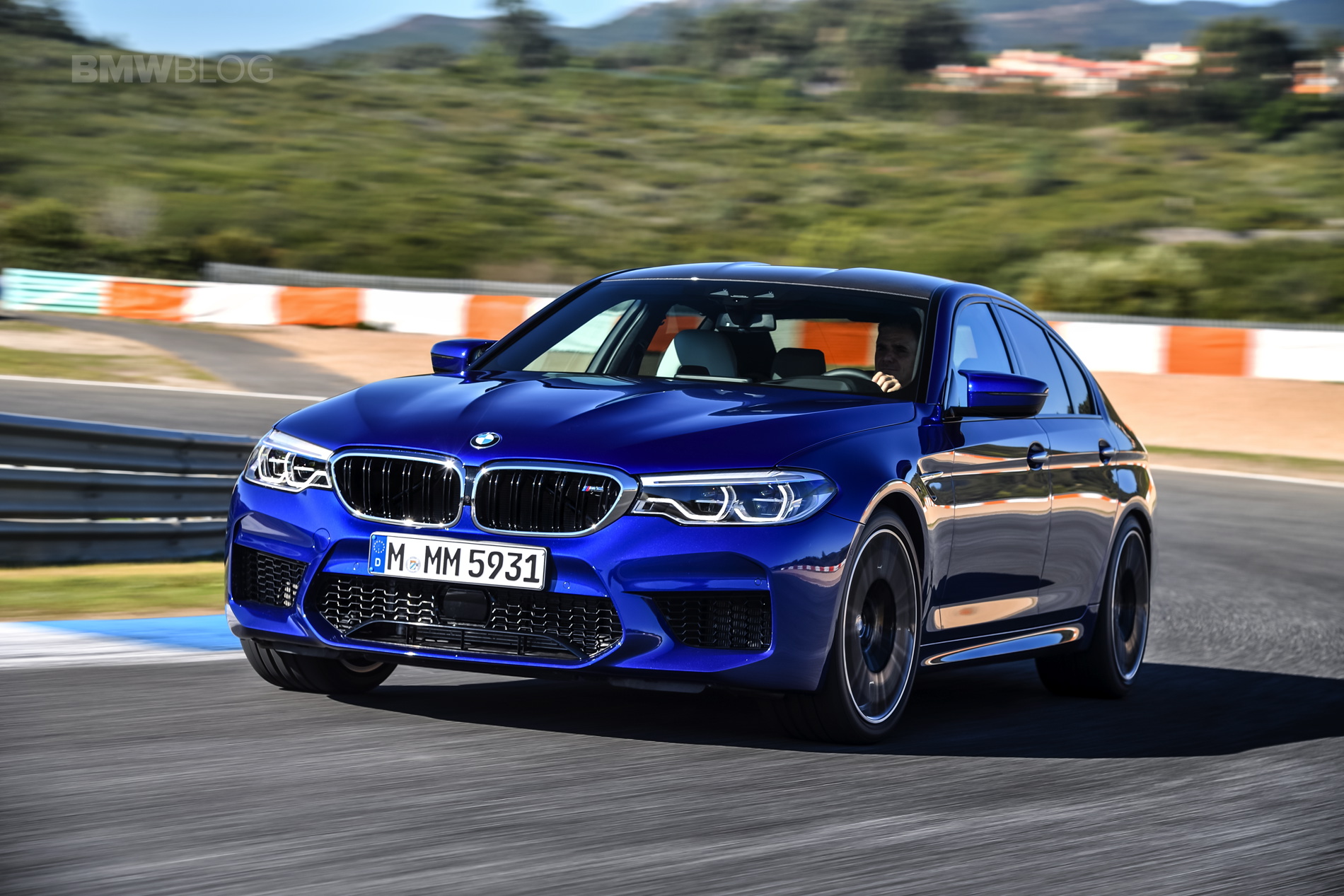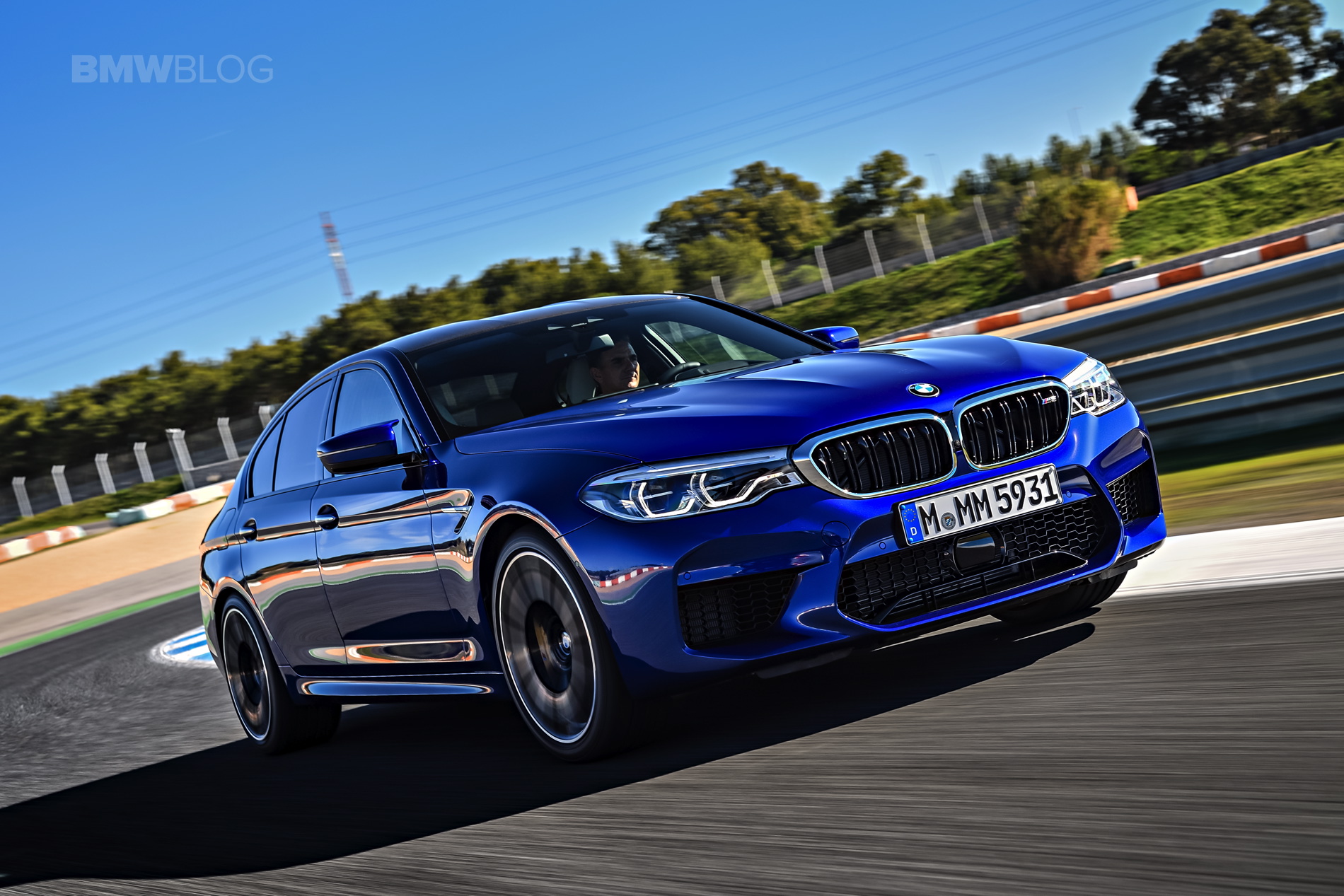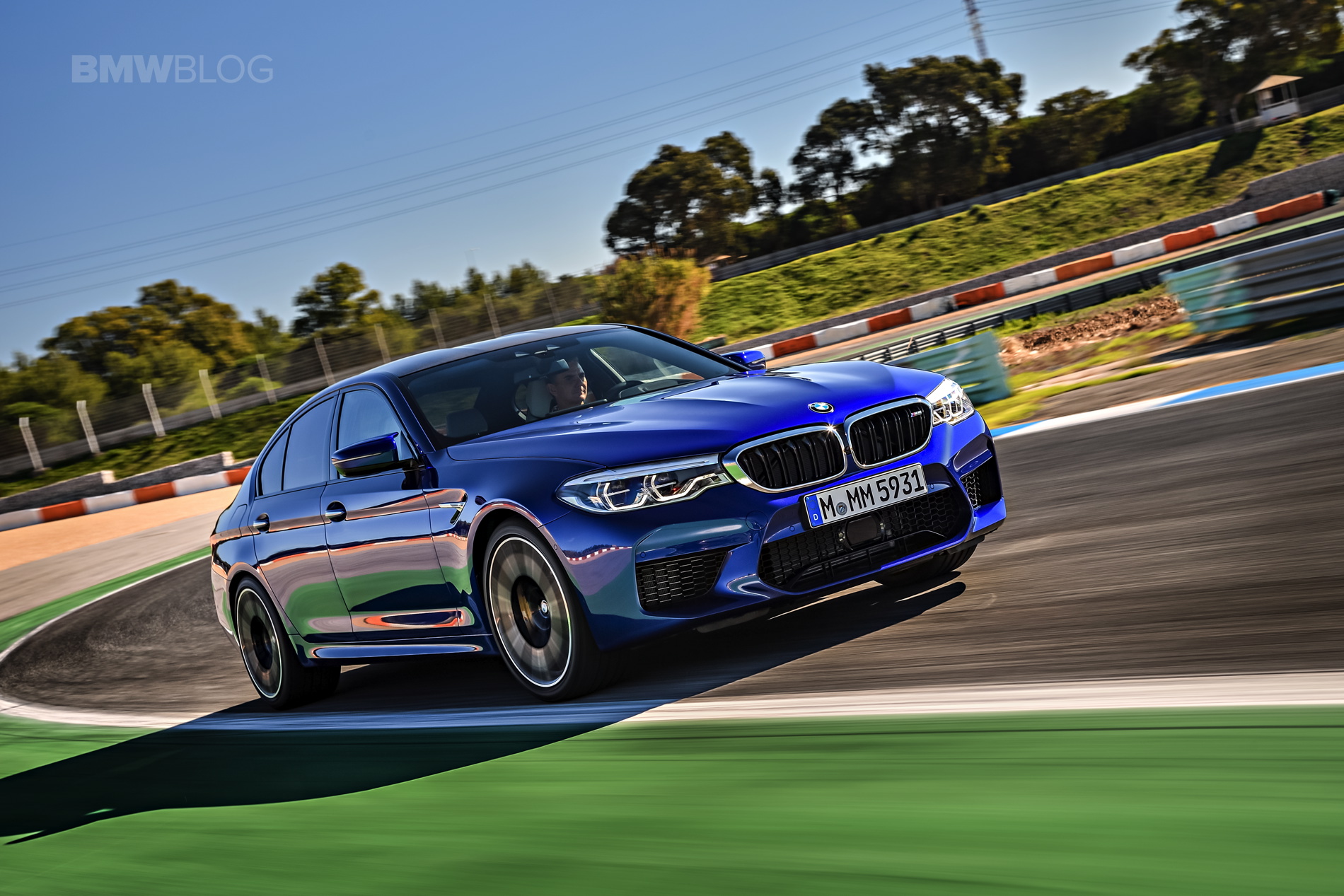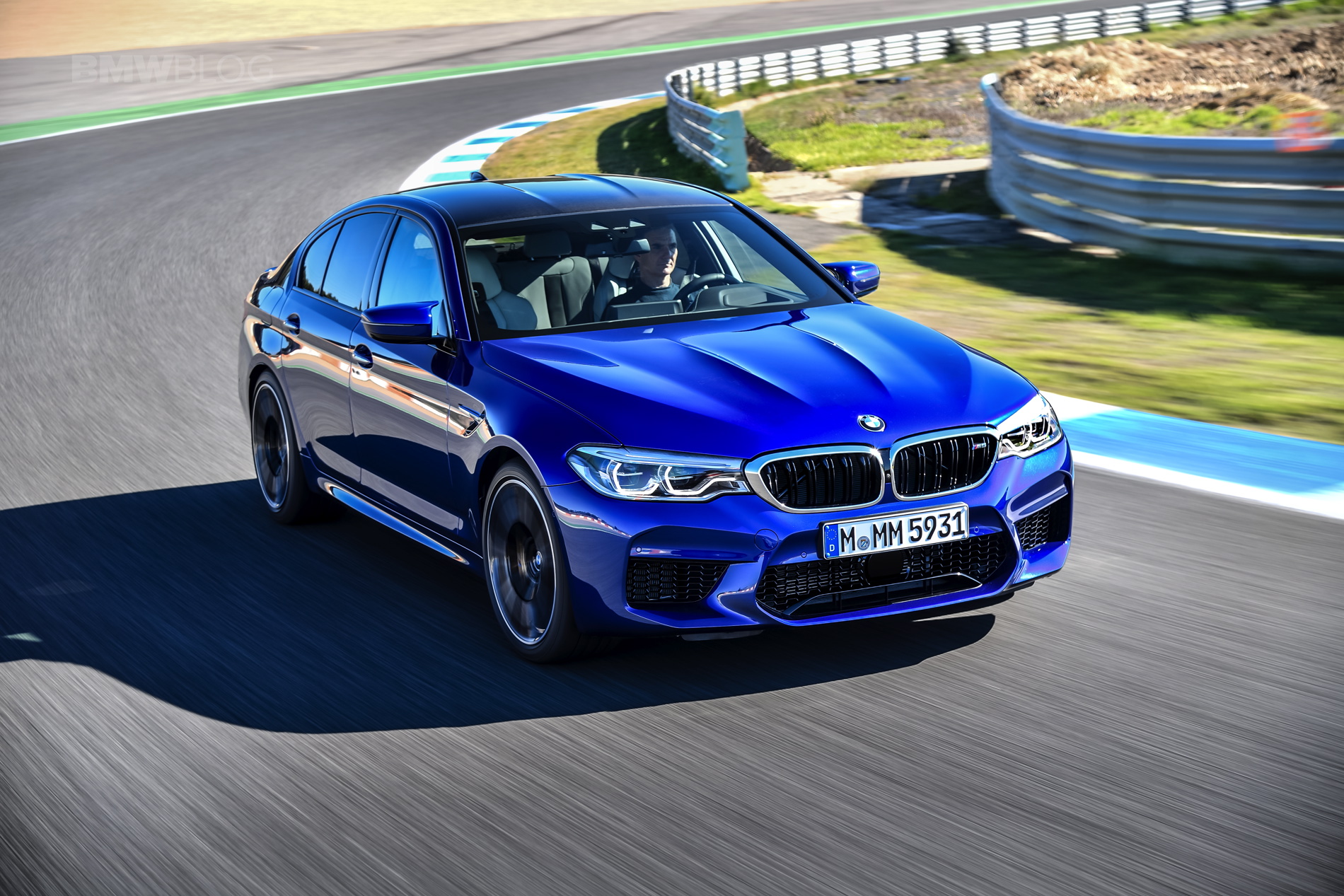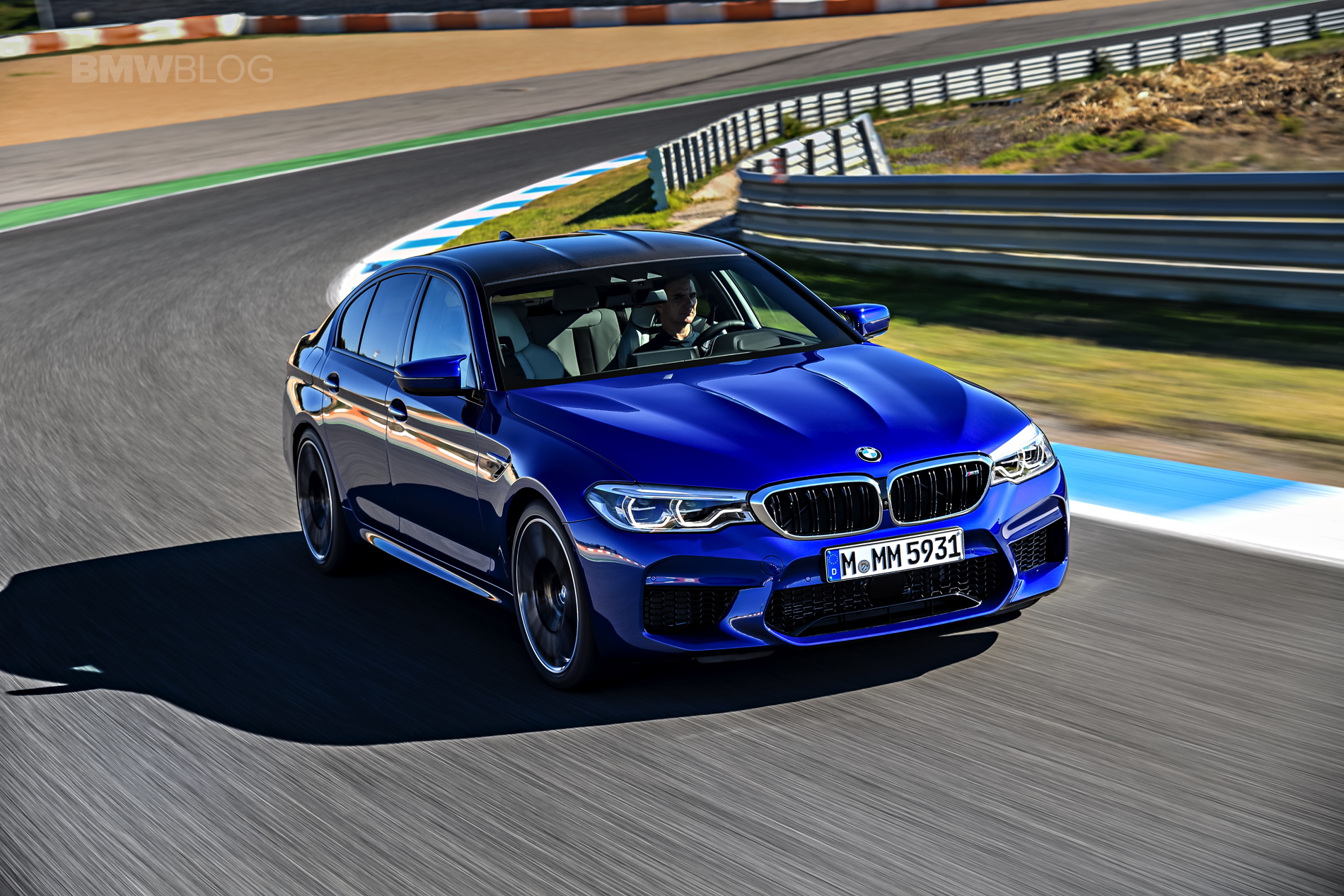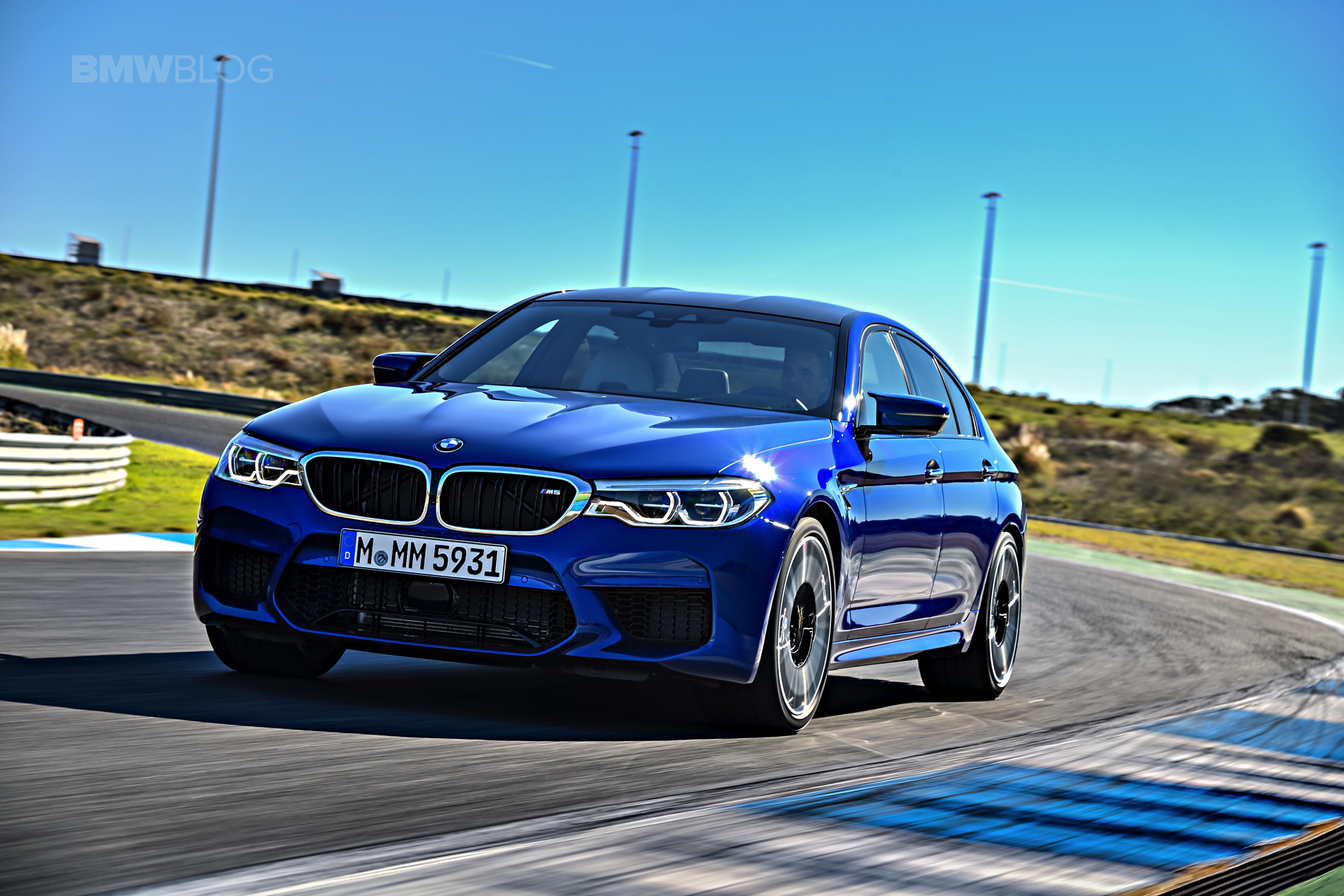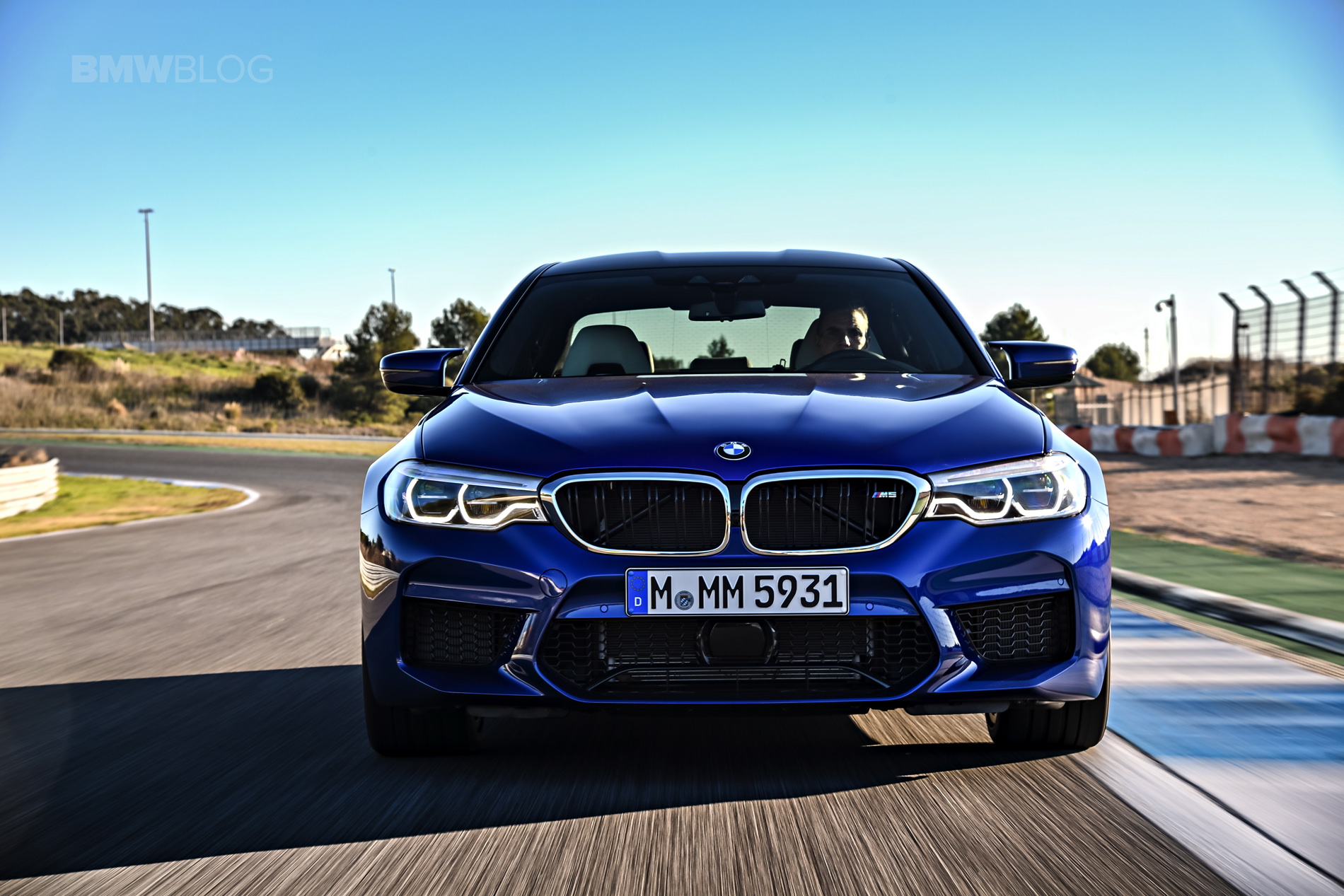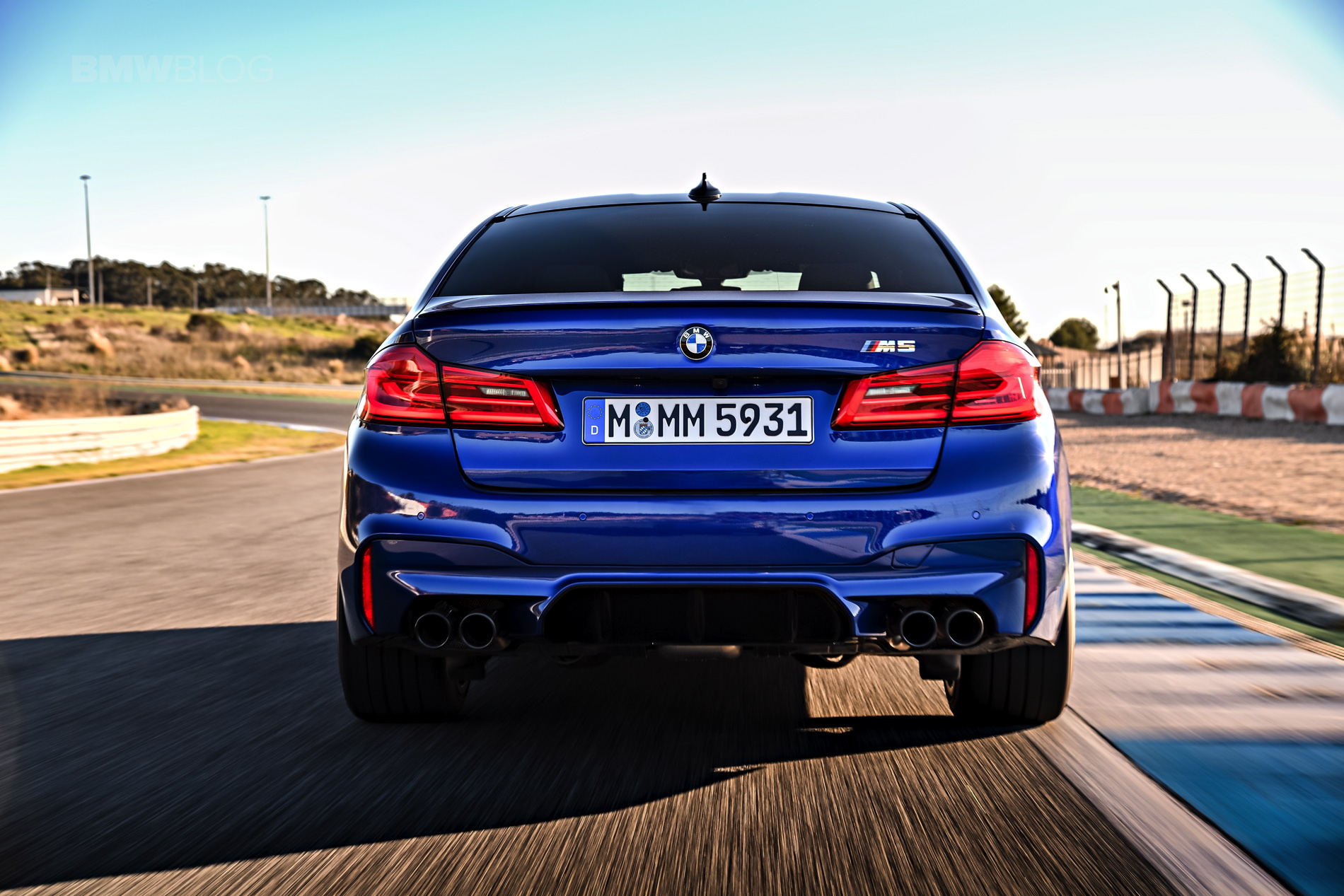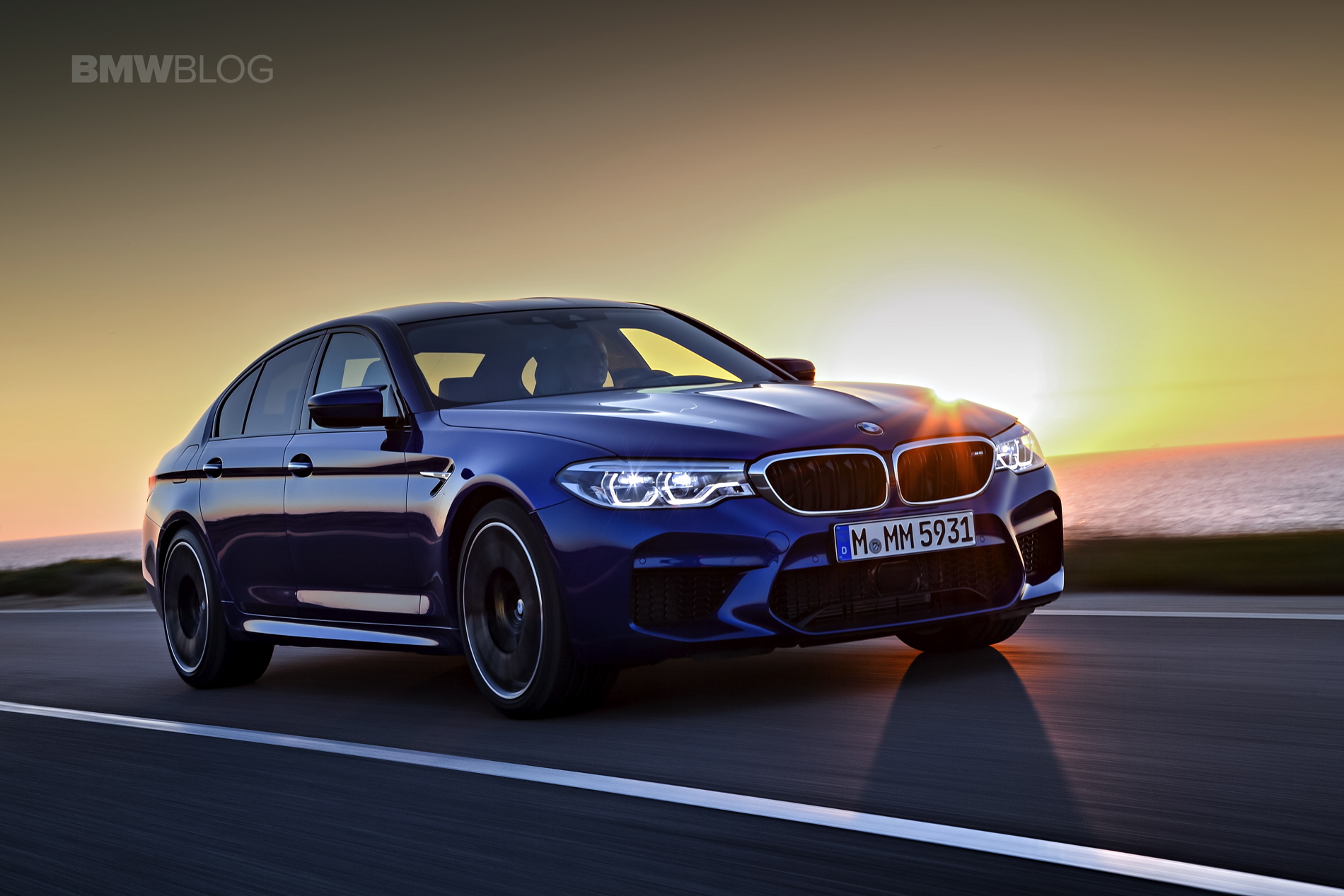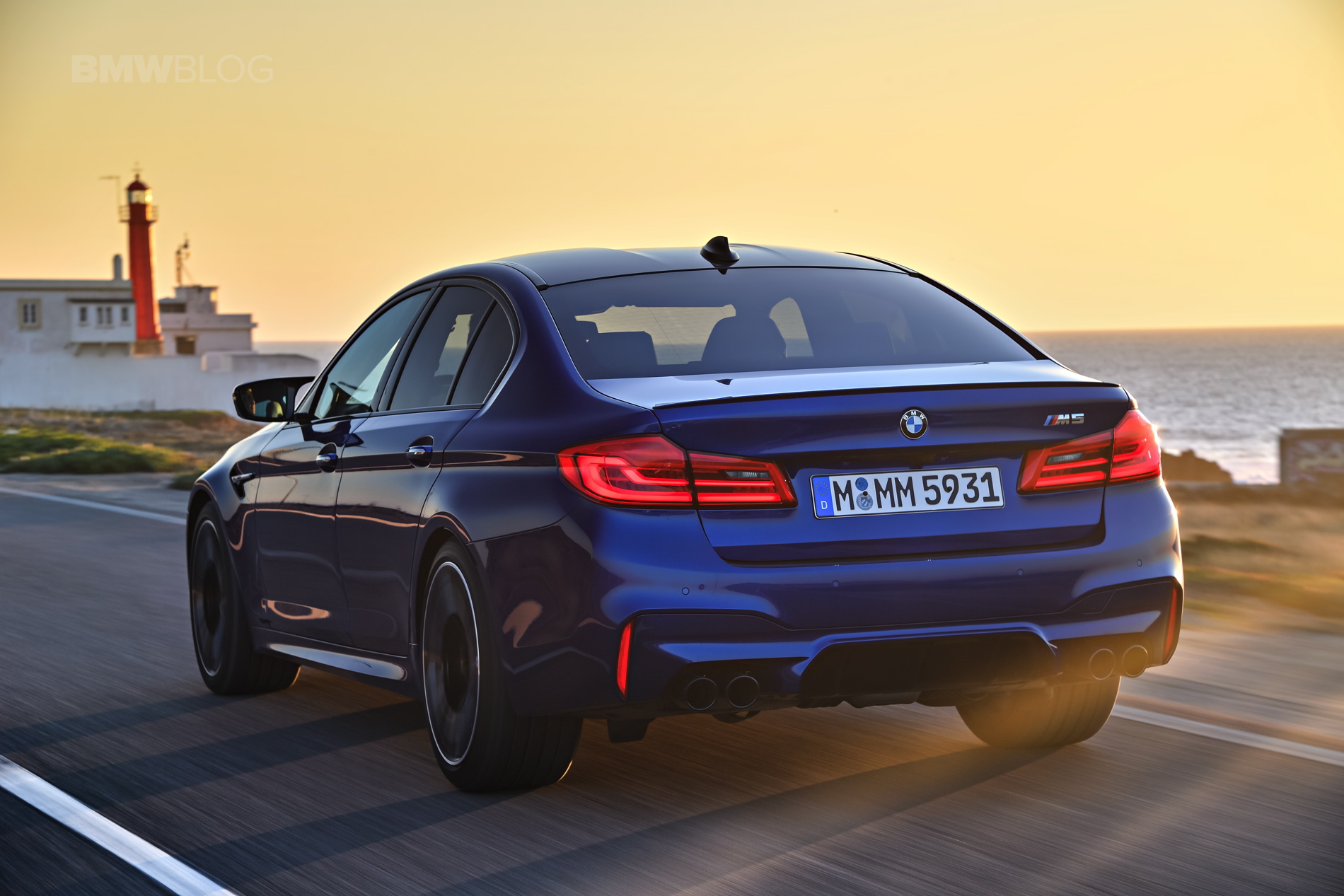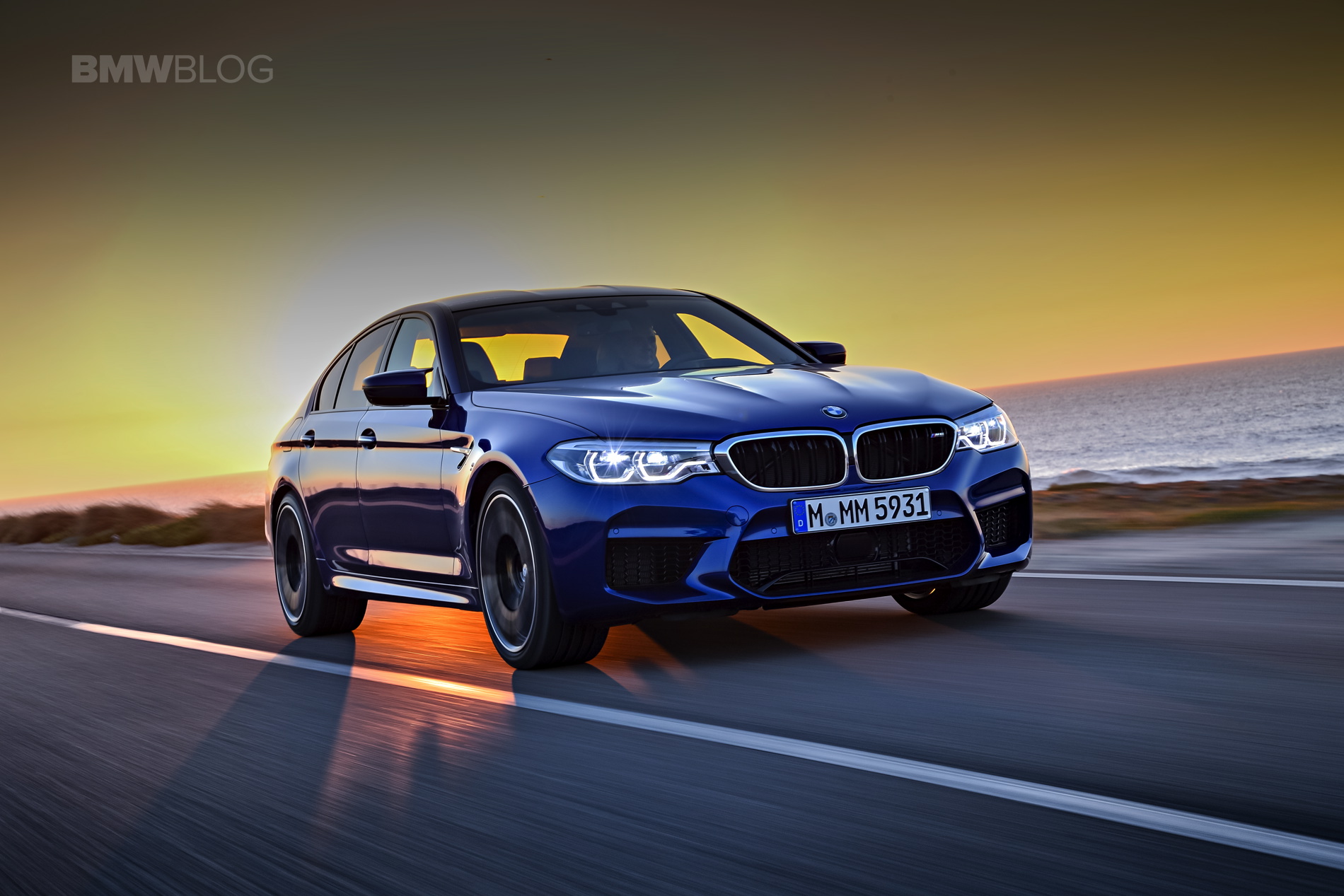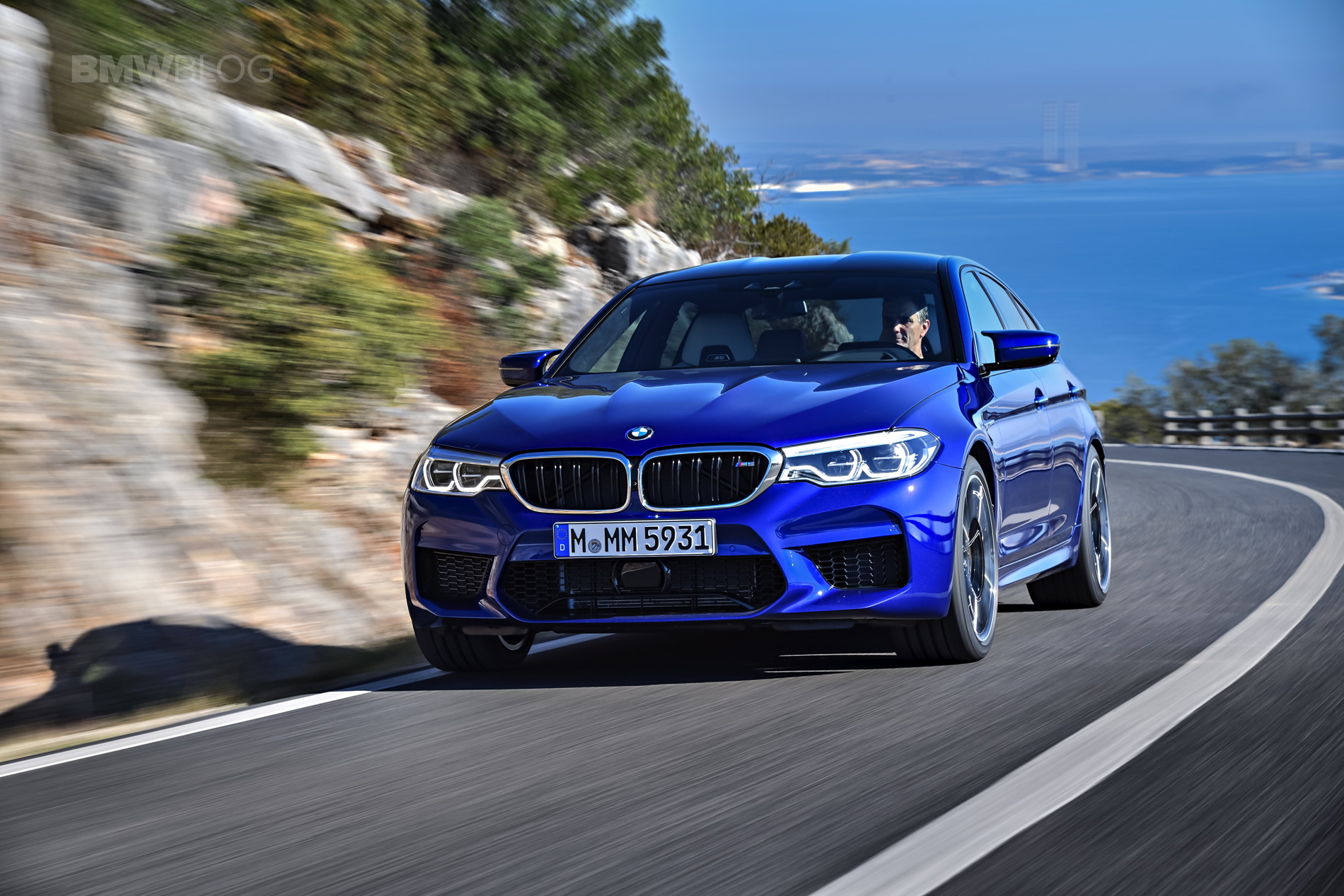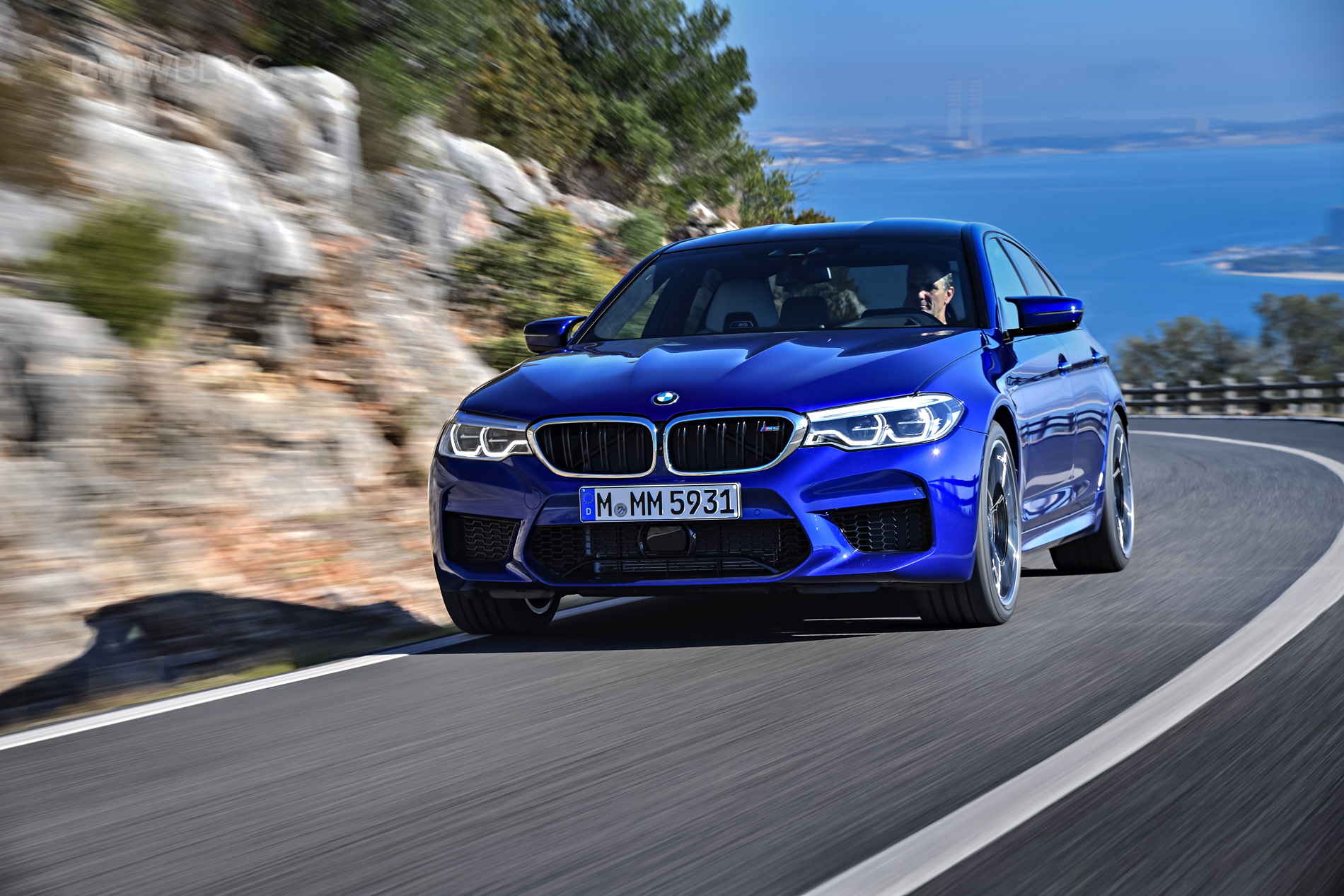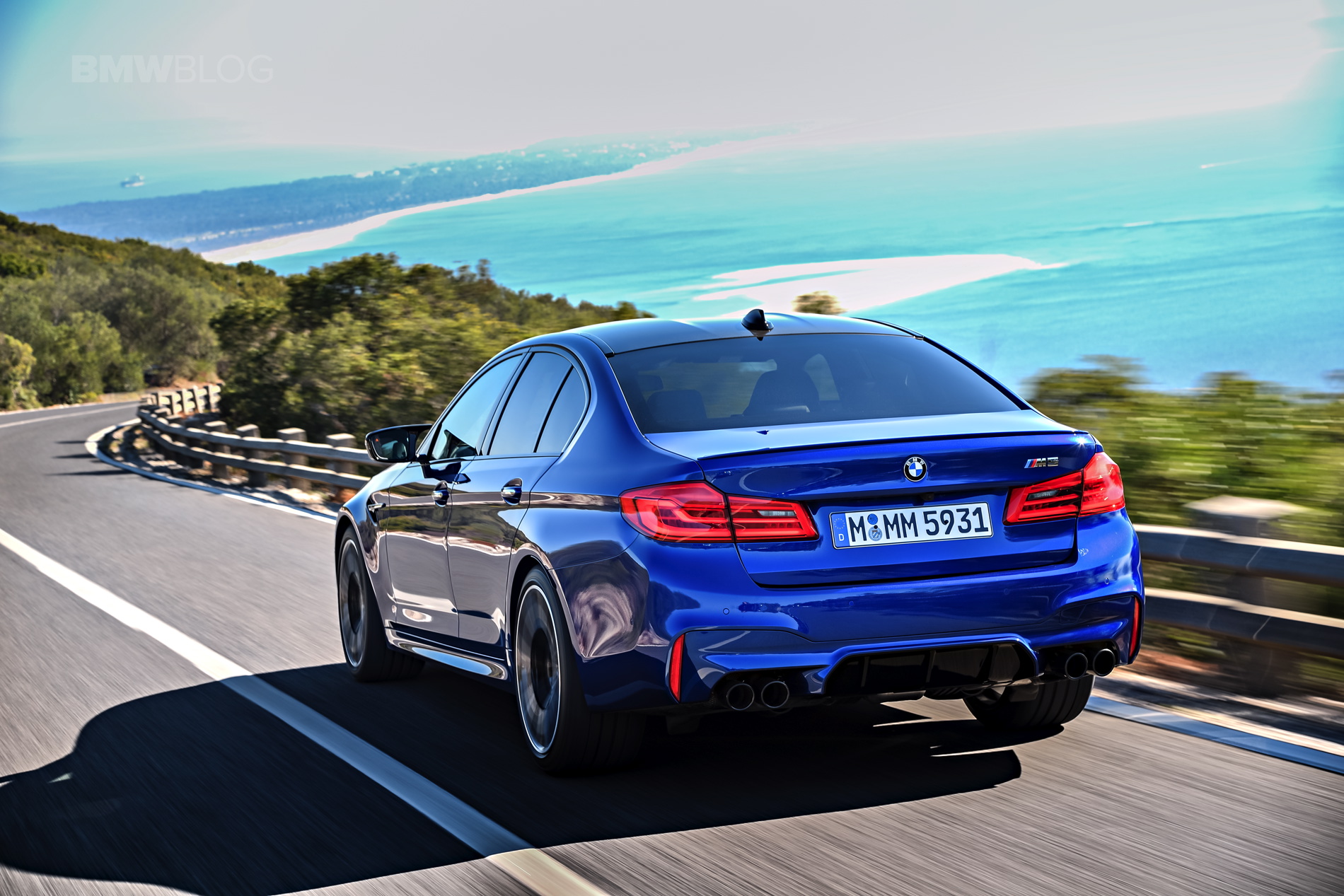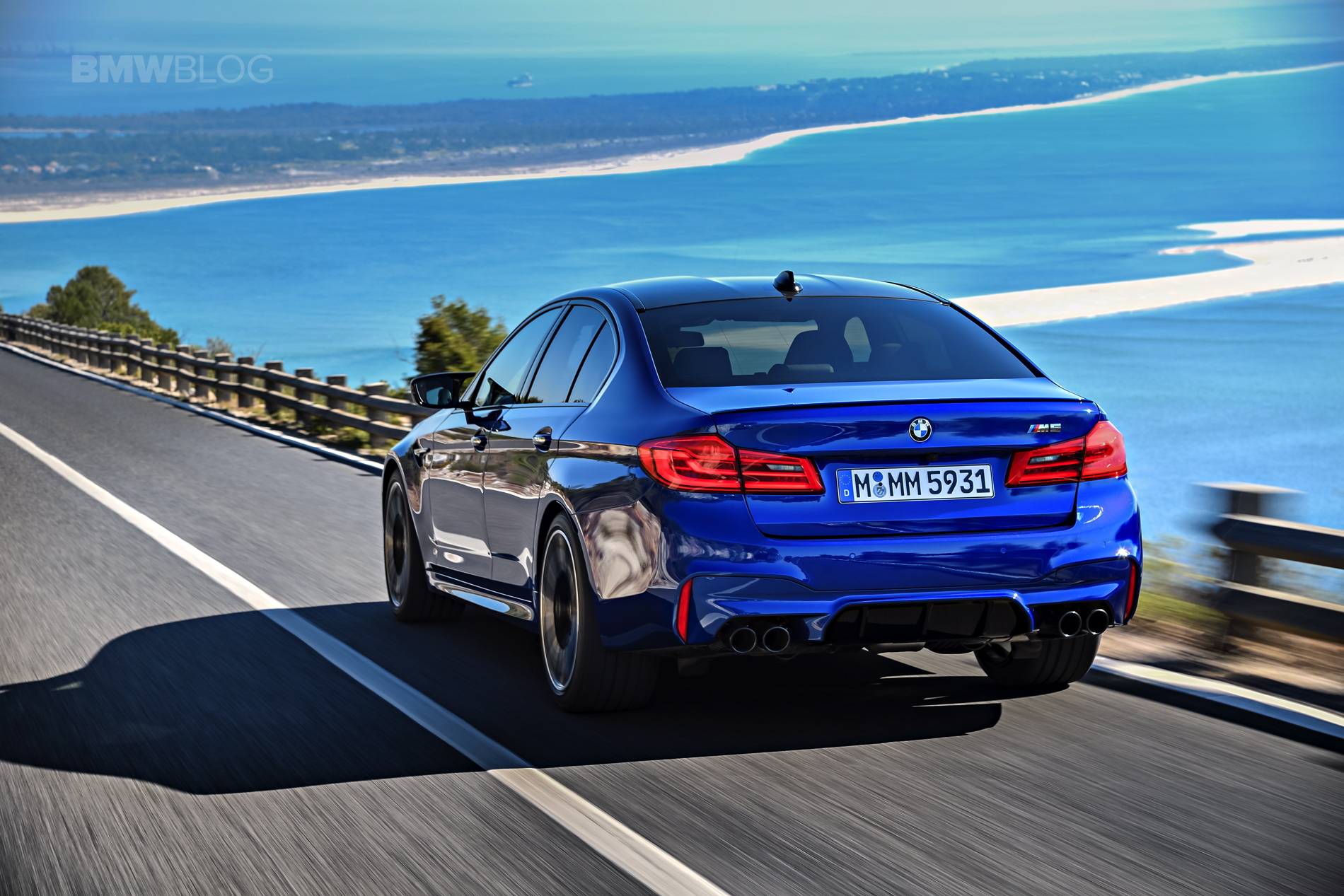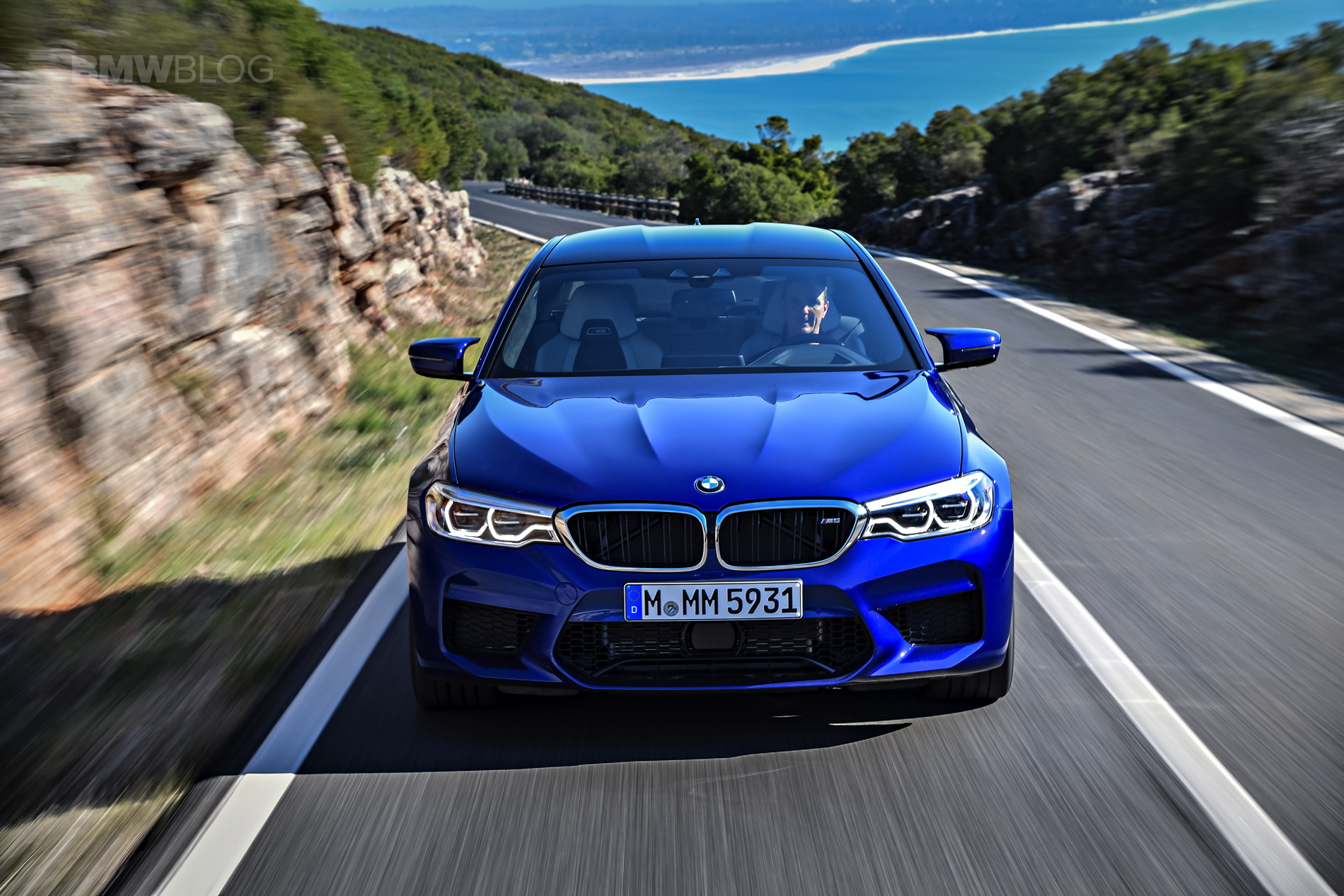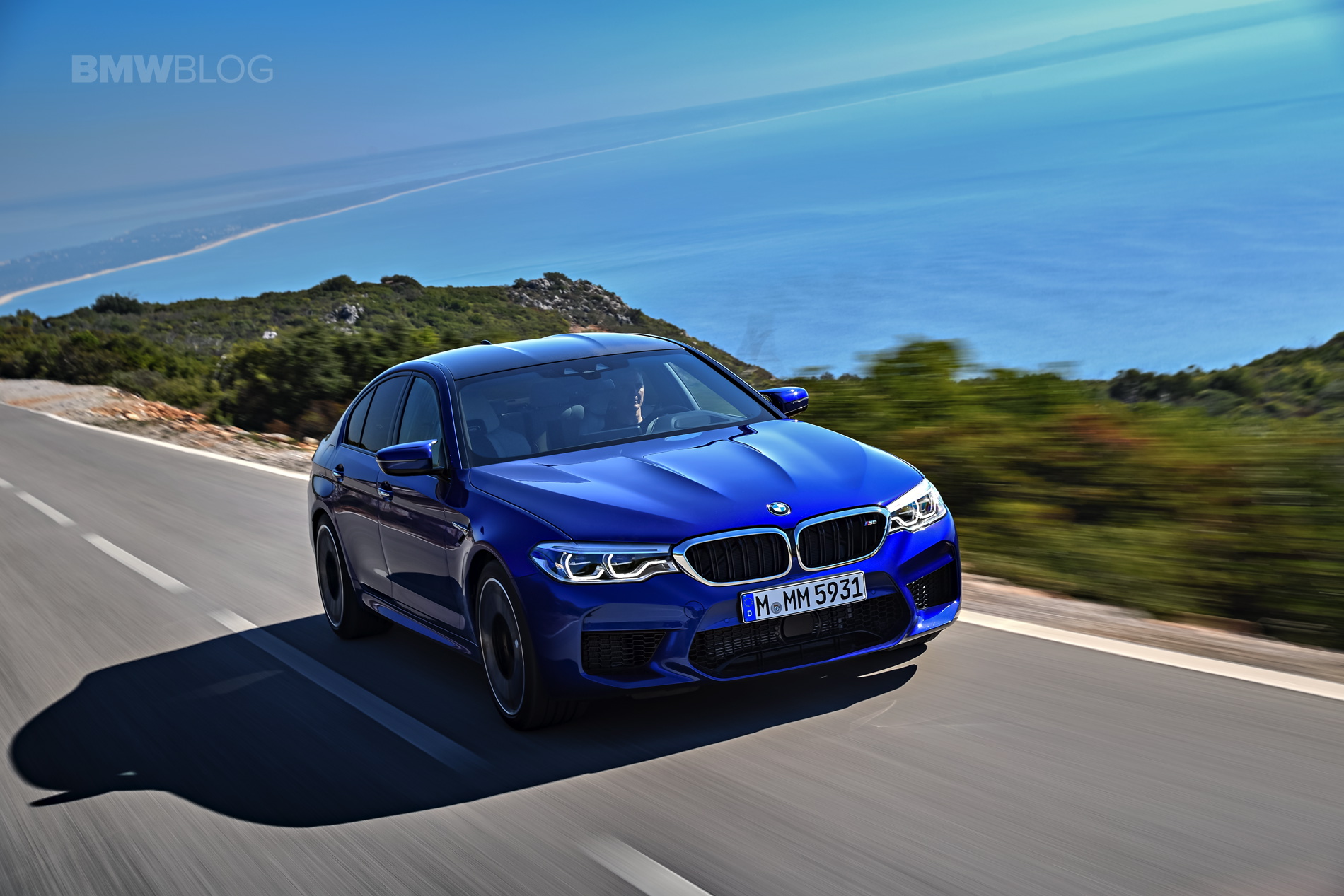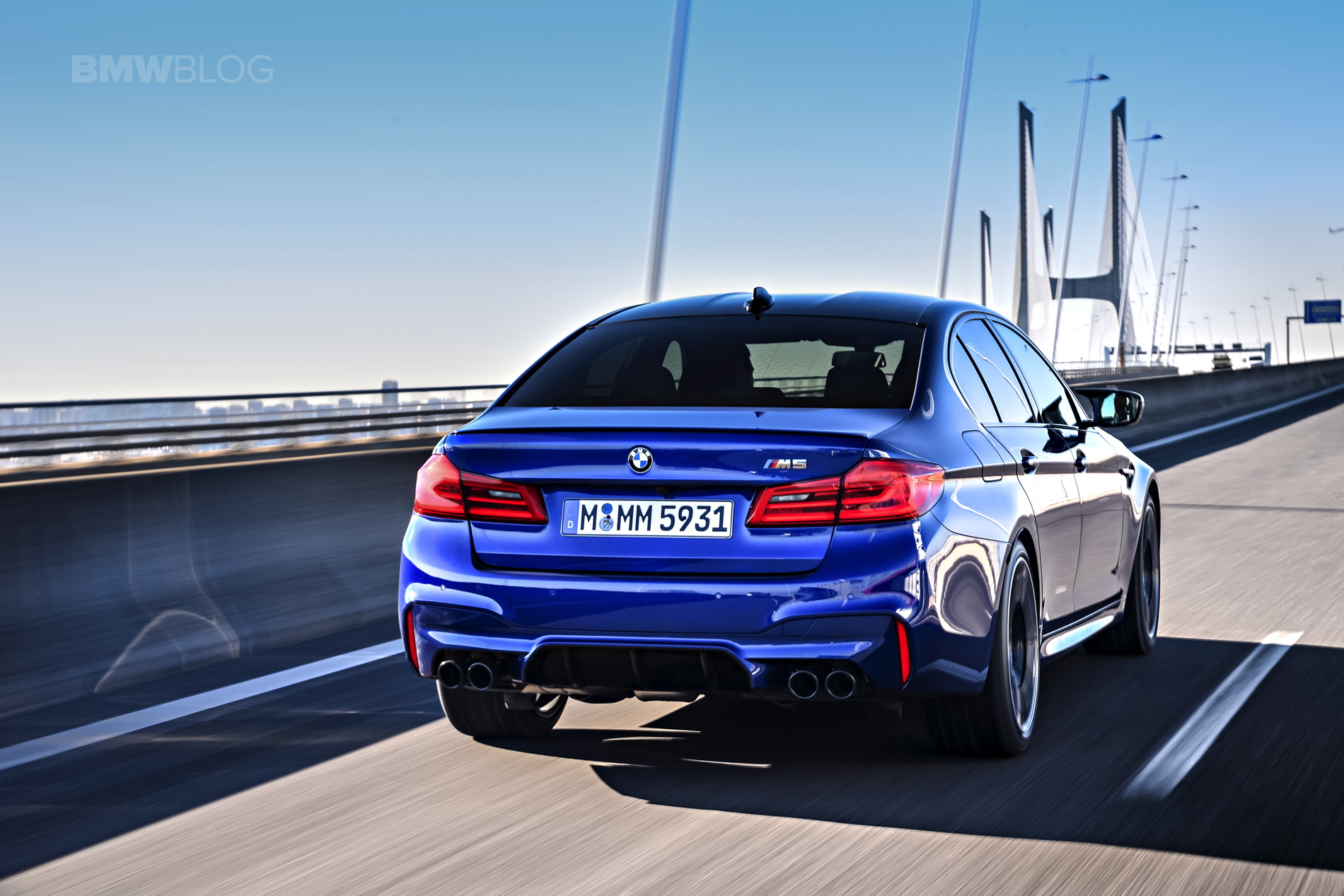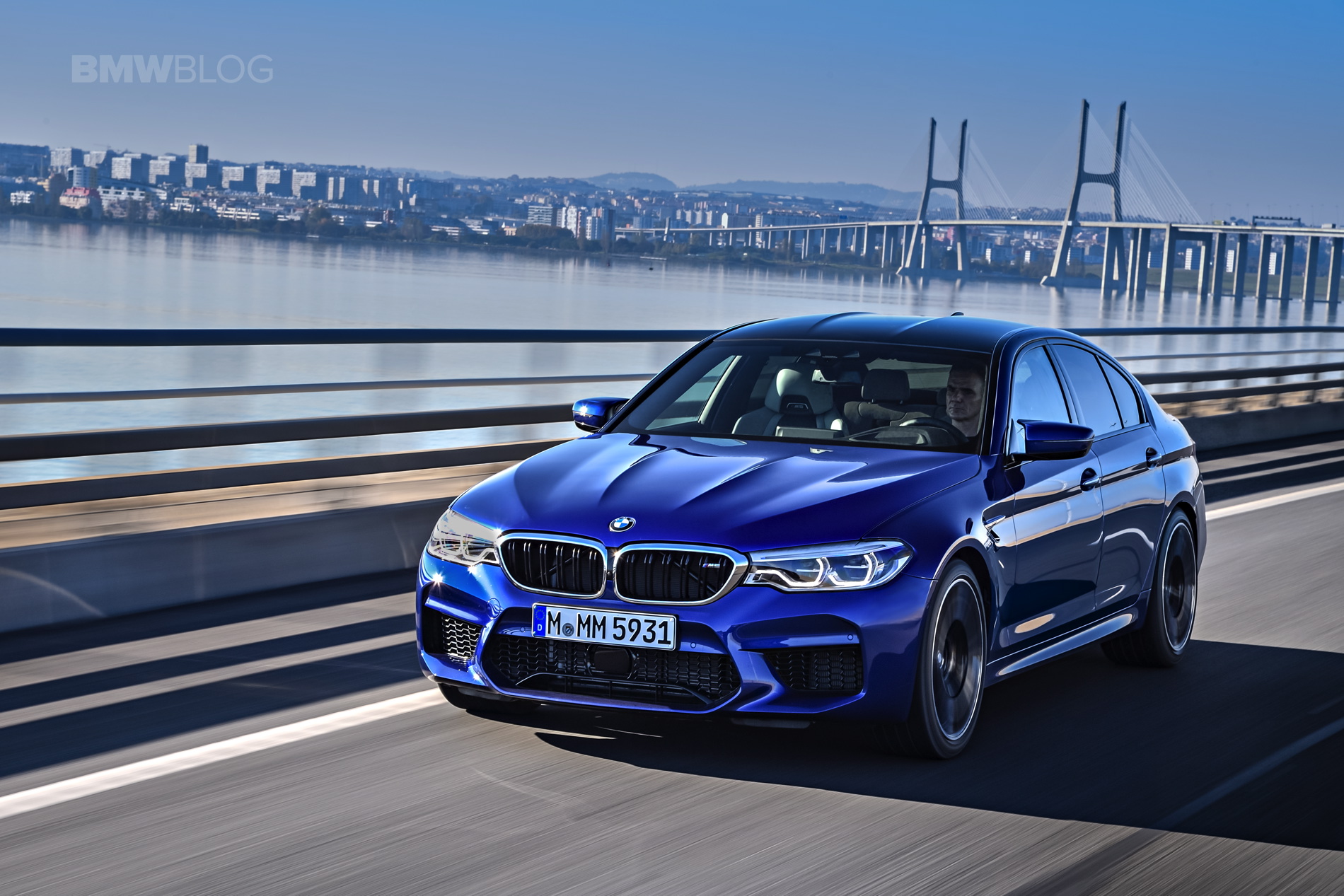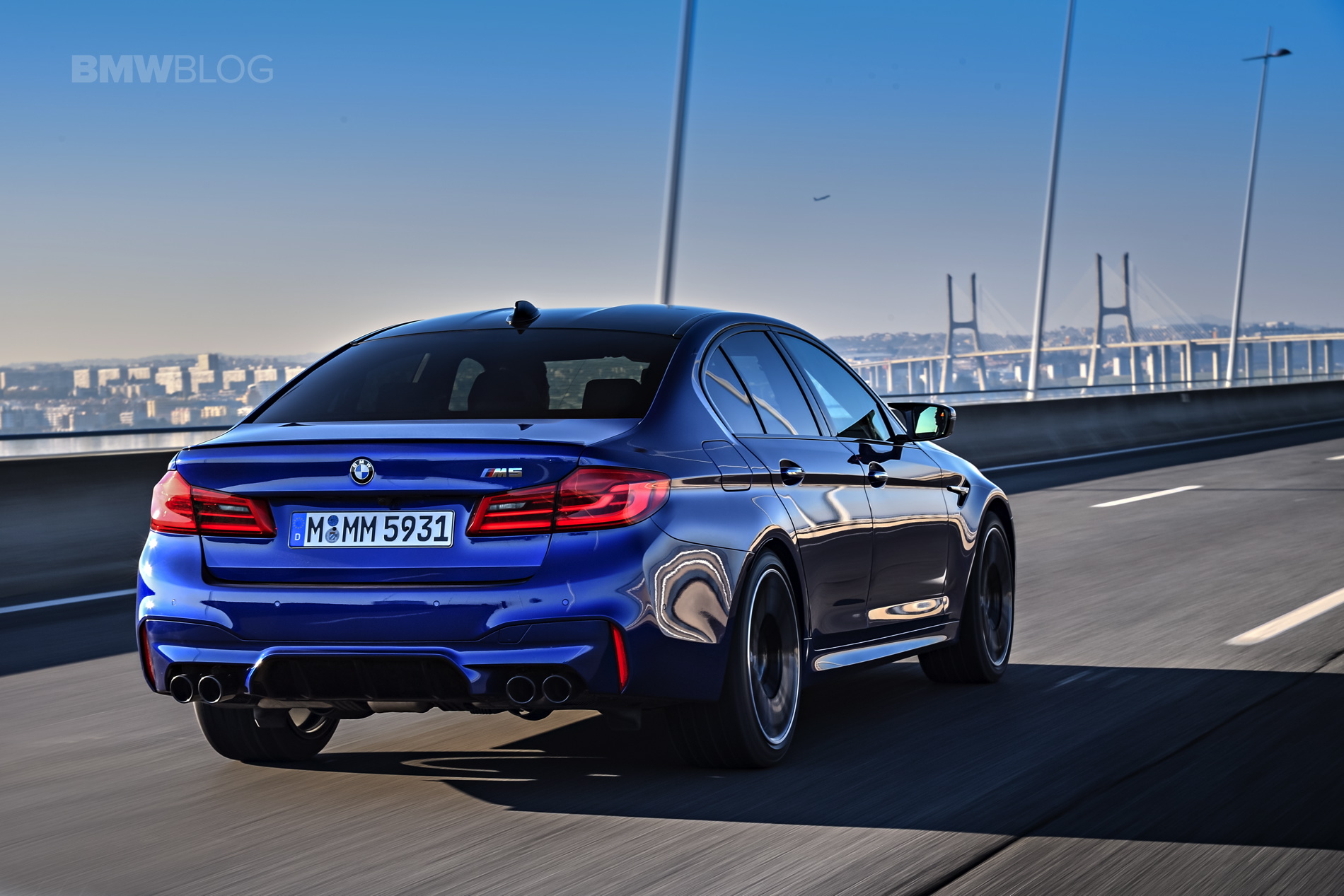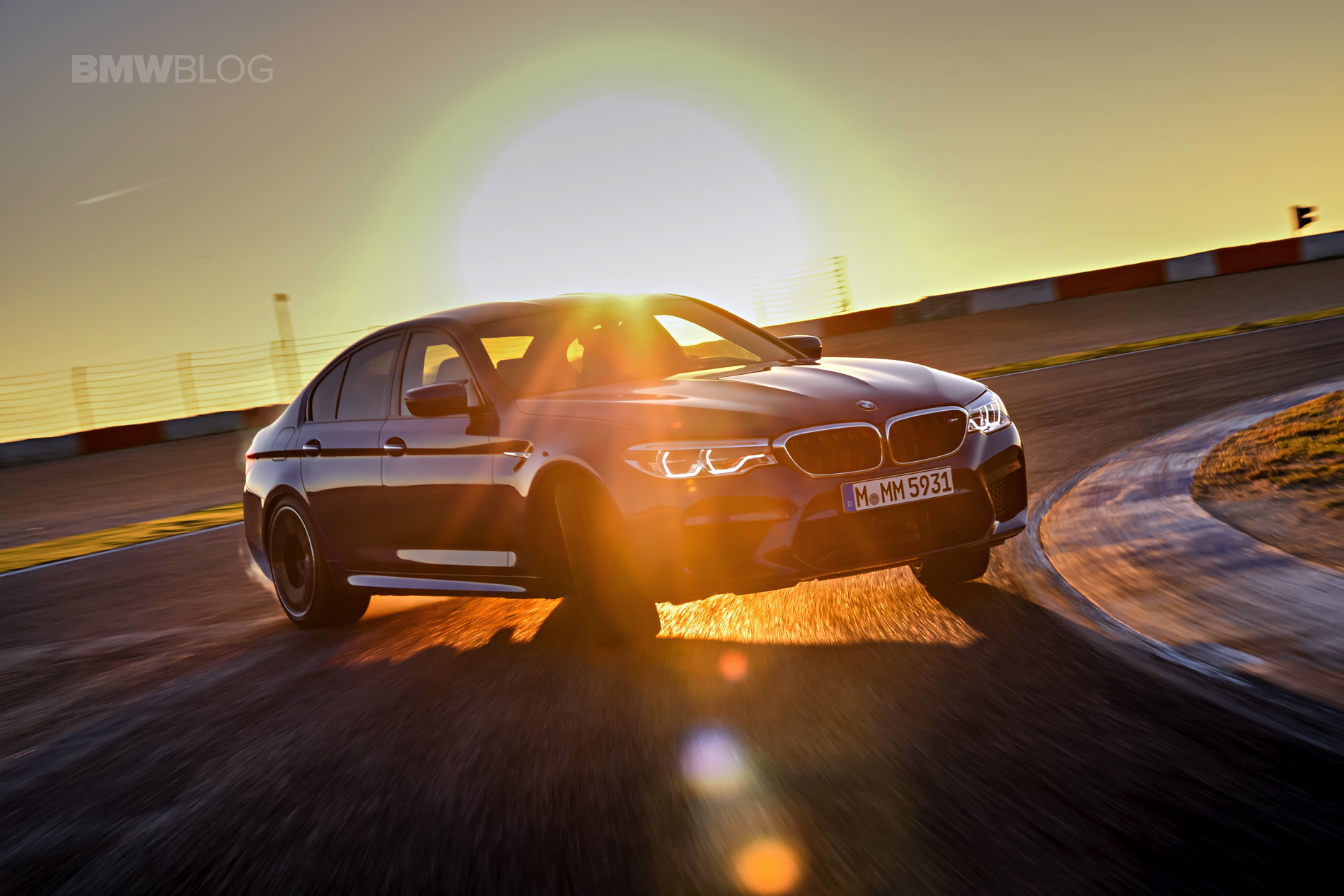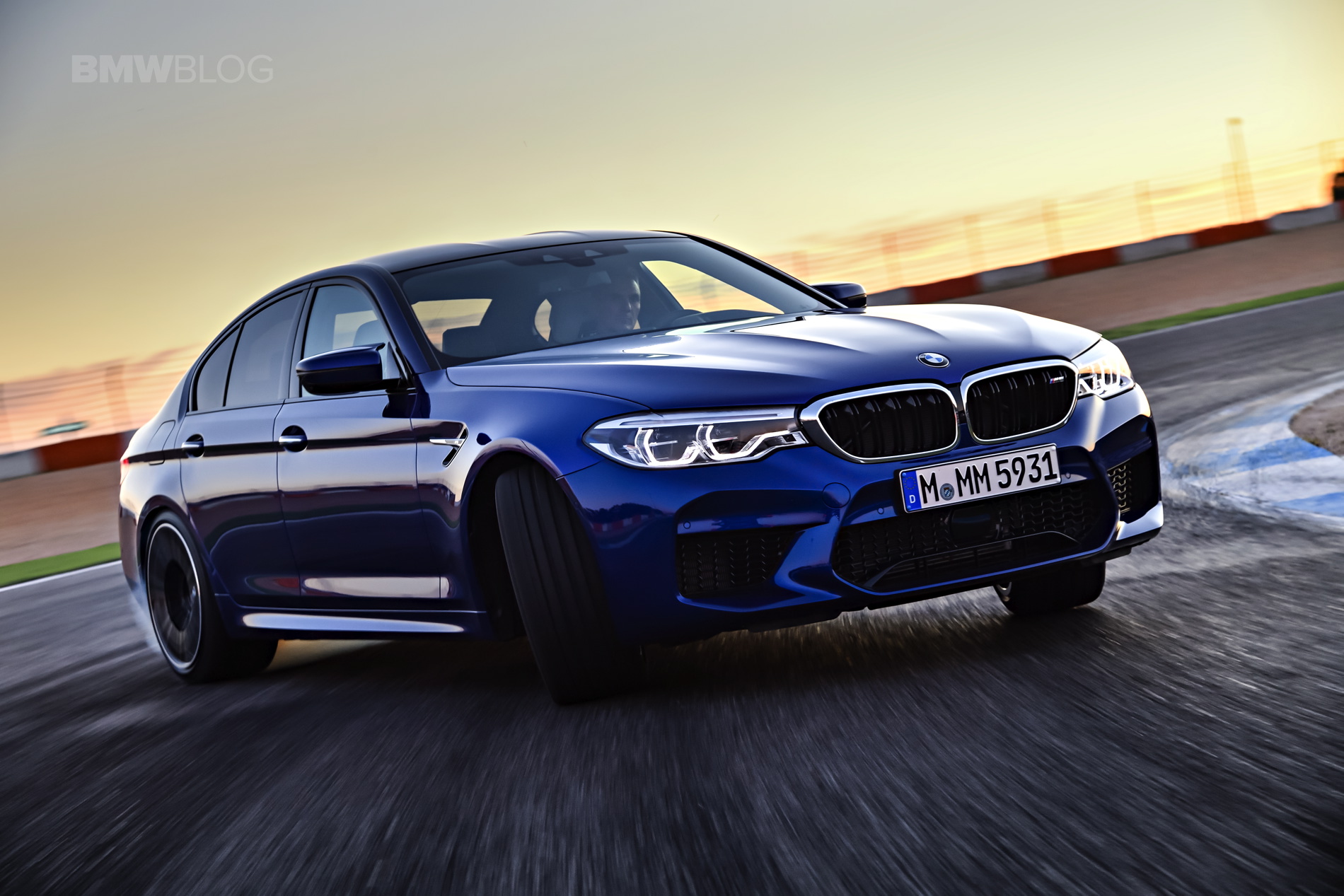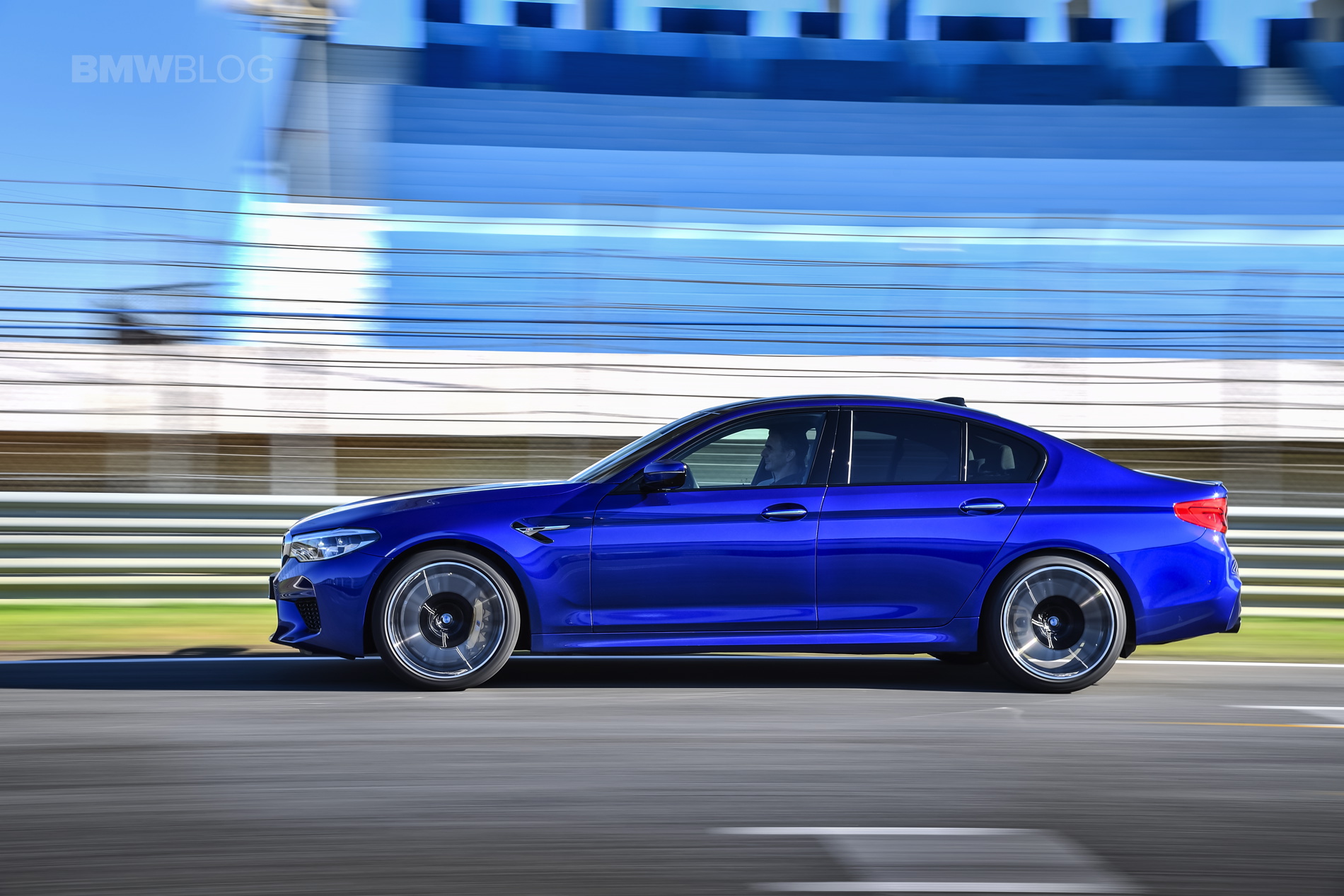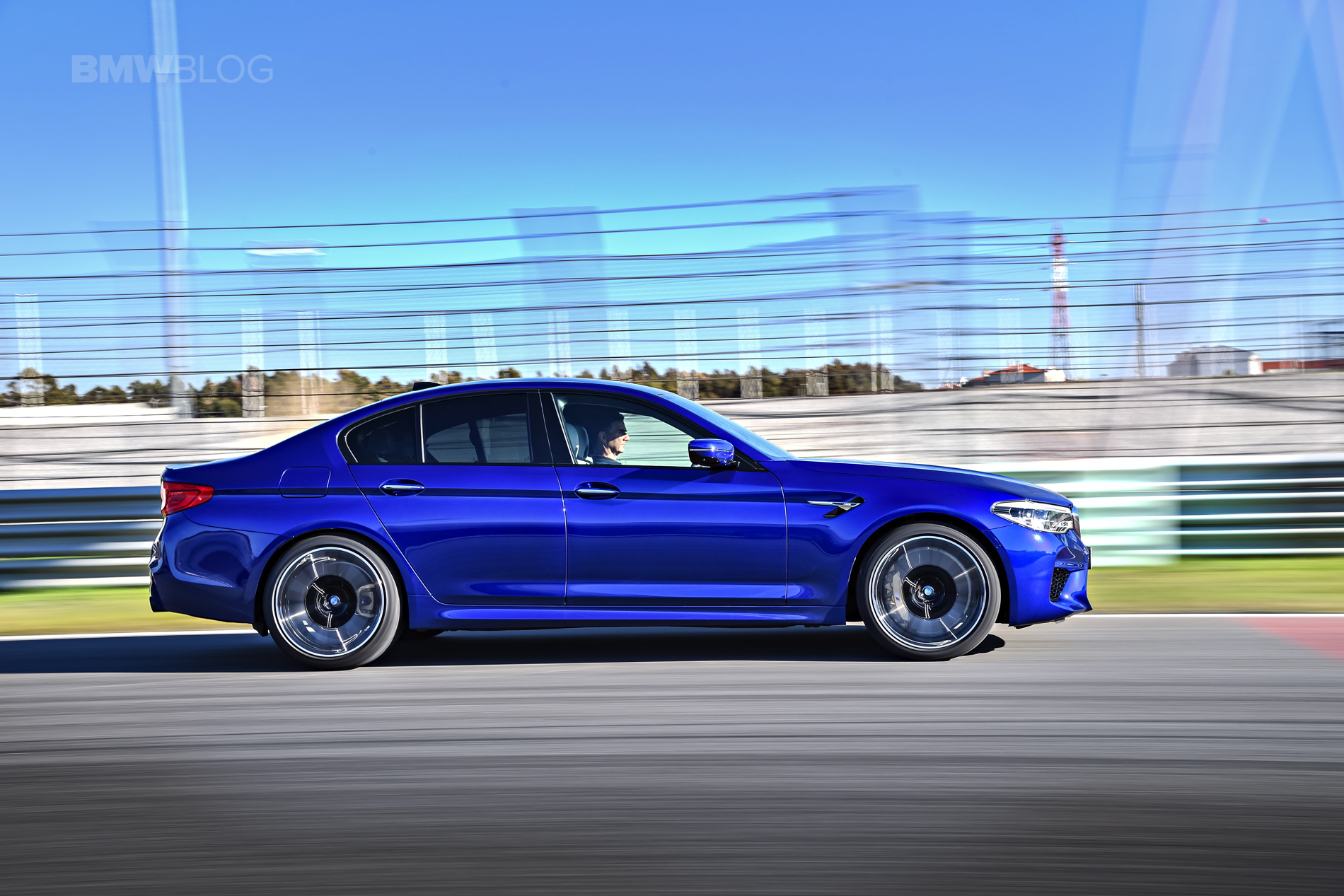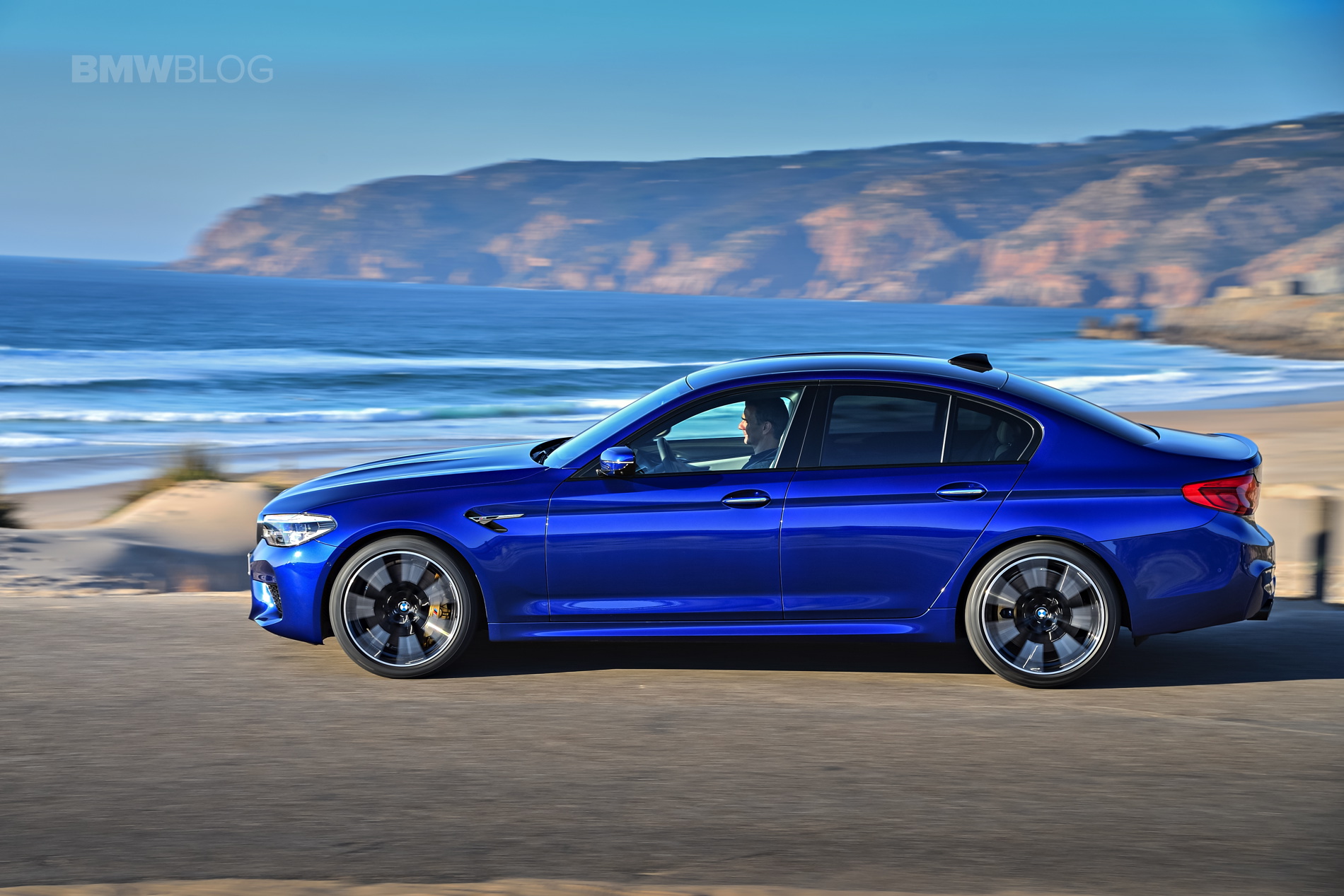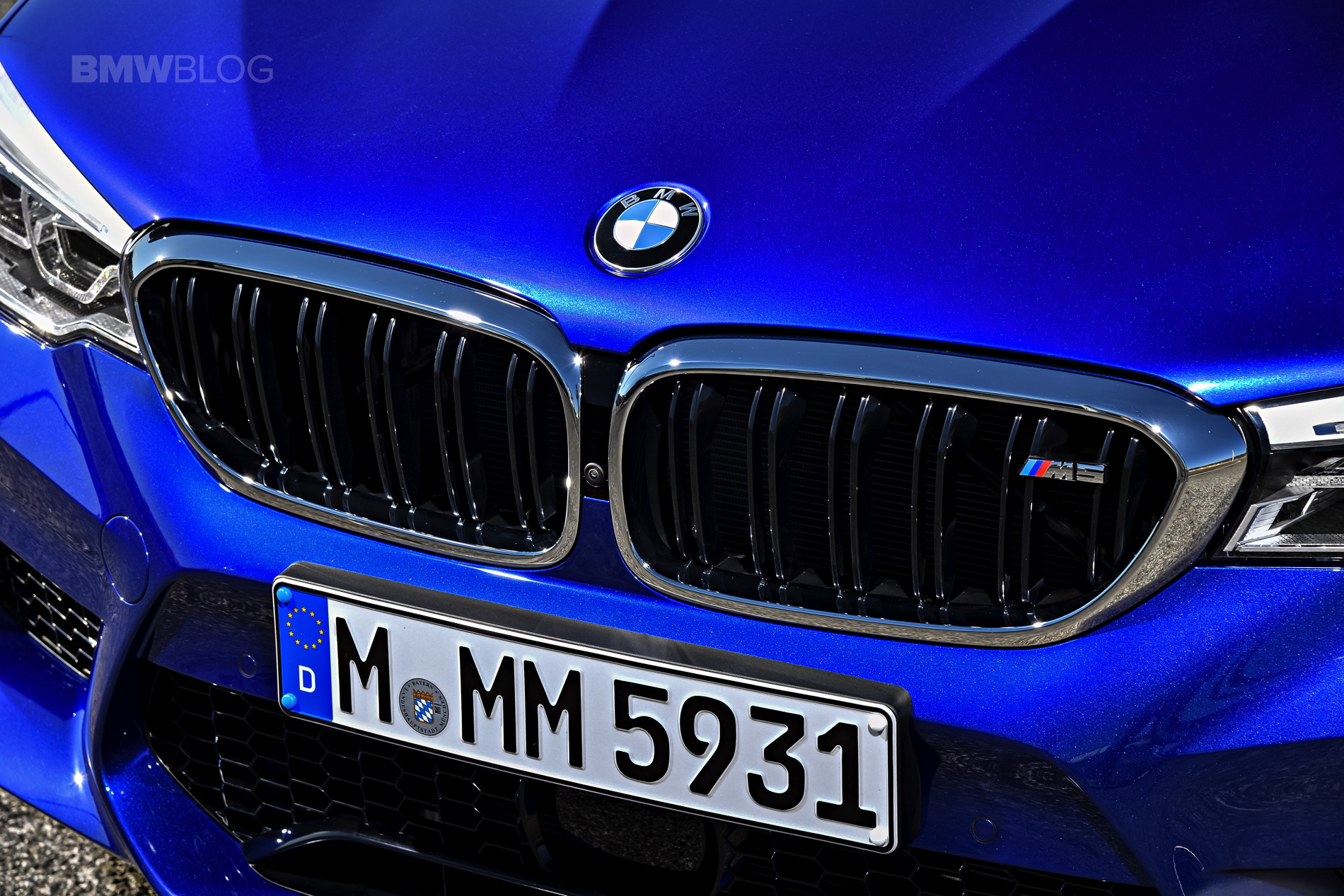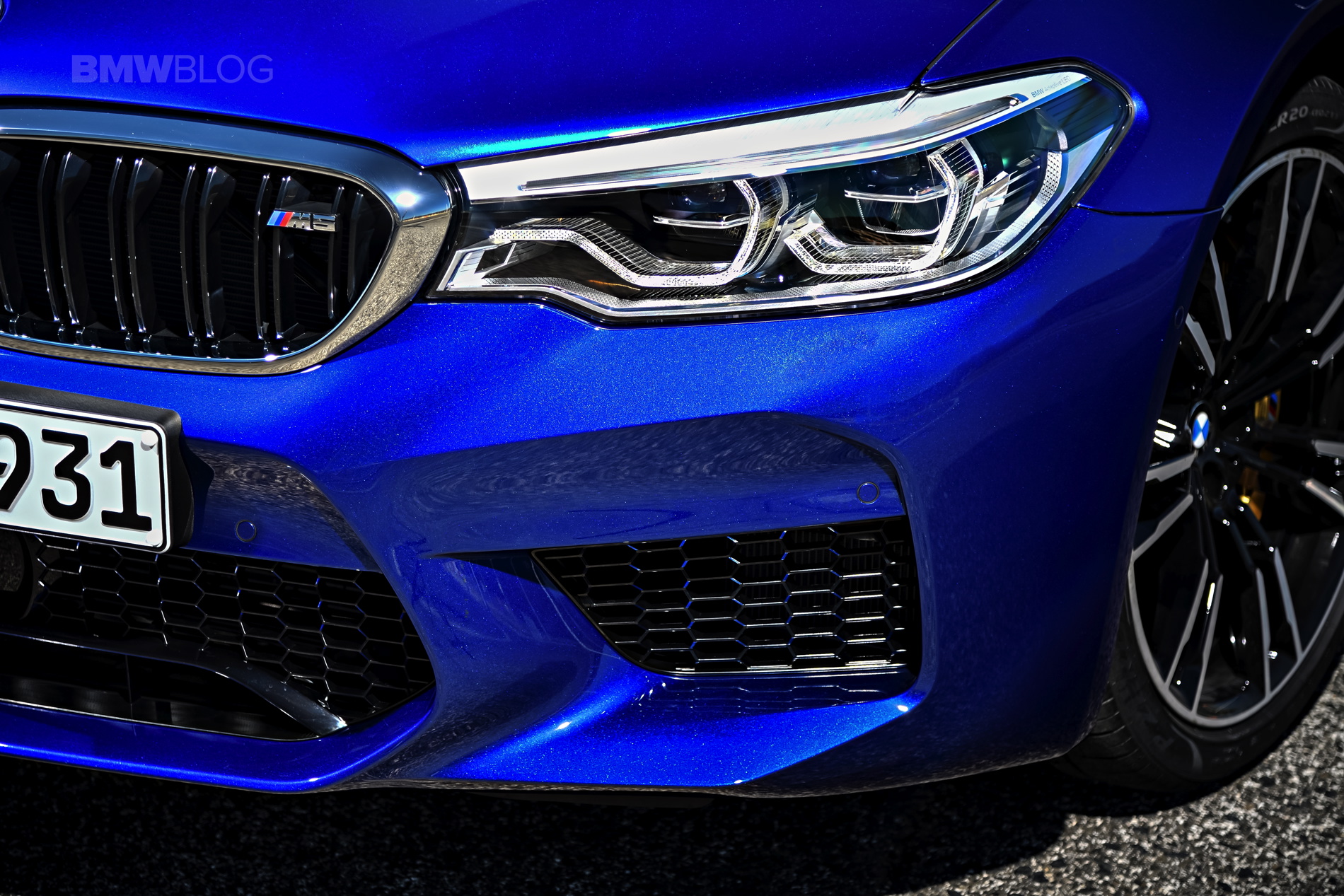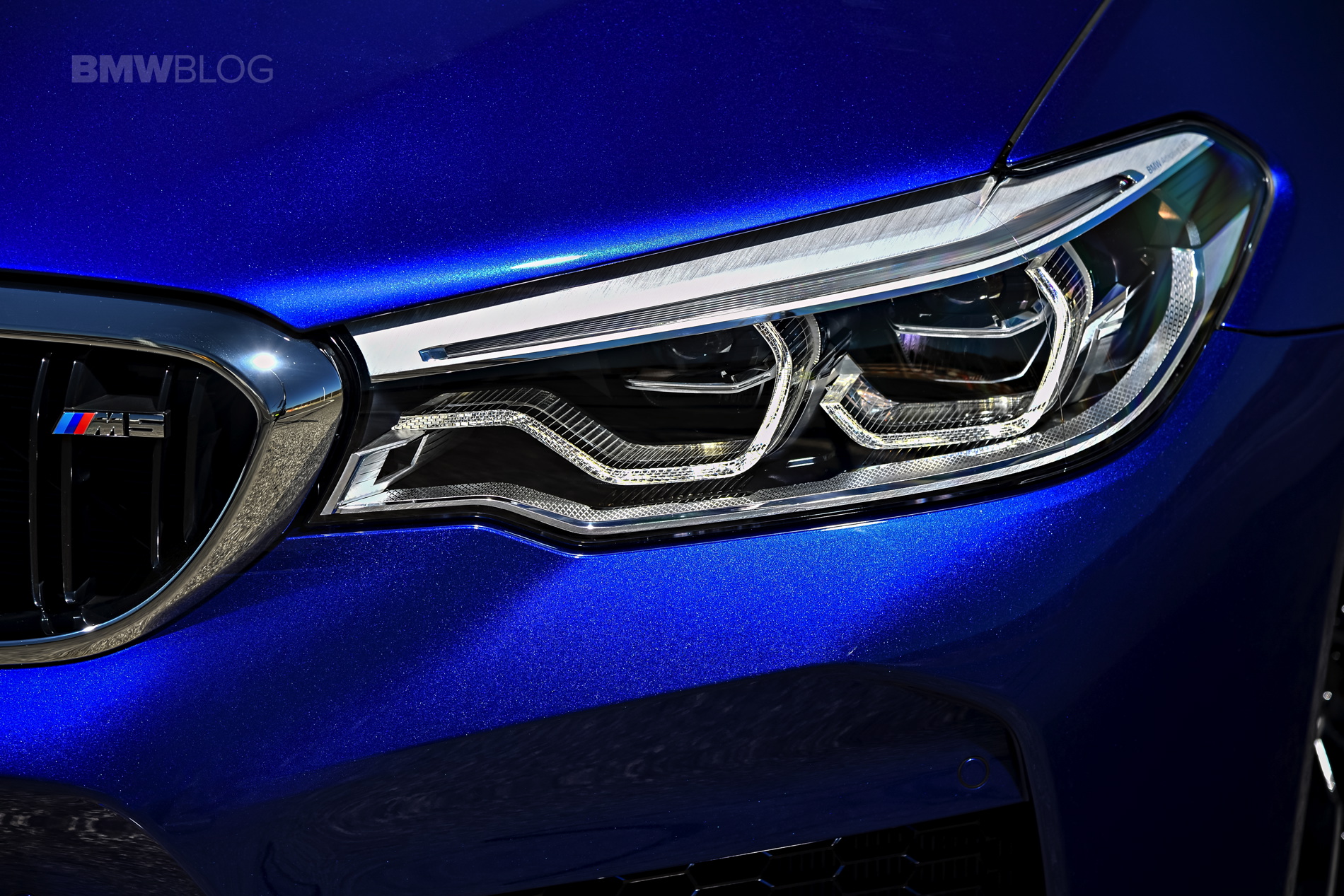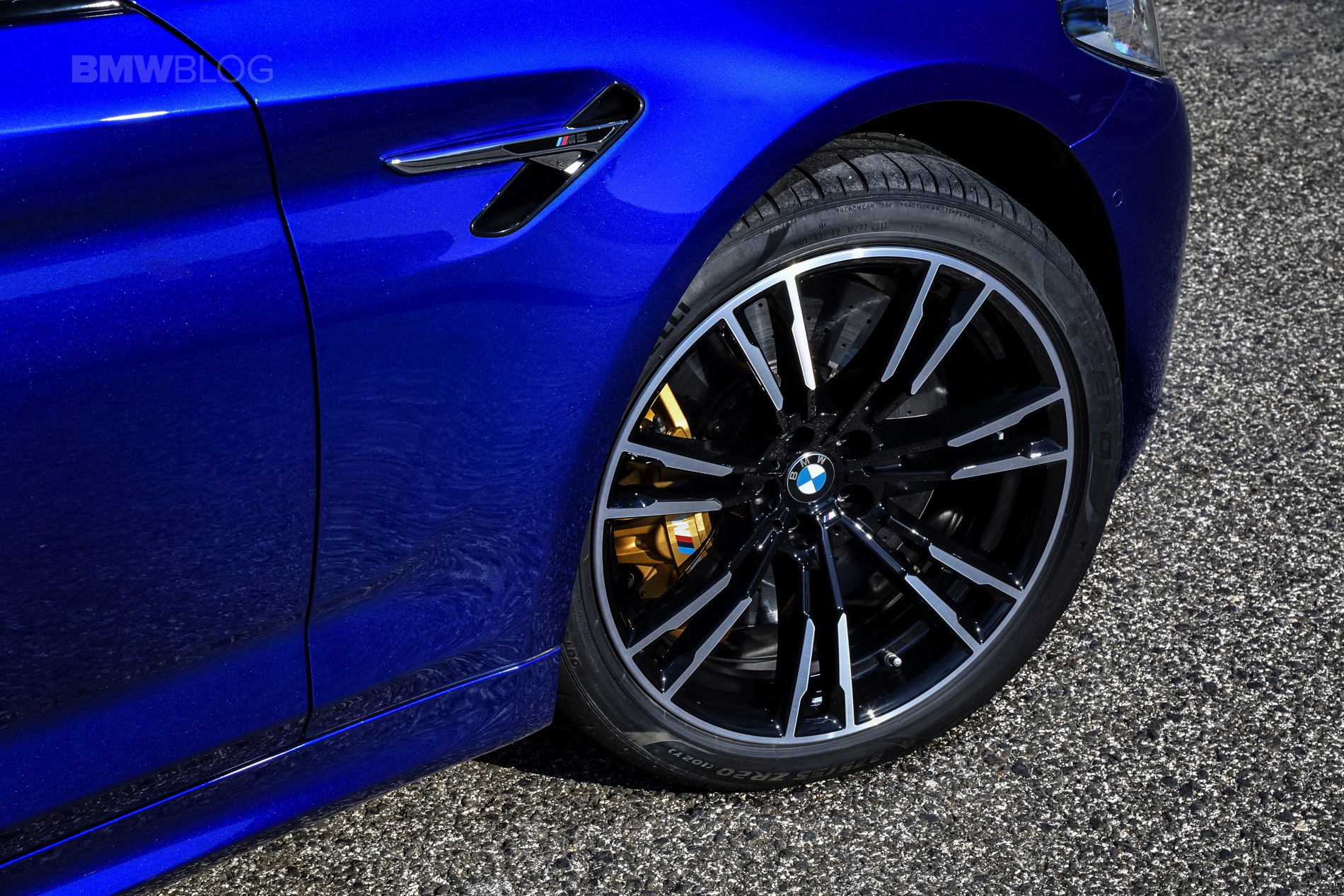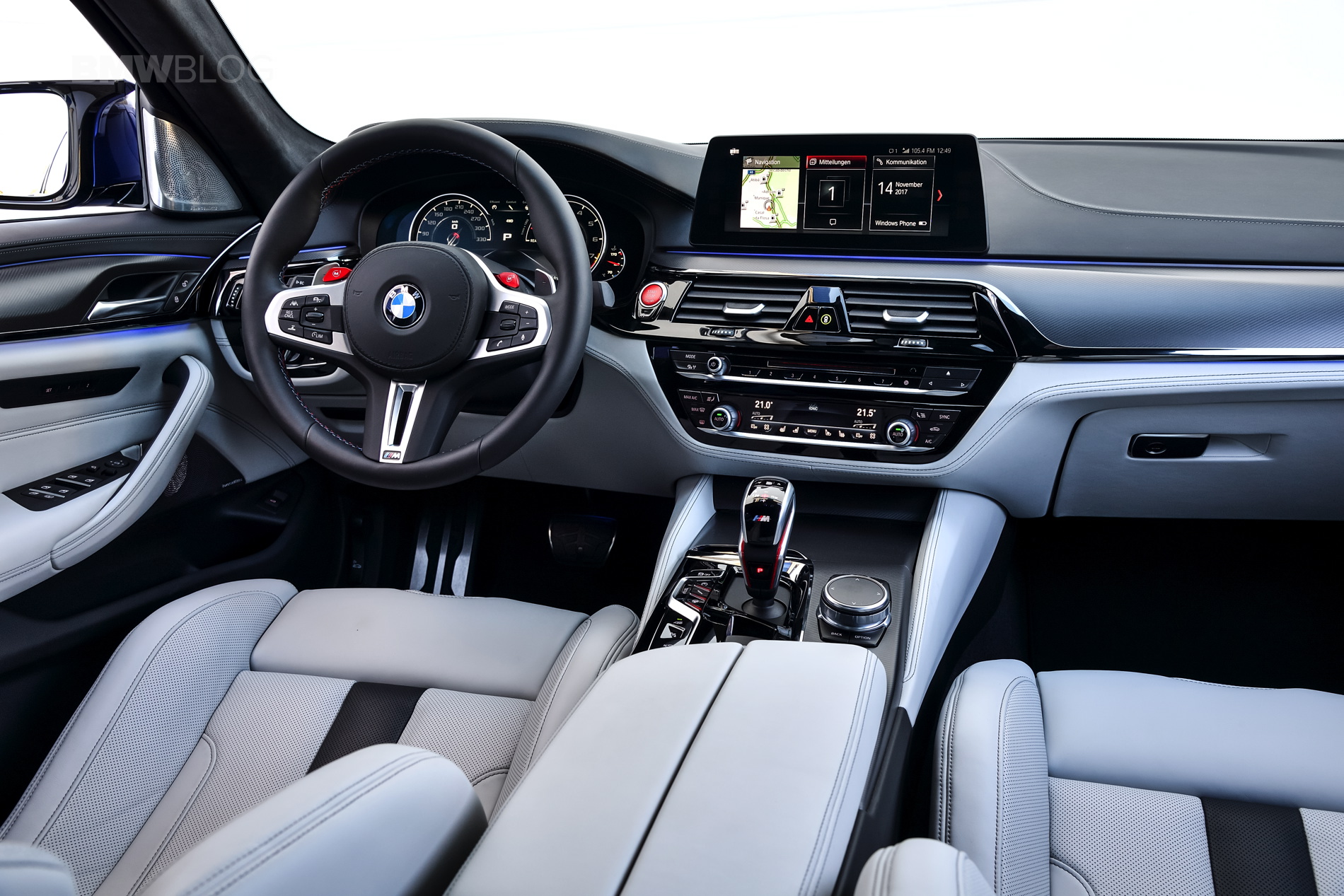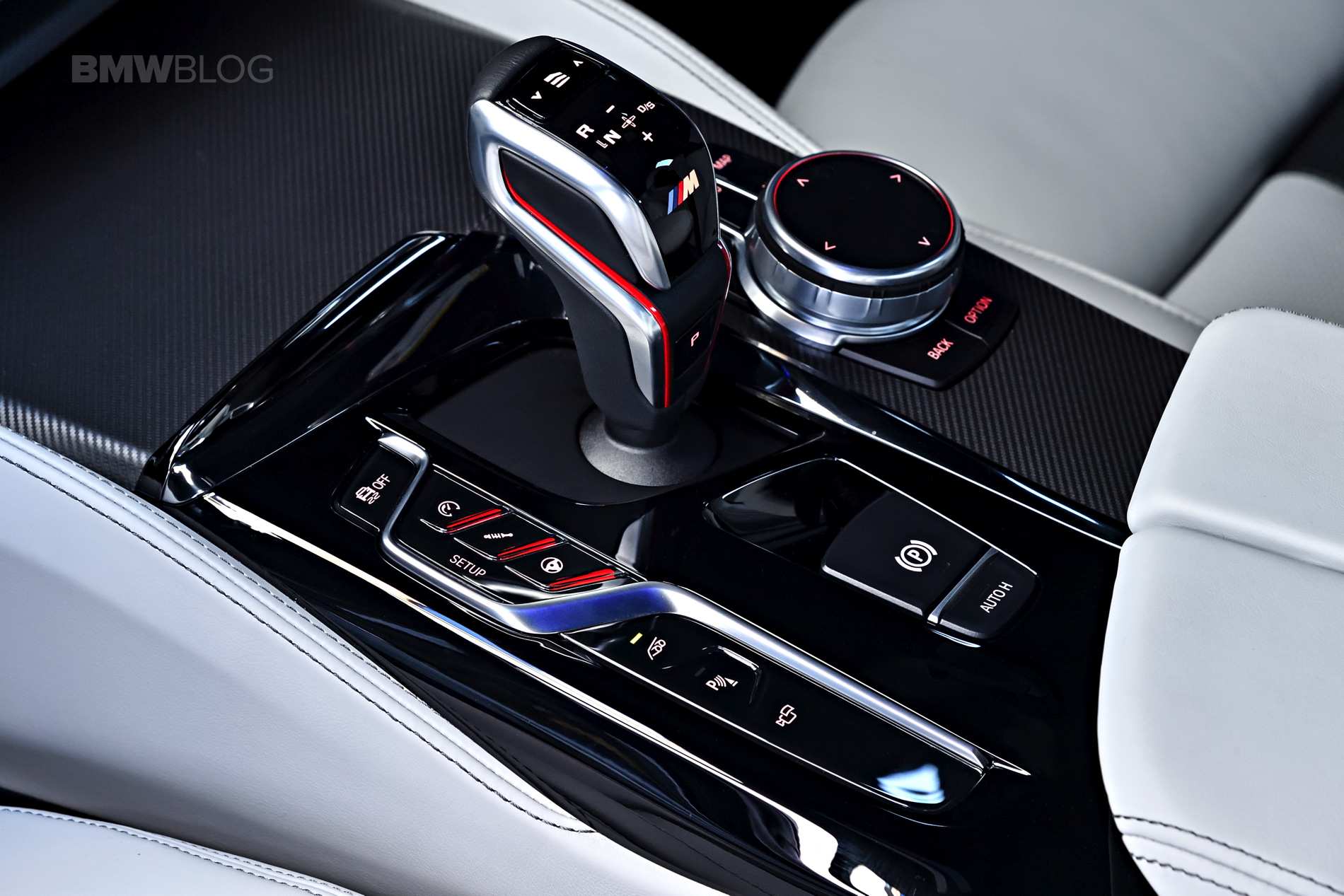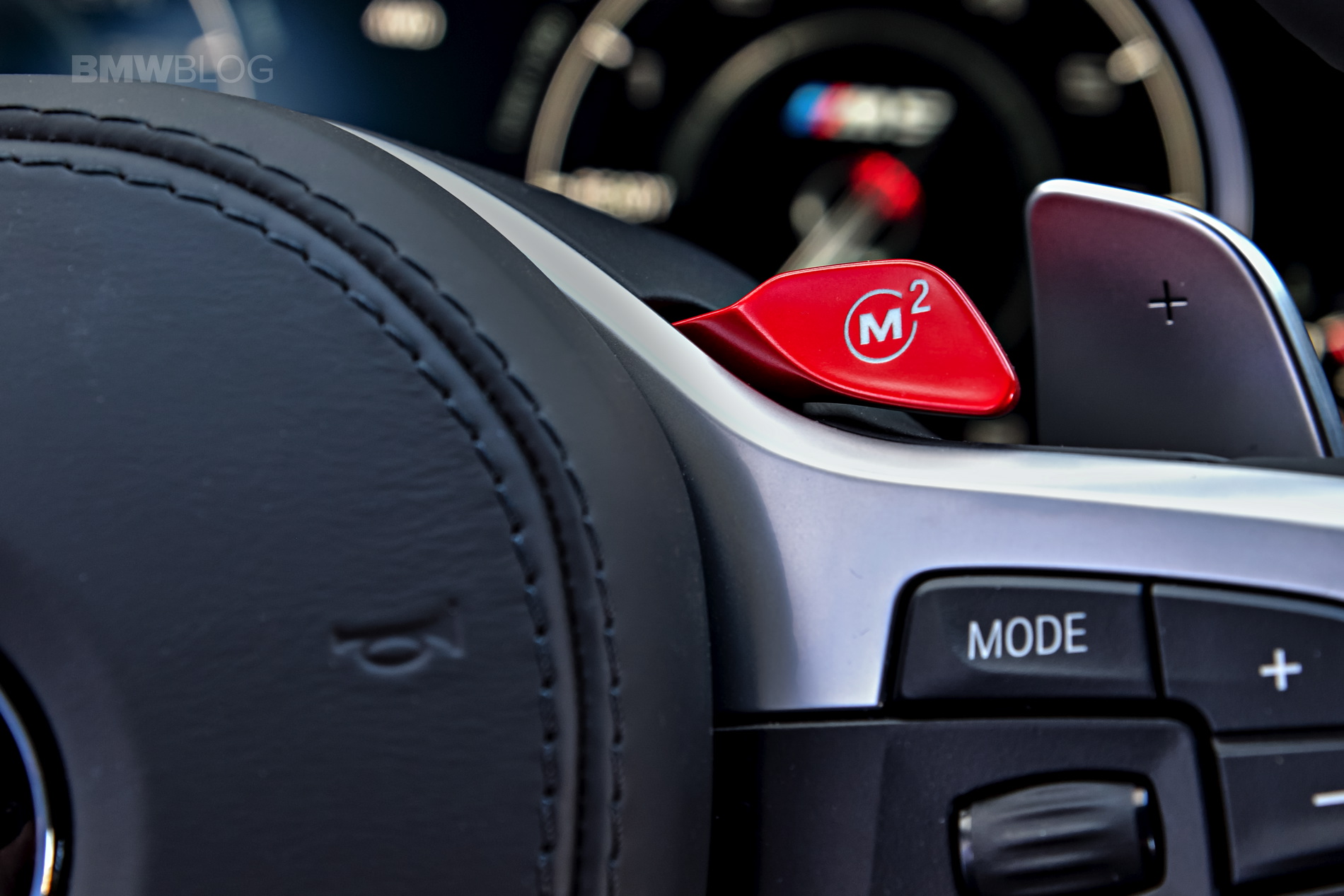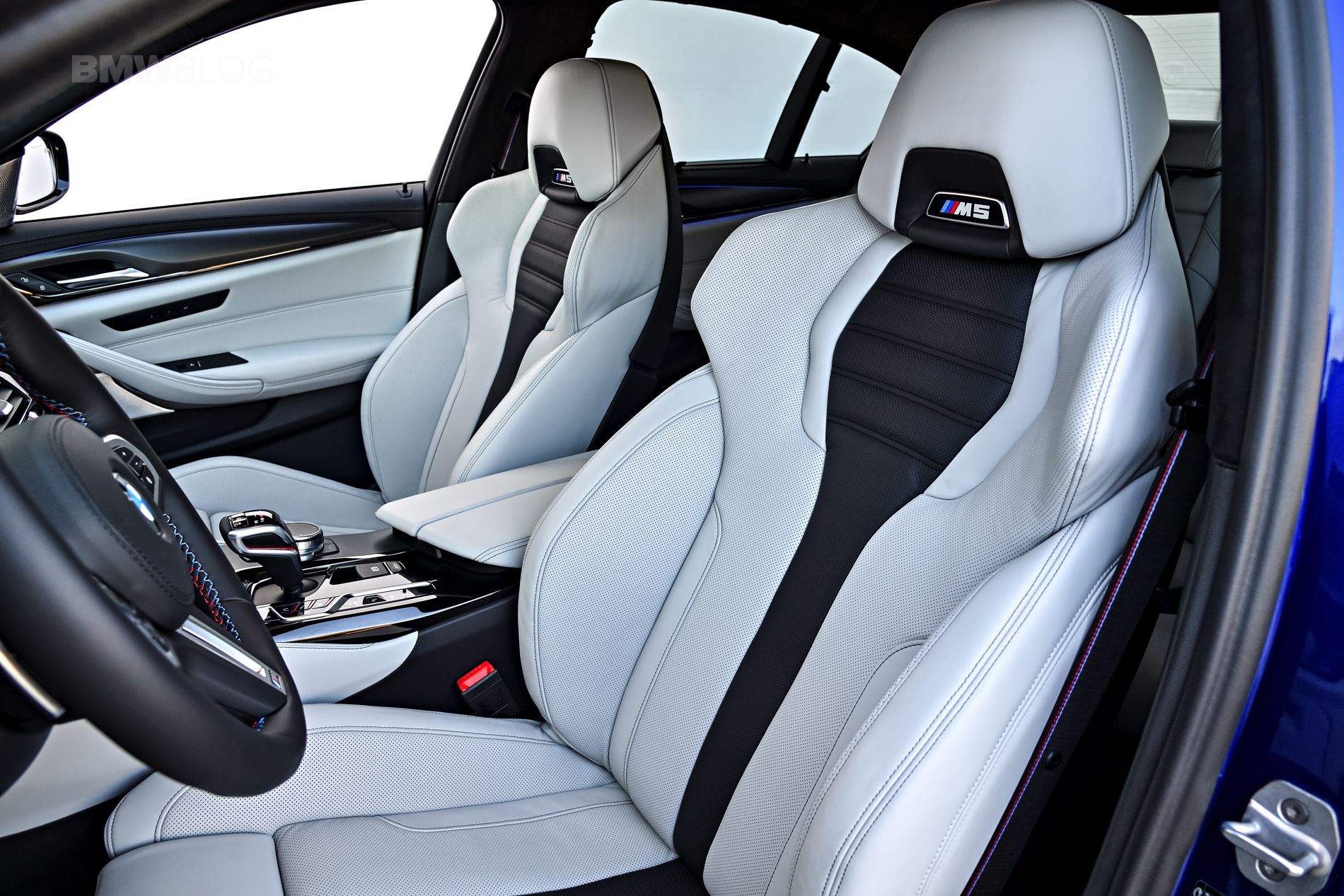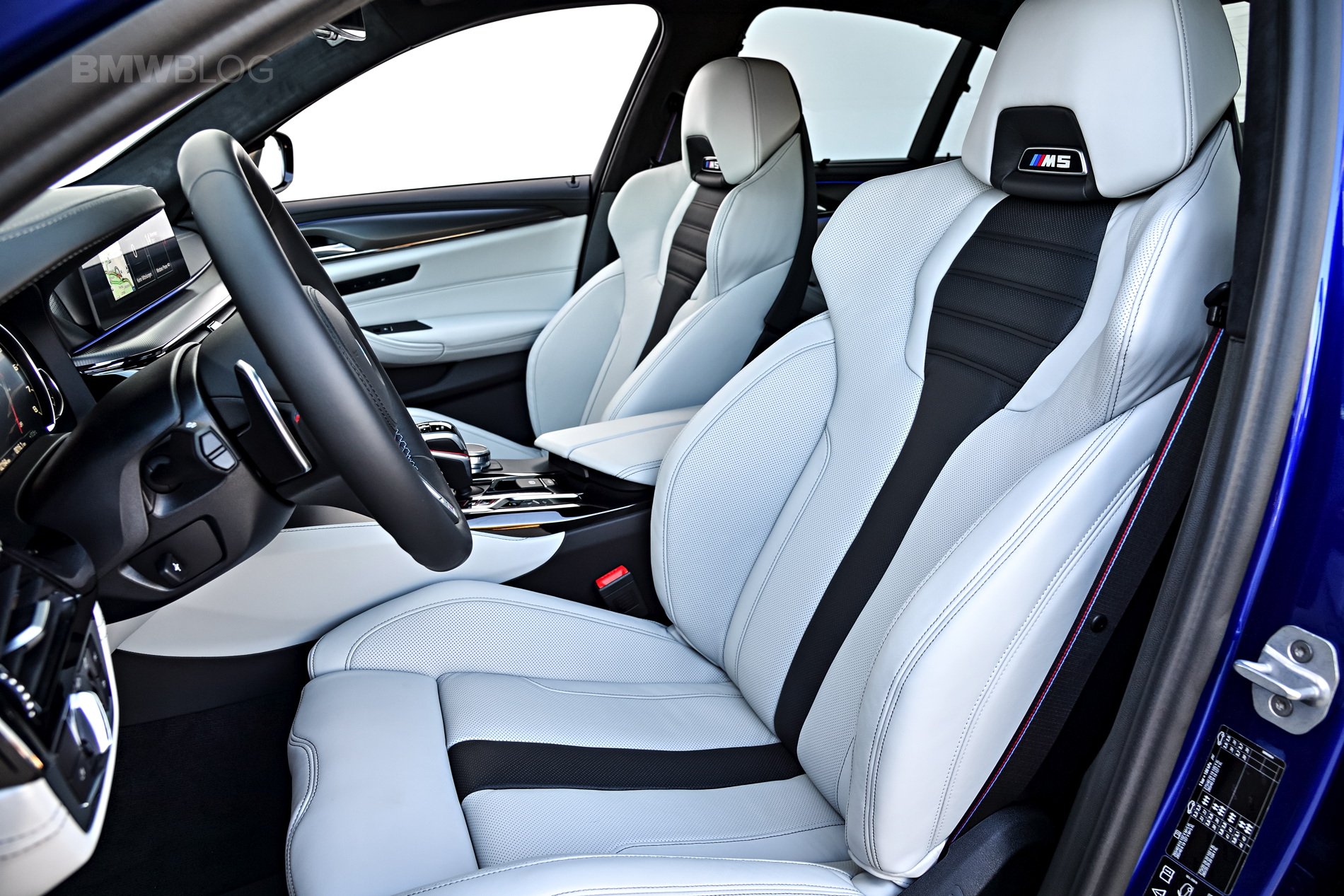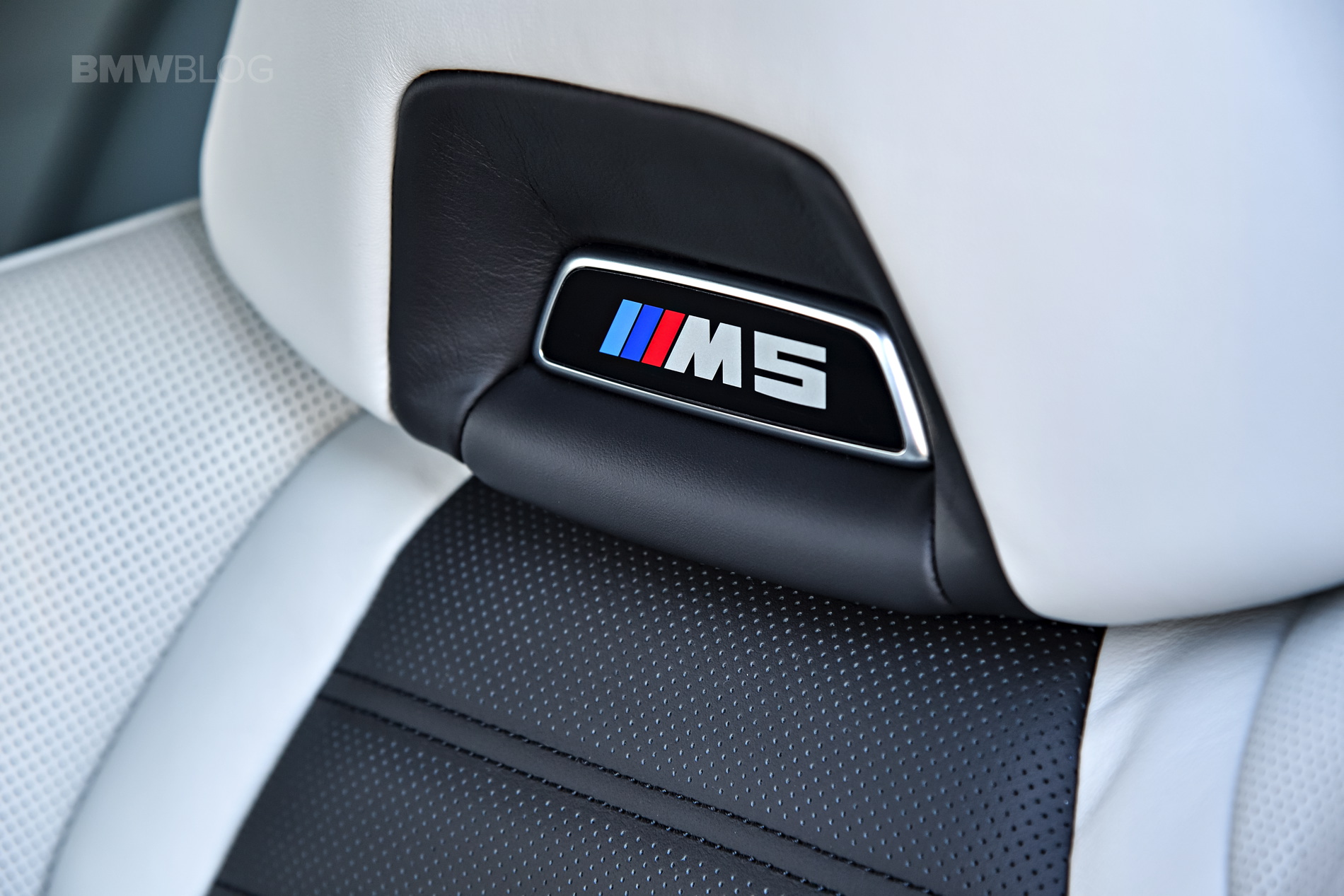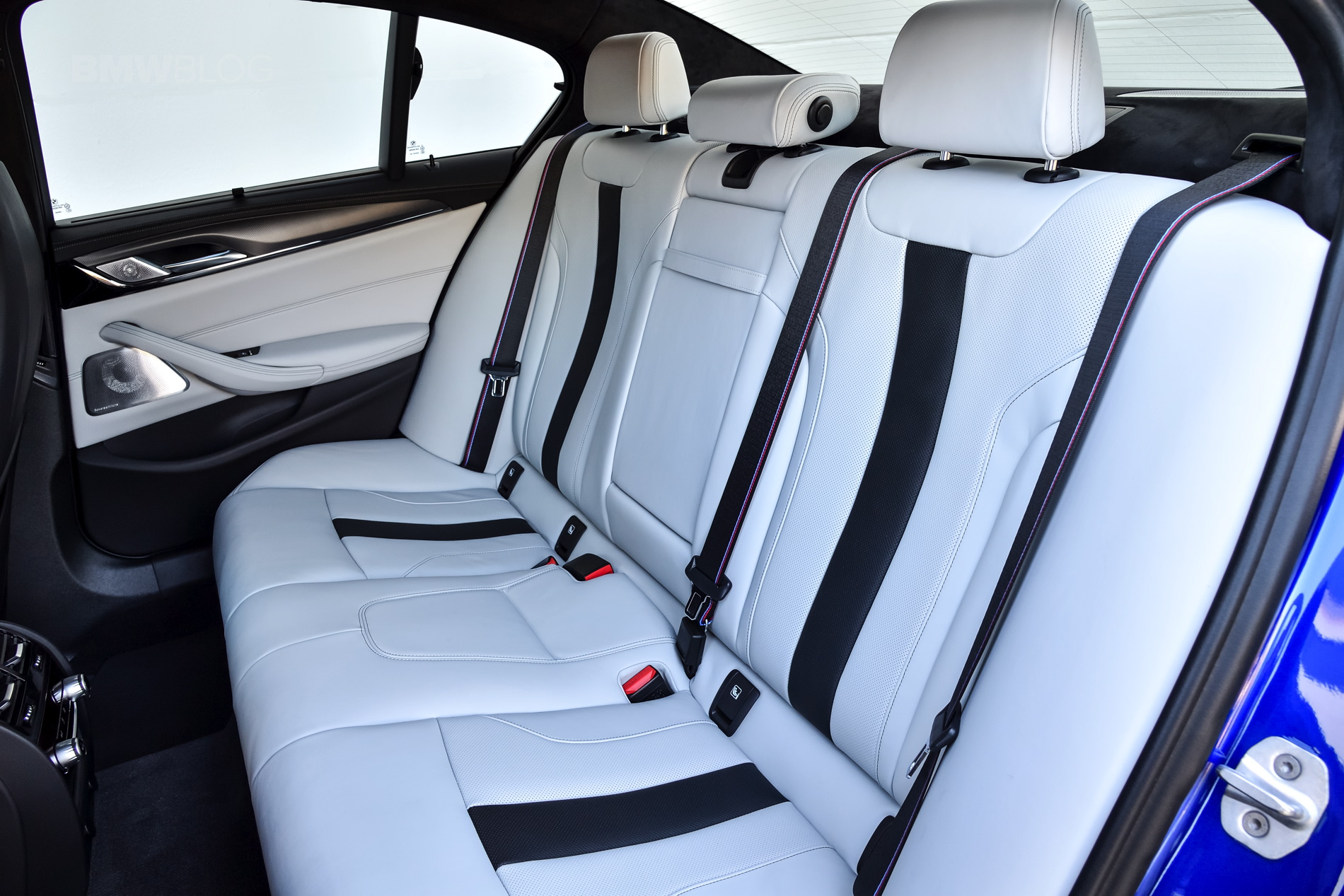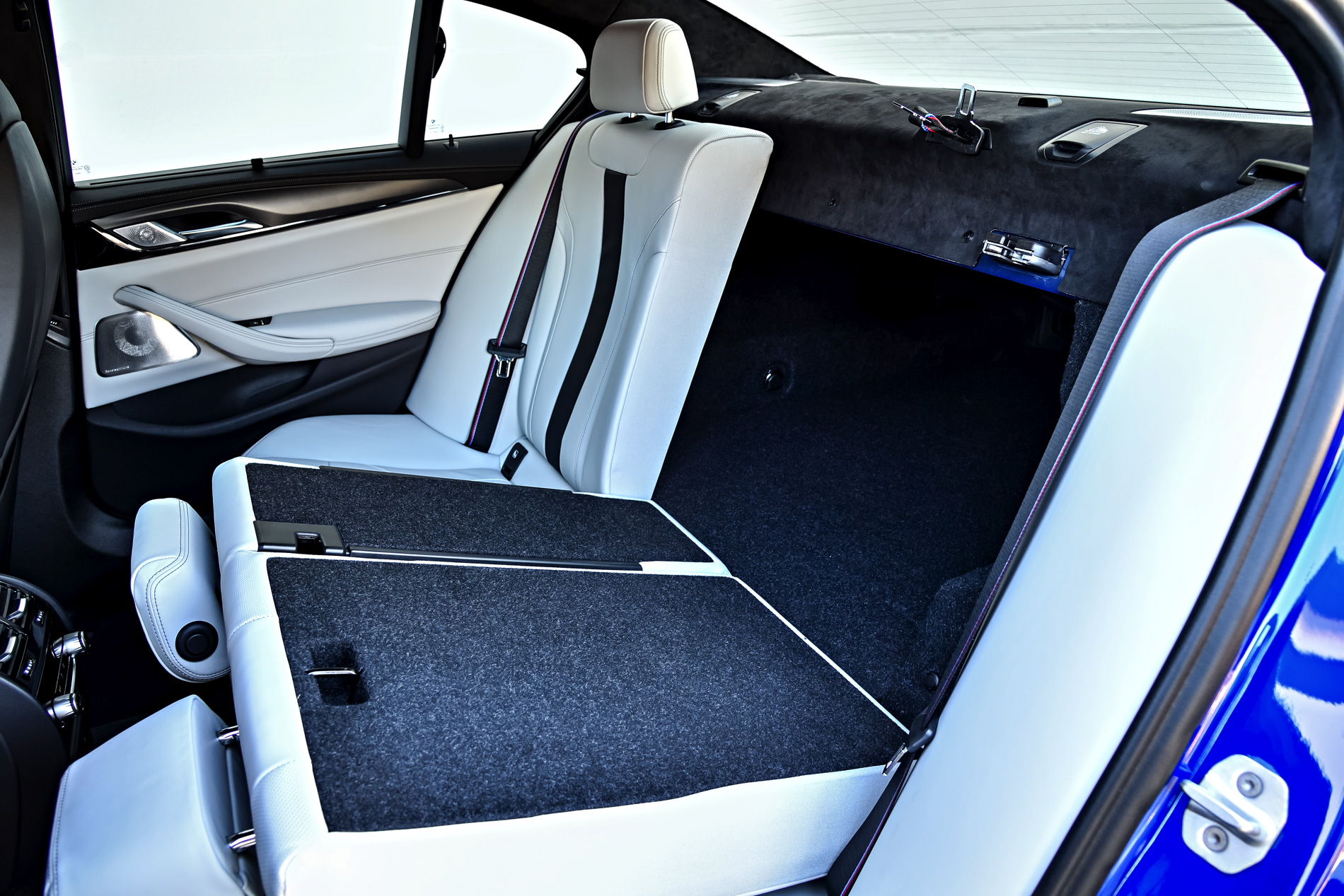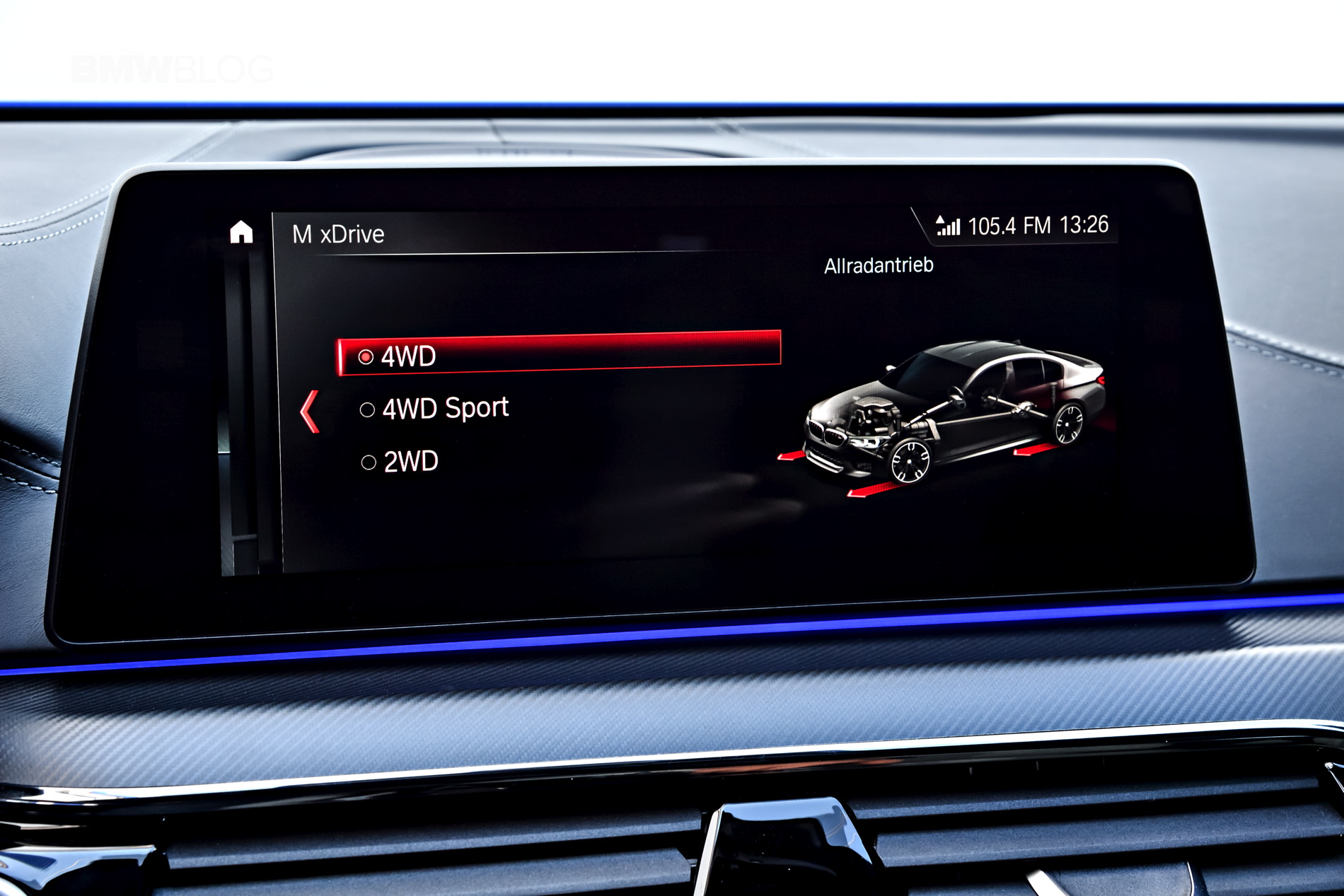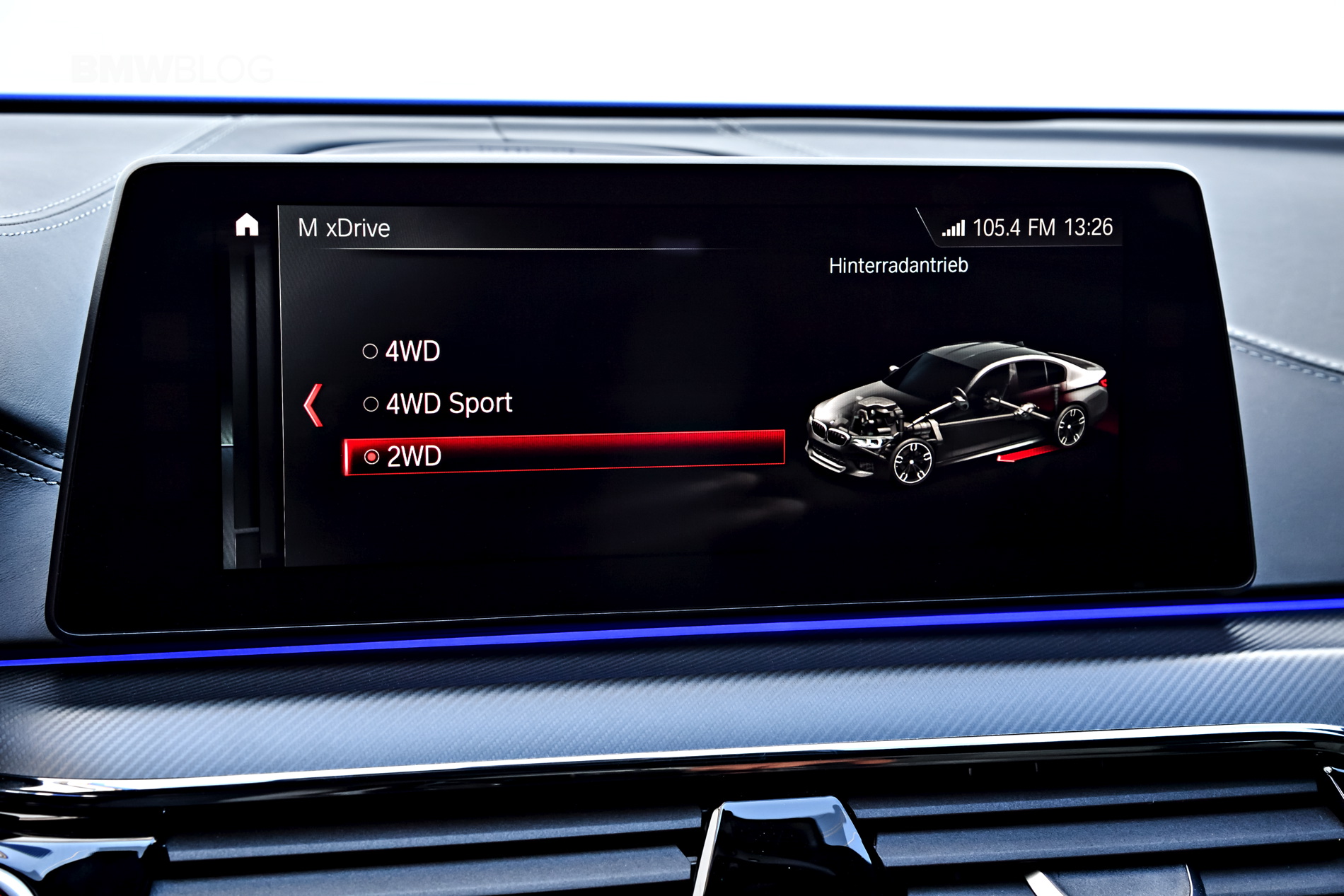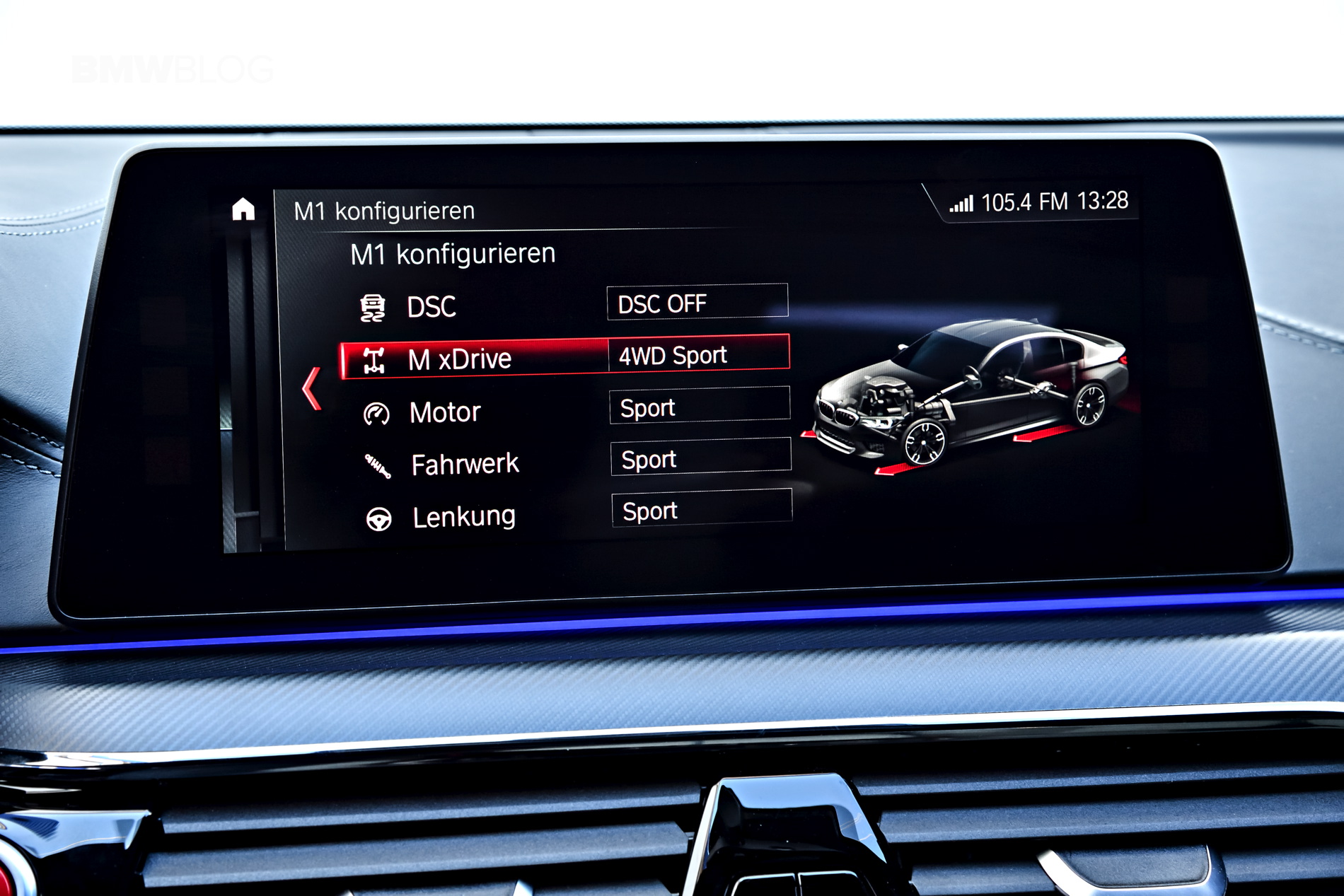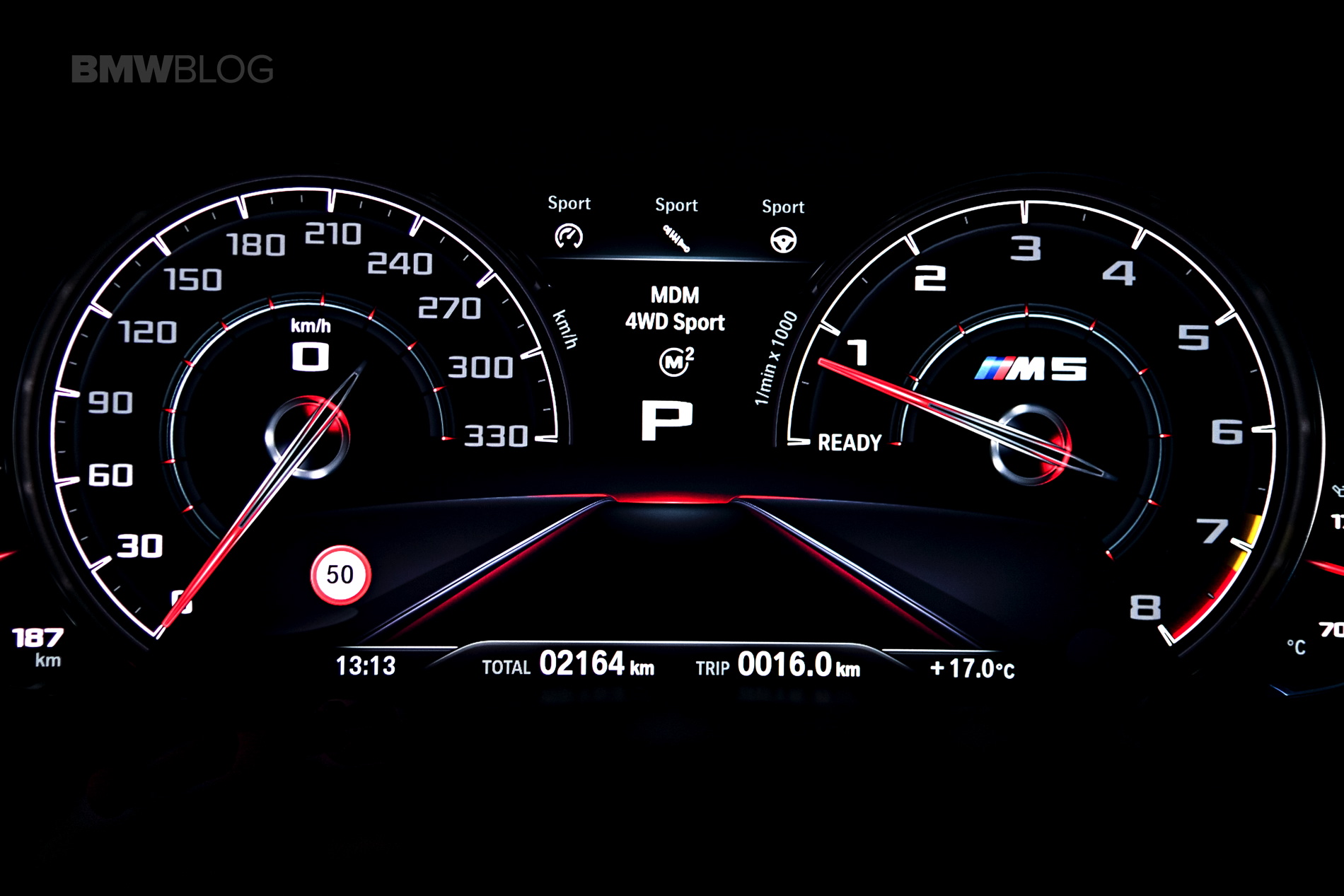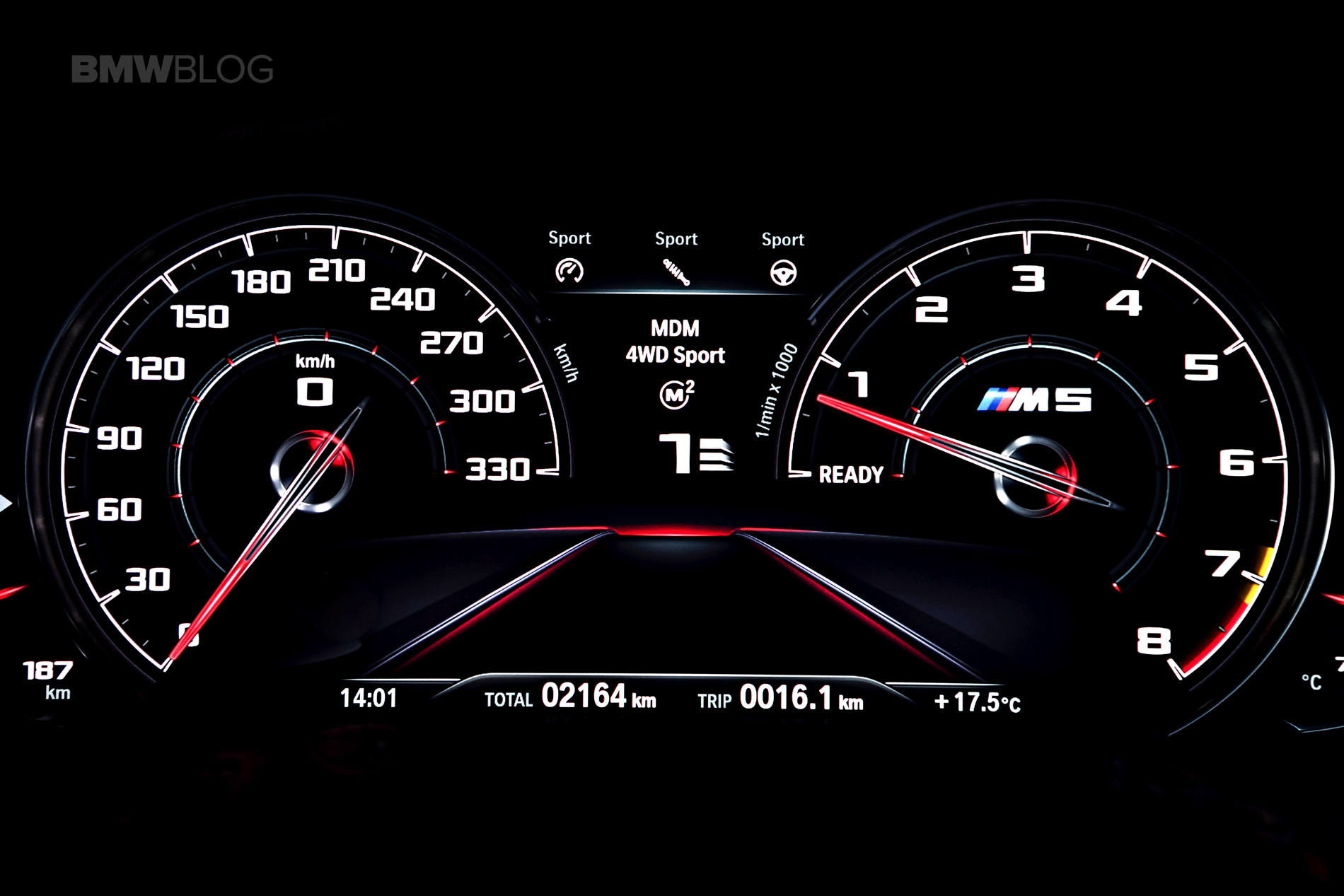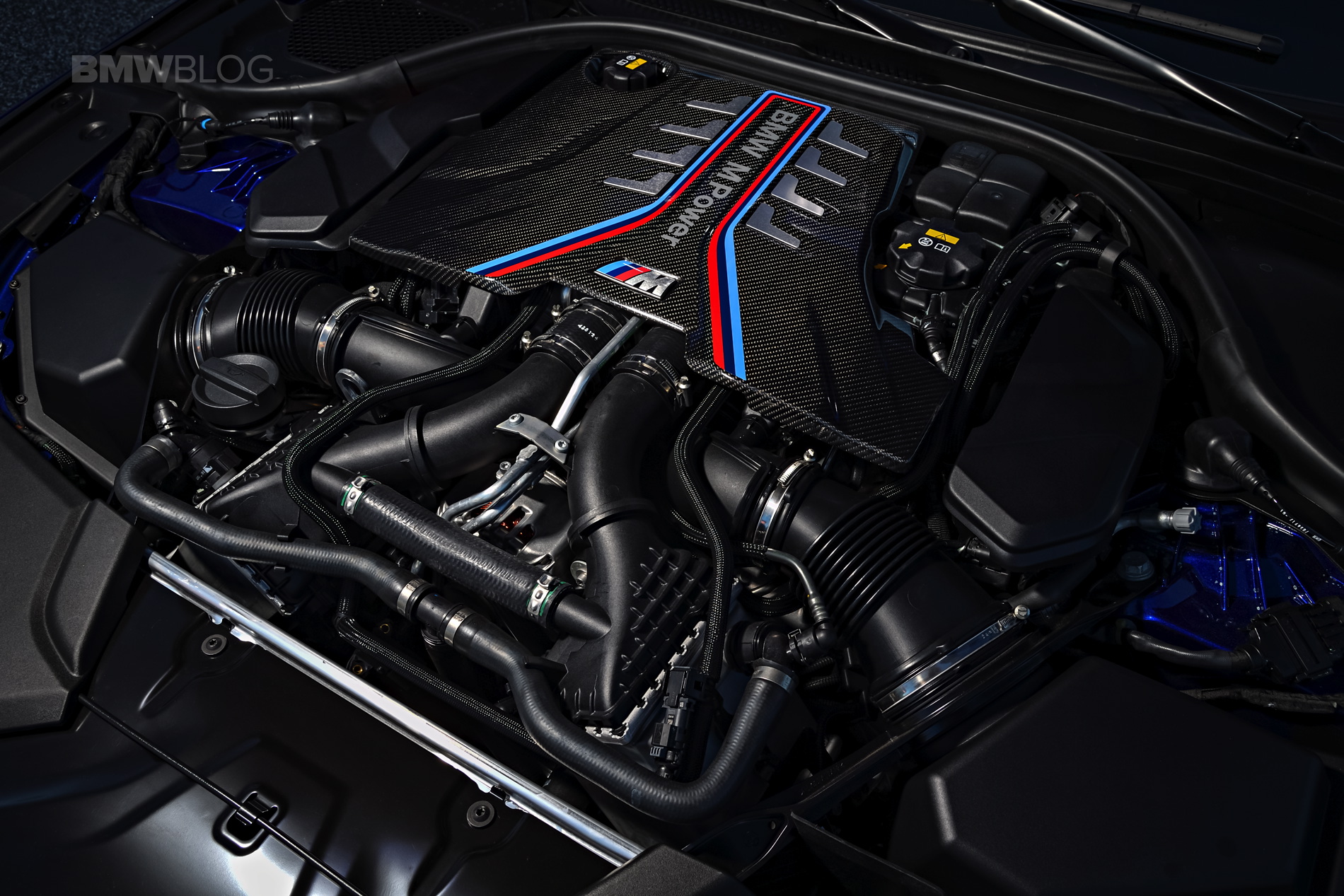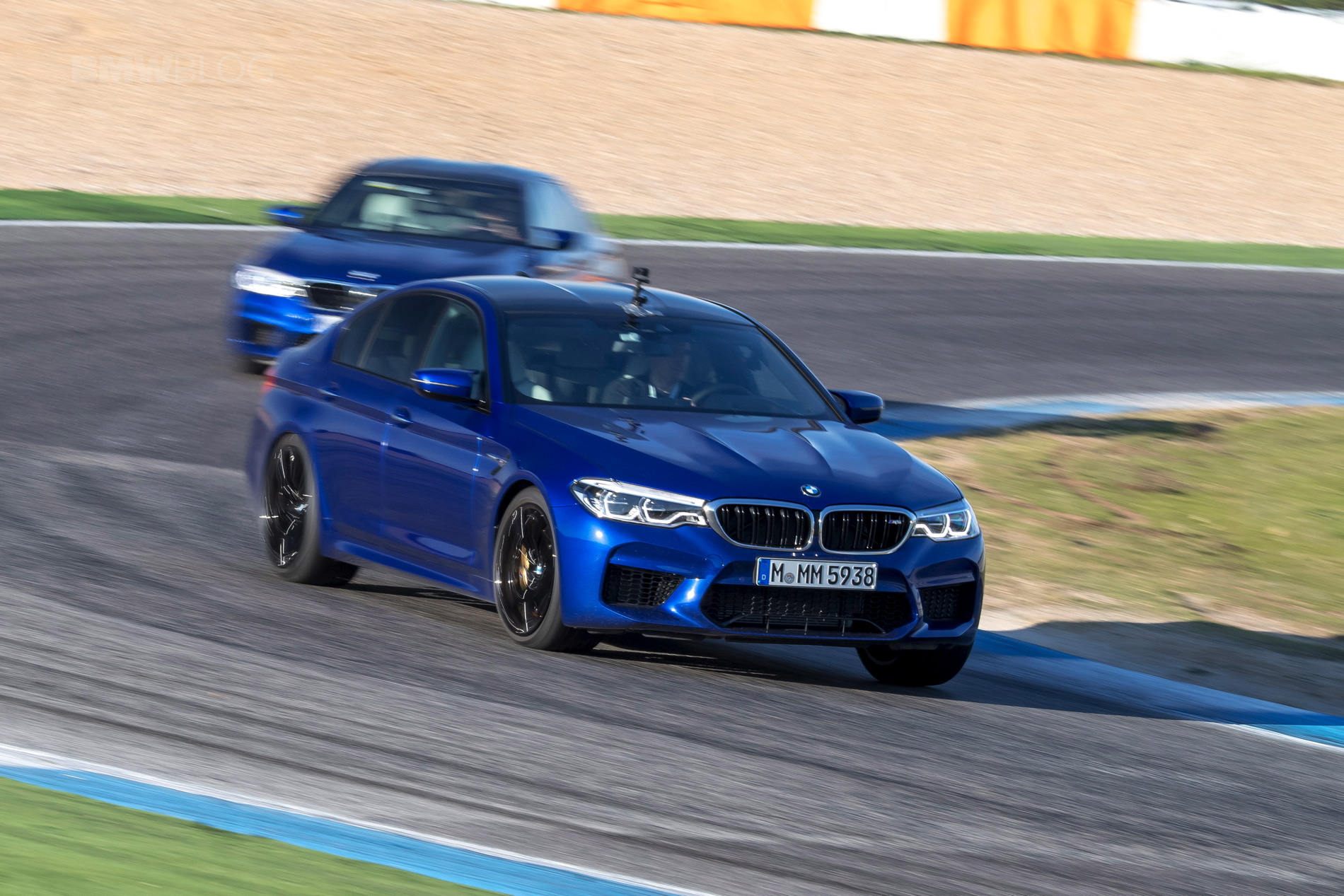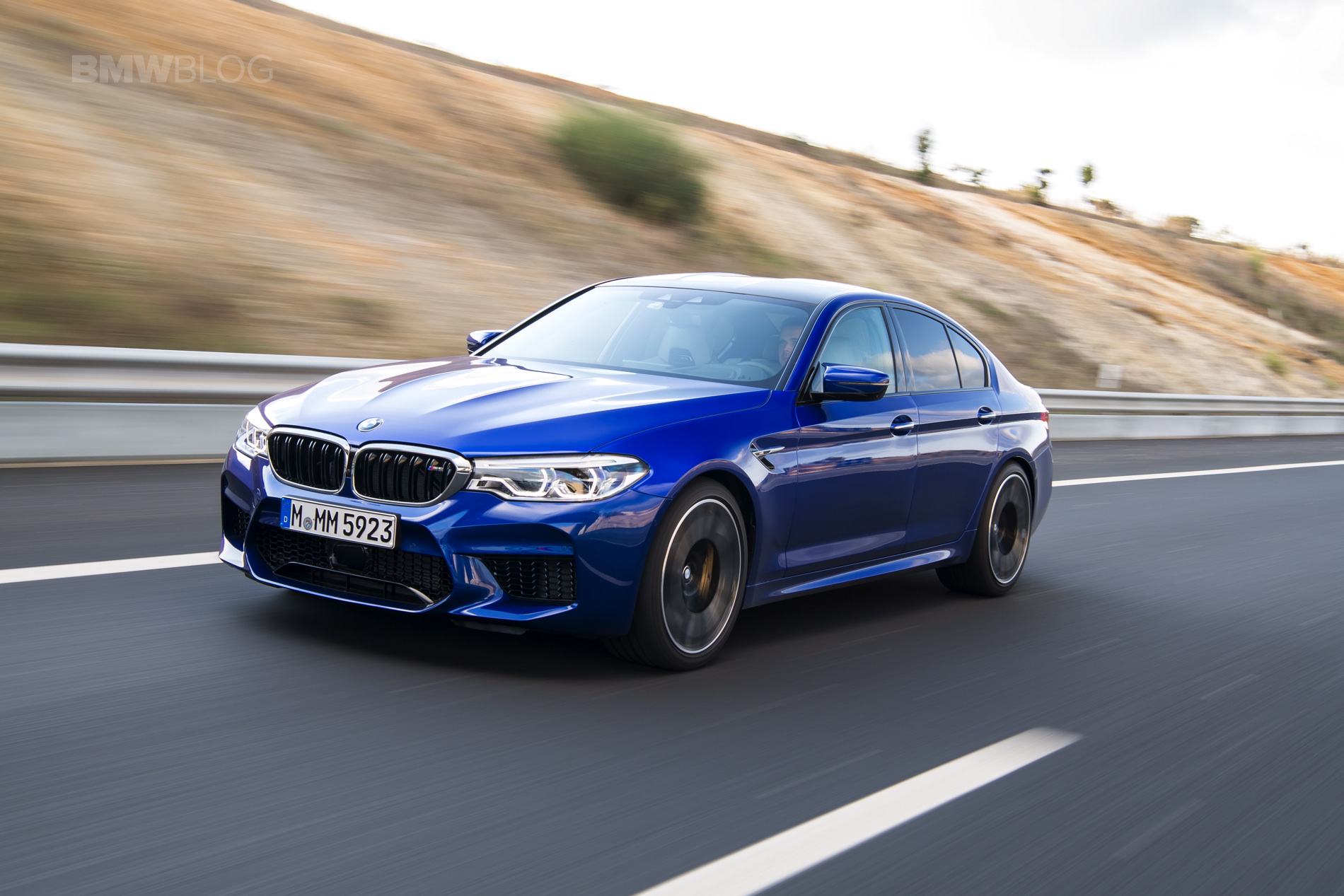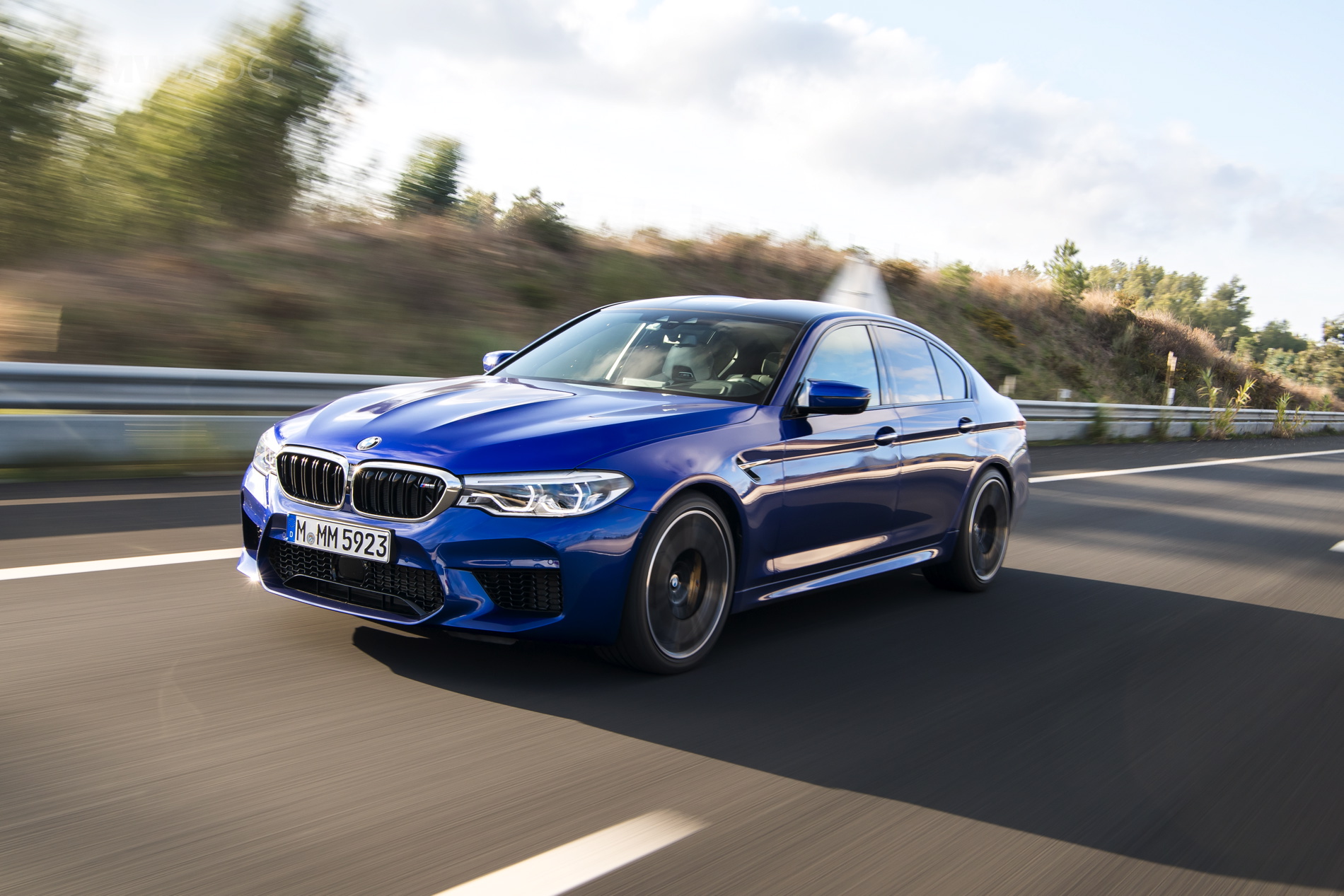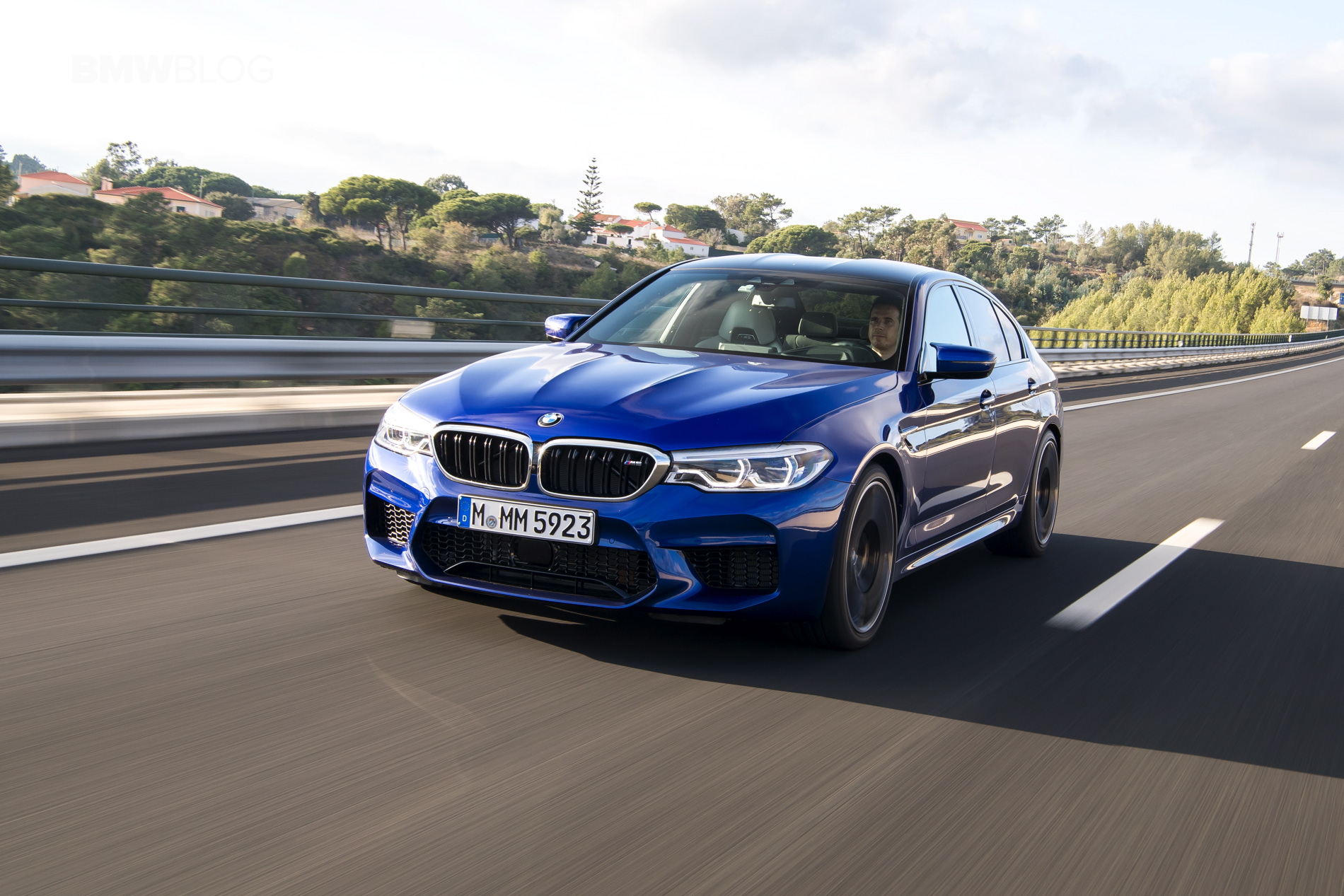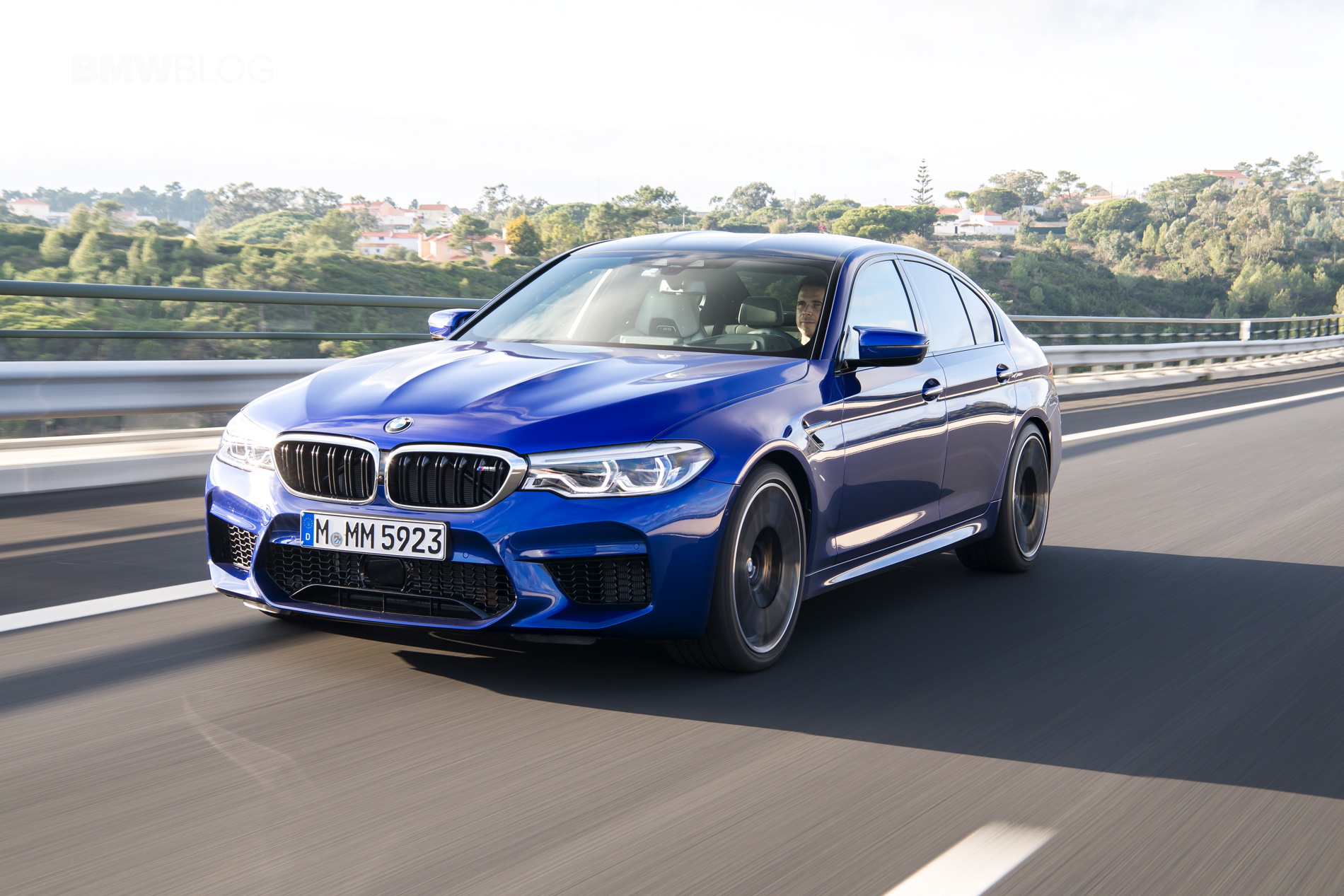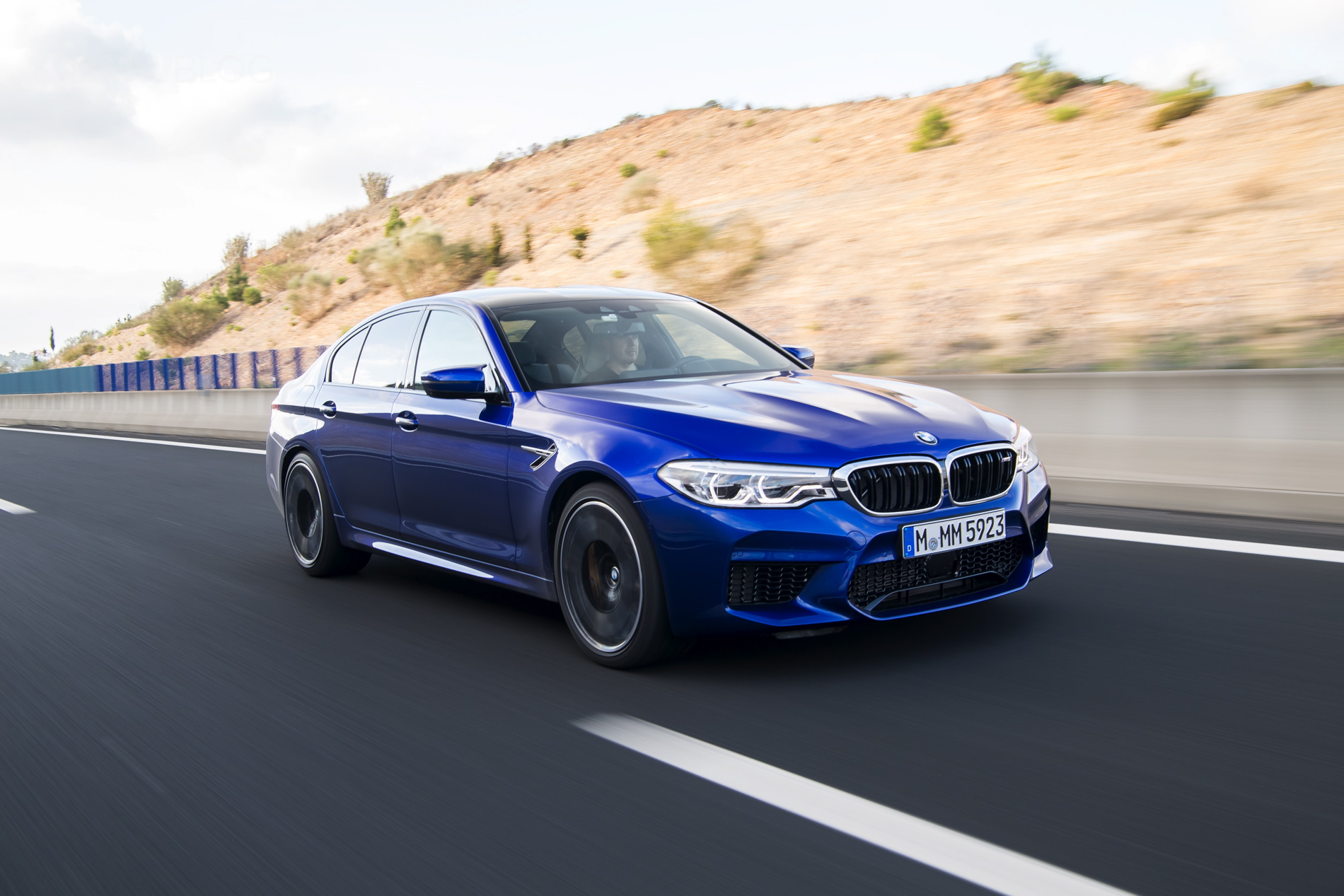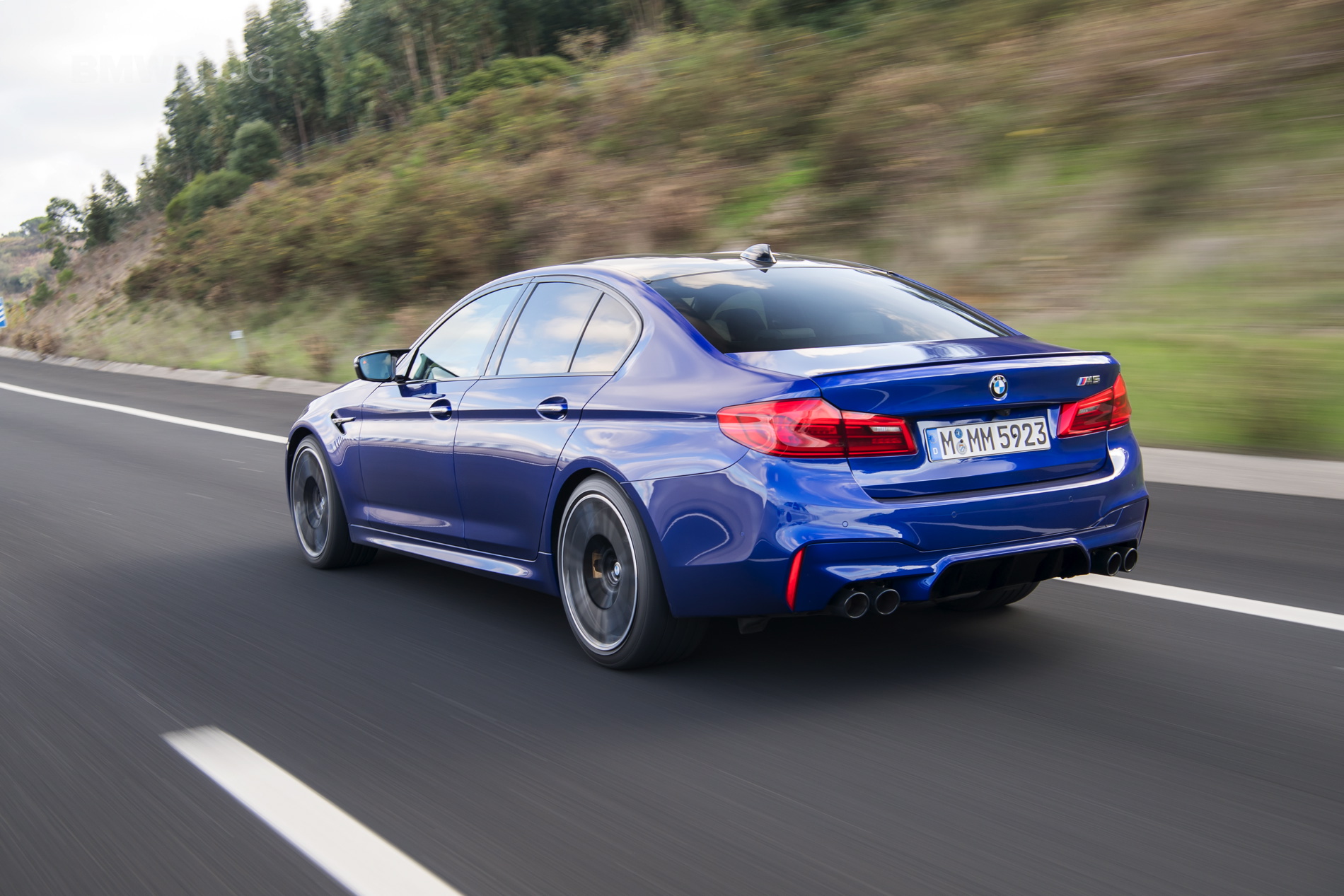In the world of sports sedans, the BMW M5 has always been the benchmark, from the decades-old E28 generation to the fans’ darling E60 and its V10 naturally aspirated engine. Its bloodline now stretches across six generations with the arrival of this latest F90 model which brings a novelty to the M brand – the first ever M5 equipped with the long overdue all-wheel drive system.
And while we lost the naturally aspirated engines in 2011 with the introduction of the F10, what we gain today with the F90 iteration is just as equally important. The benefit of all-wheel drive being added to the M5 is violent, brutal, neck-snapping acceleration. For some. But for others living in the snowy areas of the world, the all-wheel drive system gives them and their family piece of mind and extra safety on the road.
 We drove the new German uber sedan in Portugal last week on a mix of surfaces, and everything from narrow, curvy roads to the Lisbon highways, before ending up on the famous Estoril race track. BMW M felt so comfortable with the performance of the M5 that they unleashed us to test the new car in every way possible.
We drove the new German uber sedan in Portugal last week on a mix of surfaces, and everything from narrow, curvy roads to the Lisbon highways, before ending up on the famous Estoril race track. BMW M felt so comfortable with the performance of the M5 that they unleashed us to test the new car in every way possible.
The Engine
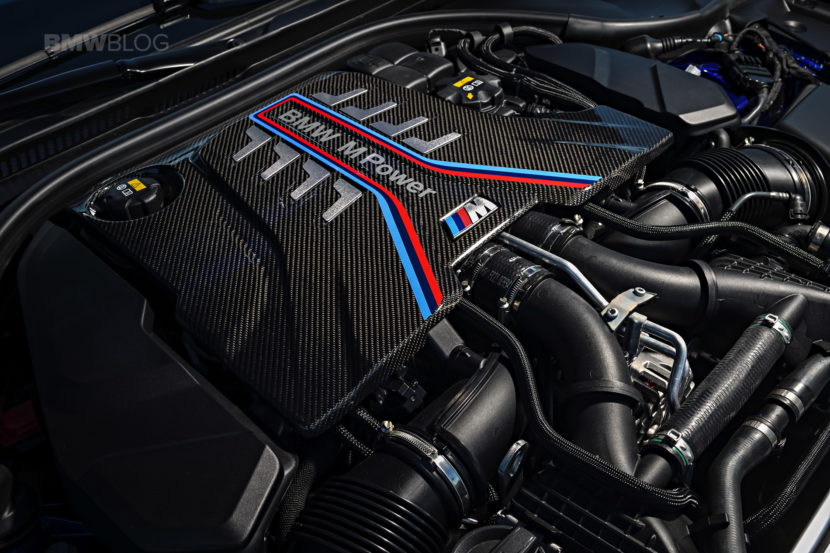 Let’s get to the technical stuff right away, so we can focus on the driving experience. Under the hood of the F90 M5 is the newest version of BMW’s 4.4 liter twin-turbocharged V8 engine. Now, it makes 600 hp on the nose and 553 lb-ft of torque, numbers that put it on even footing with the 603-hp Mercedes-AMG E 63 S and the 605-hp Audi RS7. All of that fury is sent through an eight-speed ZF-sourced automatic that’s been specifically tuned for M5 duty.
Let’s get to the technical stuff right away, so we can focus on the driving experience. Under the hood of the F90 M5 is the newest version of BMW’s 4.4 liter twin-turbocharged V8 engine. Now, it makes 600 hp on the nose and 553 lb-ft of torque, numbers that put it on even footing with the 603-hp Mercedes-AMG E 63 S and the 605-hp Audi RS7. All of that fury is sent through an eight-speed ZF-sourced automatic that’s been specifically tuned for M5 duty.
When powering all four wheels, as it does normally (we’ll get into that in a bit), this new BMW M5 can accelerate from 0-60 mph in 3.2 seconds. That makes it the fastest accelerating BMW of all time, faster than even the M4 GTS. And that speaks volume. If optioned with the M Driver’s Package, the electronic speed-limiting handcuffs come off for a claimed top speed of 305km/h.
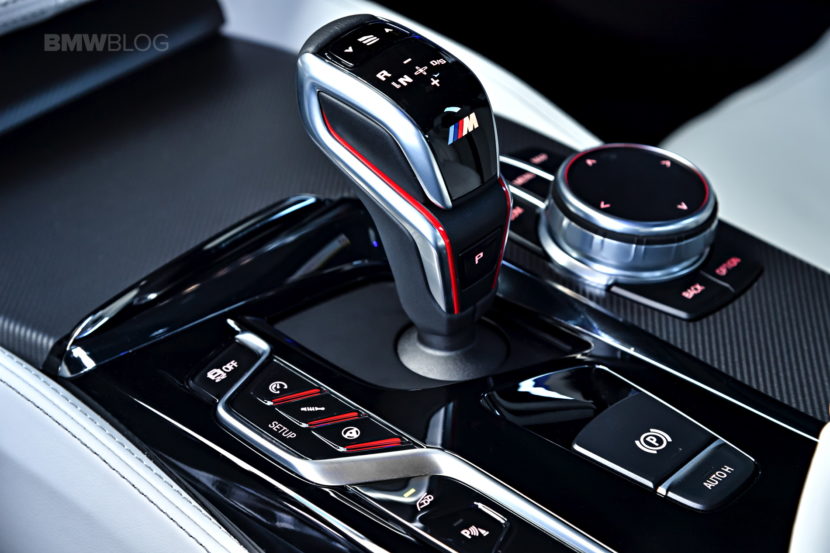 Likely the biggest issue some BMW fans might have with the new M5 is the lack of the DCT, which has now being replaced by a most cost and fuel efficient ZF 8-speed transmission. BMW engineers though swear by the new gearbox which offers similar shift times to the DCT. According to the M techies, some customers complained of a less-than-smooth engagement of reverse gear with the DCT. And the ZF-8 speed for the M5 was born.
Likely the biggest issue some BMW fans might have with the new M5 is the lack of the DCT, which has now being replaced by a most cost and fuel efficient ZF 8-speed transmission. BMW engineers though swear by the new gearbox which offers similar shift times to the DCT. According to the M techies, some customers complained of a less-than-smooth engagement of reverse gear with the DCT. And the ZF-8 speed for the M5 was born.
On The Track
Before we jump into the track experience, let’s also take a step back to explain the complicatedly cool M xDrive system. The main hardware components of M xDrive are based on the BMW xDrive intelligent all-wheel-drive system and the Active M Differential, while the central M-specific driving dynamics control software takes care of orchestrating the various components to extremely innovative effect.
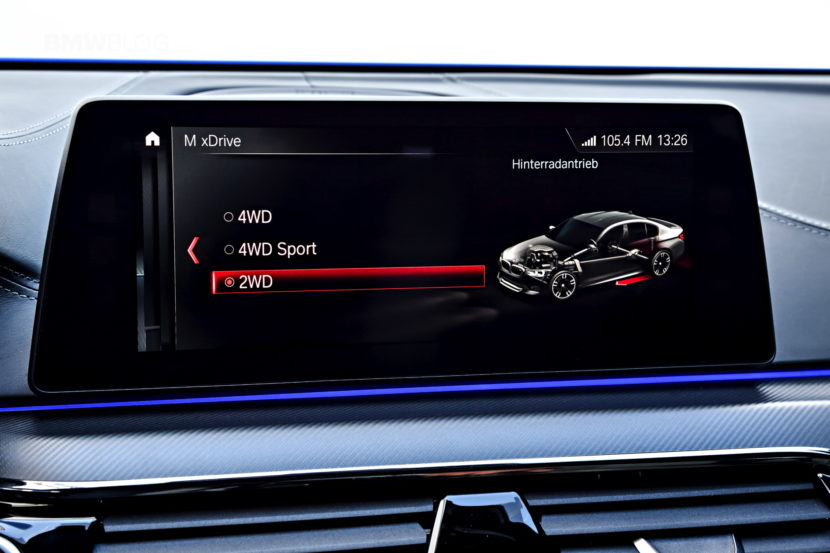 When first started, the BMW M5 will be in its normal “4WD” mode with DSC (Dynamic Stability Control) on. From there, the driver can tune the drivetrain to his/her liking. There is also a “4WD Sport” mode, which sends more power to the rear wheels all of the time. It also allows for more slip and bigger slip-angles, for both more fun and better track handling. To increase the fun even further, the DSC gets switched to MDM (M Dynamic Mode) when put into 4WD Sport.
When first started, the BMW M5 will be in its normal “4WD” mode with DSC (Dynamic Stability Control) on. From there, the driver can tune the drivetrain to his/her liking. There is also a “4WD Sport” mode, which sends more power to the rear wheels all of the time. It also allows for more slip and bigger slip-angles, for both more fun and better track handling. To increase the fun even further, the DSC gets switched to MDM (M Dynamic Mode) when put into 4WD Sport.


 But the full hooligan M5 experience is the “2WD” mode, which disconnects the front axle completely. So it becomes fully rear-wheel drive, as many enthusiasts want. And it isn’t some Drift Mode, like its competitors have, where it’s a gimmicky temporary mode to humor people. It’s the real deal and doesn’t engage the front axle again until it’s told to or the car is restarted.
But the full hooligan M5 experience is the “2WD” mode, which disconnects the front axle completely. So it becomes fully rear-wheel drive, as many enthusiasts want. And it isn’t some Drift Mode, like its competitors have, where it’s a gimmicky temporary mode to humor people. It’s the real deal and doesn’t engage the front axle again until it’s told to or the car is restarted.
In addition to these unique all-wheel-drive features, the BMW M5 is also outfitted with a full range of steering, suspension, and exhaust settings accessible to the driver via console and/or steering buttons, or via the highly customizable iDrive system.
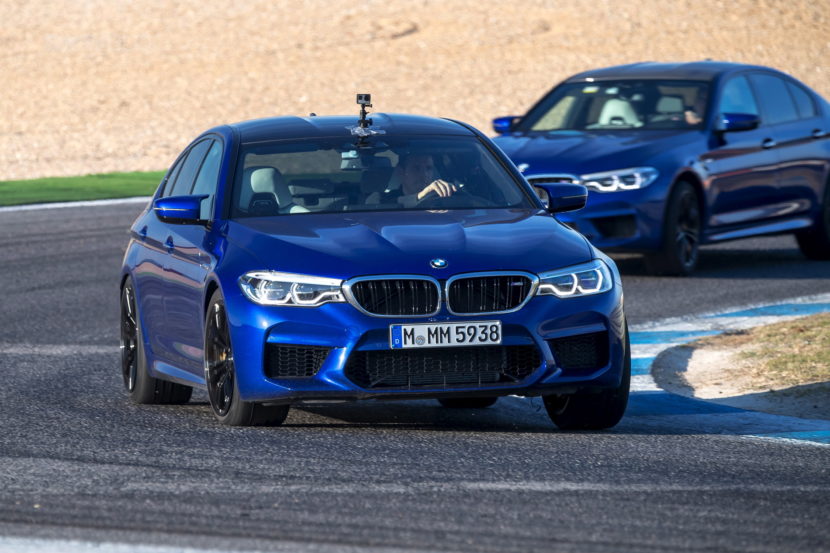 To help us properly test the new M5, BMW lent us Antonio Felix Da Costa, the Cascais-native who races for BMW Motorsport in various championships. Da Costa was our lead driver in an M5 M Performance Parts car and his job was solely to show us the best racing lines and to make us better drivers behind the wheel of the M5. This was more of a lunch break for him, but for us it was a full workout around the technical and fast Estoril.
To help us properly test the new M5, BMW lent us Antonio Felix Da Costa, the Cascais-native who races for BMW Motorsport in various championships. Da Costa was our lead driver in an M5 M Performance Parts car and his job was solely to show us the best racing lines and to make us better drivers behind the wheel of the M5. This was more of a lunch break for him, but for us it was a full workout around the technical and fast Estoril.
From the first moments on the track, the F90 M5 felt lighter and more nimble than its predecessor, a thought shared by the Da Costa as well. Looking back now, the F10 M5 was a decent ride on the track, but nowhere near what the F90 has to offer. The highly engineered chassis, coupled with some weight savings, gives the new M5 the ability to shine on the track, even though that’s not its usual habitat.
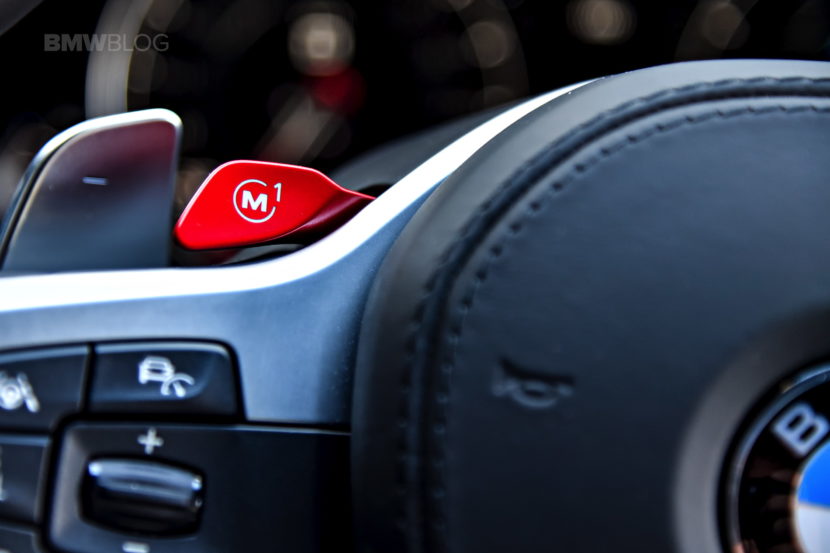 Our lap kicked off with the M1 button activated, which keeps most of the safety checks on and helps you get a feel of the track before unleashing its full potential. Or at least, as much potential as one can handle. As recently with new BMWs, the steering is weighty enough in Sport or Sport+ mode, so we could see some pundits craving that old school, natural, feedback.
Our lap kicked off with the M1 button activated, which keeps most of the safety checks on and helps you get a feel of the track before unleashing its full potential. Or at least, as much potential as one can handle. As recently with new BMWs, the steering is weighty enough in Sport or Sport+ mode, so we could see some pundits craving that old school, natural, feedback.
The M5’s massive acceleration is equally kept in check and enhanced by its AWD system, which introduced almost no trace of understeer while pushing the pedal to the metal. In tight corners, the M5 delivers massive grip, even on the last right hand corner where speeds of above 100 mph are the norm. The xDrive system constantly works to keep you on the road, transferring the power to the front right before the car pulls you out of tight situation and rapidly towards the next apex.
The same impressive grip was evident in straight line acceleration where top speeds quickly reached 150 mph. Luckily the F90 M5s we sampled were equipped with Carbon Ceramic brakes which allowed for late braking and turning.
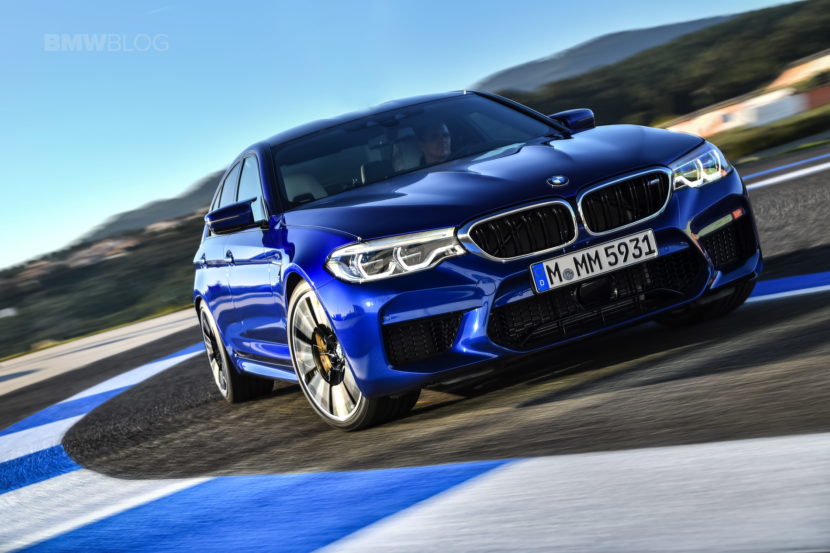 Power also comes on super smooth and linear, while torque is always available, even when you’re punching it in high gears. The shifts are extremely smooth, as it’s the case with the ZF boxes, so it’s really hard to tell if any customer will ever notice the lack of a DCT.
Power also comes on super smooth and linear, while torque is always available, even when you’re punching it in high gears. The shifts are extremely smooth, as it’s the case with the ZF boxes, so it’s really hard to tell if any customer will ever notice the lack of a DCT.
A few laps later and our lap times got progressively better as we’ve become accustomed to the M xDrive system which is not only forgiving, but it also makes you a better track driver. Not that many M5 customers will track these beasts.
Yet, we were craving some more fun. Da Costa gave the go-ahead and we quickly activated the M2 mode which brings the M5 in its more natural state – 2WD mode. We would call this “The Fun Mode” since is clearly designed to put a smile on your face allowing for some sideways and tire smoking when hitting the gas in mid-corners. If you turn off DSC, be aware that you really are on your own, in a car with 553 lb ft of torque.
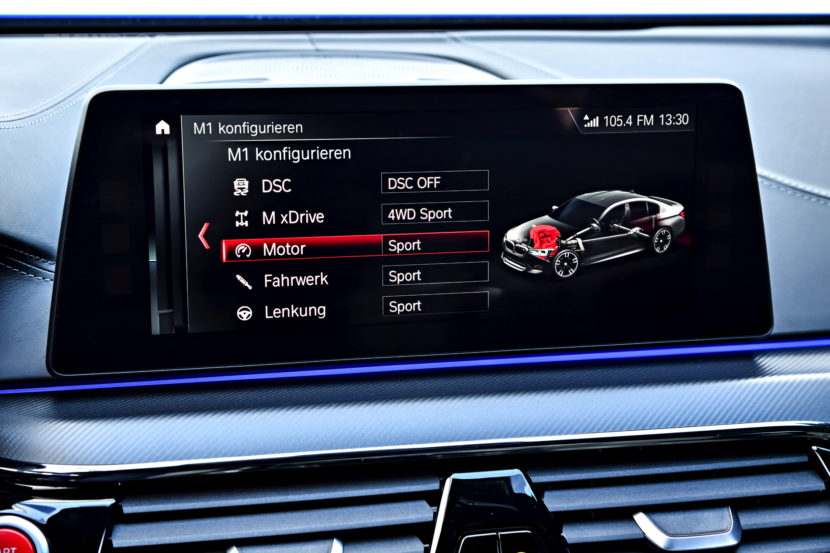 On this particular track, the Sport Plus for the chassis and Sport mode for the steering was the best combination, so with the rear-wheel drive mode activated the M5 was enjoying its free spirit. The power and the differential made the laps quite fun, while beautifully hiding its size and weight. In the end, this is still a two ton sedan. We also noticed Da Costa in front of us having some fun with the car as he flew through those corners with ease and from time to time giving us a slide to write about.
On this particular track, the Sport Plus for the chassis and Sport mode for the steering was the best combination, so with the rear-wheel drive mode activated the M5 was enjoying its free spirit. The power and the differential made the laps quite fun, while beautifully hiding its size and weight. In the end, this is still a two ton sedan. We also noticed Da Costa in front of us having some fun with the car as he flew through those corners with ease and from time to time giving us a slide to write about.
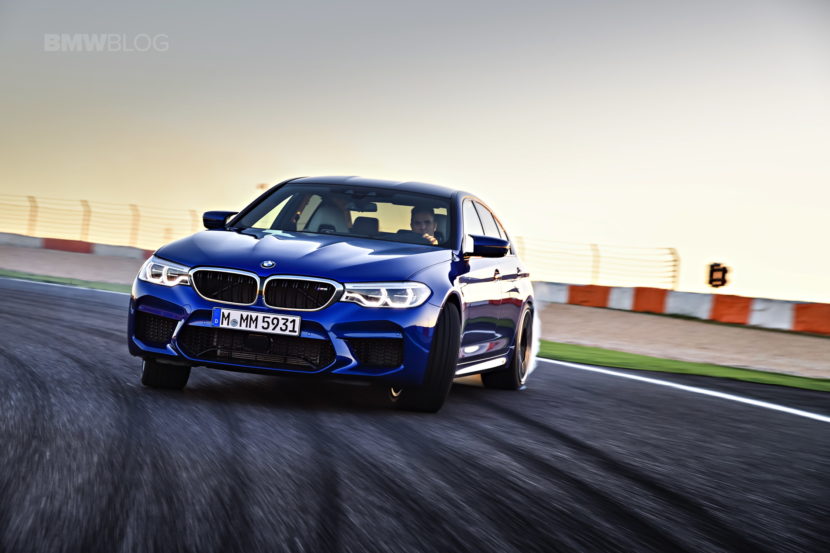 After tracking quite a few BMWs in the last few years, it’s fair to say that we’ve never had so much fun in a BMW. Yes, the M2 might still be our favorite due to its character, but the M5 truly is a track monster that would be a shame not to take it out for a few laps once in a while.
After tracking quite a few BMWs in the last few years, it’s fair to say that we’ve never had so much fun in a BMW. Yes, the M2 might still be our favorite due to its character, but the M5 truly is a track monster that would be a shame not to take it out for a few laps once in a while.
On The Road
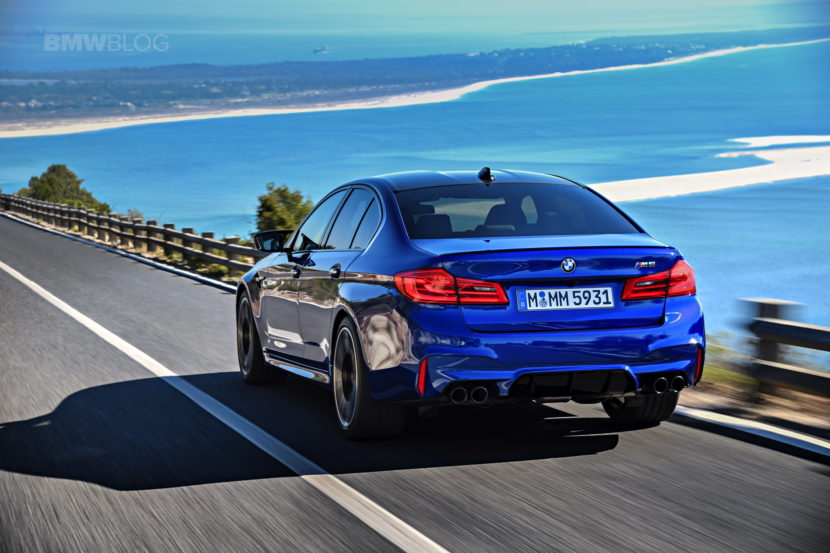 The demographic of the M5 is significantly different than the one for the M2/M3/M4. The maturity of those drivers demand different settings and features from their M5, and it’s fair to say that most of the M5s sold never see the race tracks in their lifetime. So with that in mind, BMW had to create the perfectly balanced power business sedan, one that will allow for comfortable and fun family road trips or daily commutes.
The demographic of the M5 is significantly different than the one for the M2/M3/M4. The maturity of those drivers demand different settings and features from their M5, and it’s fair to say that most of the M5s sold never see the race tracks in their lifetime. So with that in mind, BMW had to create the perfectly balanced power business sedan, one that will allow for comfortable and fun family road trips or daily commutes.
To see the M5 in its more natural surroundings, we headed for a ride along Lisbon and Sintra, where once again we were mesmerized by the beautiful landscapes and perfectly-shaped curvy roads. The tighter, twistier backroads require the Sport model to improve body roll, so we happily obliged to do so. The M5’s weight is tied down more rigidly, enhancing the steering feedback and response from the chassis. Changes from the ZF eight-speed are quick and without any of the jerkiness of the DCT, so that should keep the new M5 owners happy.
The M5 felt remarkably light on its feet around Sintra which also gets his fame from the World Rally Championship, while the motorway driving was uneventful and calm, as you’d expect from a business sedan.
 A few hours later and the conclusion becomes clear. BMW M has addressed all of the weak points of its previous F10 model. The F90 not only gets more power to be in-line with its competitors, but it’s also faster, sportier, safer, more premium and refined. It’s also a modern car with the latest and greatest BMW tech, inside and outside, so the $100,000 price tag is certainly justified.
A few hours later and the conclusion becomes clear. BMW M has addressed all of the weak points of its previous F10 model. The F90 not only gets more power to be in-line with its competitors, but it’s also faster, sportier, safer, more premium and refined. It’s also a modern car with the latest and greatest BMW tech, inside and outside, so the $100,000 price tag is certainly justified.




